EXERCISE Talisman Sabre 2017 (TS17) wrapped up at the end of August for another two years, here in Central Queensland. In the final week of the exercise, a media opportunity became available for Aviation Spotters Online (ASO) to attend and capture a small part of the operations on board one of the key players of TS17, the USS Bonhomme Richard, which was operating in conjunction with the 31st Marine Expeditionary Unit (31st MEU).
Exercise Talisman Saber, held every 2 years, is a combined series of joint military training exercises primarily between the United States military and the Australian Defence Force, focused on the planning and conduct of mid-intensity ‘high end’ war fighting. New Zealand, Japan and Canada also played a minor role, as part of 33 000 plus personnel. Representatives from 24 other nations were given the opportunity to observe portions of the exercise.
The exercises incorporate land-based, air and maritime activities conducted at various locations within the Northern Territory, Queensland and the Coral, Timor and Arafura Seas. The series of exercises are concentrated around the region in the Shoalwater Bay Military Training Area (SWBTA) on the coast of Central Queensland. The SWBTA region boasts a 4,545 km2 area for military training under the ownership of the Australian Defence Force, giving realistic and unique training to anywhere else seen in the world.
Some Facts for TS17
- 33 000+ Aus & US Troops involved
- 36 War Ships
- 220+ Aircraft
- The largest amphibious landing Australia has executed since World War II
- TS17 is the 7th Biannual Talisman Sabre exercise
- Exercise included Special forces, amphibious landings, parachuting, land force manoeuvres, urban operations, air operations, maritime operations and the coordinated firing of live ammunition and explosive ordnance from small arms, artillery, naval vessels and aircraft.
- TS17 also involved space and cyber challenges becoming more prominent of modern warfare.
- 4x U.S. Air Force and 1x RAAF C-17 Globemaster IIIs with more than 300 American and Canadian paratroopers flew 17hrs straight from Alaska to SWBTA direct, refueling air to air twice.
20th July 2017, Media Opportunity
THE morning has come and I’m quite anxious. After checking and making sure all my gear is cleaned, charged, memory cards are plenty and ready for action. I make my way down to the airport early, just in case I get an early call! I can view other movements around the airfield before my 10 am appointment. After meeting and chatting with local spotters, I make my way over to the Defence Support Group (DSG) Rockhampton or commonly known as ‘Camp Rocky’ during exercises. Walking through the Guard House boom gate, I’m met with Military Police and escorted to await the arrival of the Public Affairs (PA) officer to sign in. Whilst waiting, I wasn’t sure how many other media people were going to be with me, however soon enough more and more people started arriving through the gate. I introduced myself to many and I was surprised to see how many different international media were in attendance, which made me realise how fortunate I was! Given that this international event was happening in my back yard, I only had to travel 15 min from home to be here, where others had also organised their international and domestic flights! Shortly we were all gathered under the supervision of our various PA’s and taken to the open field where we stood under temporary tent for shade and briefed on the MV-22B arrival. In a matter of minutes, we were moved out onto the field to view and capture the arrival of our remarkable mode of transport.
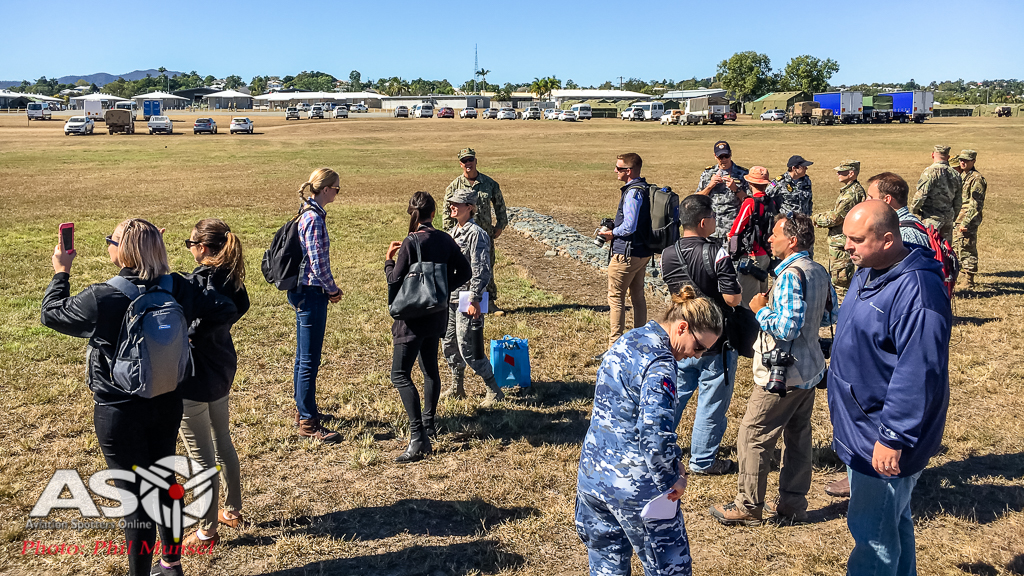
Media, Public Affairs Officers and associated staff assemble on the field awaiting their ride prior to departure.
MV-22B – Is an American multi-mission, tiltrotor military transport aircraft, the (M) is the U.S. Marine Corps variant. The USMC variant is an assault transport for troops, equipment and supplies, capable of operating from ships or expeditionary airfields ashore. The V-22, developed by Bell Helicopter and Boeing’s helicopter unit, the hybrid rotor-craft was designed to combine the functionality of a conventional helicopter letting it take off vertically, while also having the long-range, high-speed cruise performance of a turboprop aircraft when transitioned to a faster horizontal fixed-wing mode. The V-22 has had an extremely problematic research and development phase, being protracted & expensive, partly due to its extensive increases in costs, somewhat caused by the requirement to have the wing and rotors fold to fit aboard ships.
While originally intended to provide a unique mix of agility, speed, and range, the tilt-rotor aircraft has been persistently criticized as wildly expensive, ineffective, and unsafe. With its blown out budget costs, the Osprey has earned a reputation for being dangerous and unreliable, in part thanks to the inherent challenges of its tilt-rotor design. The V-22 has unfortunately gained the unofficial nickname the ‘Widowmaker’ given a series of fatal crashes in its early development. To date, at the time of writing the Osprey has had 12 airframe loss accidents that has resulted in a total of 42 fatalities since its early testing in 1991.
After a great number of problems behind them, the Marines are now using them widely in Afghanistan, and the Osprey is getting excellent reviews. The Osprey has demonstrated its worth in Afghanistan, one of the most stressful environments on earth. With few airfields, great distances between bases and sparse landing fields, the V-22 proved its versatility and value. The combination of speed and maneuverability also made the V-22 an ideal platform for special operations missions, combat search and rescue and aeromedical evacuation. The Marine Corps have developed a unique teaming relationship between V-22s and KC-130 tankers that extend the Osprey’s operational range by thousands of miles. Further reading on this with the VMM-268 ‘Red Dragons’ deployment from Hawaii to Australia can be found here.
Links below to video’s of the Force Multiplier Deployment from – Defence Video Imagery Distribution system (DVIDS)
General Specifications
- Role – Vertical/Short Take Off & Landing (V/STOL)
- National origin – United States
- Manufacturer – Bell Helicopter/Boeing Rotorcraft Systems
- Crew: Four (pilot, copilot and two flight engineers/crew chiefs)
- 24 troops (seated)
- Length: 57 ft 4 in (17.5 m)
- Prop-Rotor diameter: 38 ft 0 in (11.6 m)
- Width with prop-rotors: 84 ft 7 in (25.8 m)
- Height: overall with nacelles vertical (17 ft 11 in/5.5 m; at top of tailfins)
- Loaded weight: 47,500 lb (21,500 kg)
- Powerplant: 2 × Rolls-Royce Allison T406/AE 1107C-Liberty turboshafts, 6,150 hp (4,590 kW) each
- Maximum speed: 275 knots (509 km/h) at sea level
- Service ceiling: 25,000 ft (7,620 m)
Further insight and closer look into these extraordinary hybrid machines can be viewed here with fellow ASO team member Sid Mitchell’s report of the Marine’s Rotational Force Darwin and VMM 268 “Red Dragons” ‘Open Day’ earlier this year.
THE unmistakable sound of the Tiltrotor aircraft was heard before I could quickly pinpoint its position in the direction of the sun. For me, this is the second time I’ve seen the Osprey here in Rockhampton on exercise for Talisman Sabre, so the sound quickly brought back memories of this uncommon beast! It approached quite quickly transitioning from horizontal flight, setting up for vertical descent as it passed over us onto the corner of the dry grass field at Camp Rocky! We were cautioned earlier that as it lowers the debris would likely kick up and be thrown our way, so we could protect our eyes, cameras and anything else we valued.

USMC MV-22B Osprey from VMM-265 ‘Dragons’ approaches for landing at ‘Camp Rocky’ adjacent to Rockhampton Airport, Queensland, Australia, during Exercise Talisman Sabre 2017.
ONCE on terra firma, the beast was throttled back and subdued to a gentle idle. Even at idle the 2x 38 ft prop-rotor diameter blades made some serious chop to the warming subtropical air and creating some deceptive downwash!
From afar we eagerly awaited and watched as the previous passengers alighted, I studied their faces/reactions closely to see if I could gauge what it might have been like on their commute ashore.
WITH mixed emotions running rich and anticipation growing, I noticed the flight engineer had delivered his cargo and was making his way over to us. A quick chat with some officials and he headed back to acquire two bags of safety equipment for us. For the flight engineer, it looked like just another routine day for him.
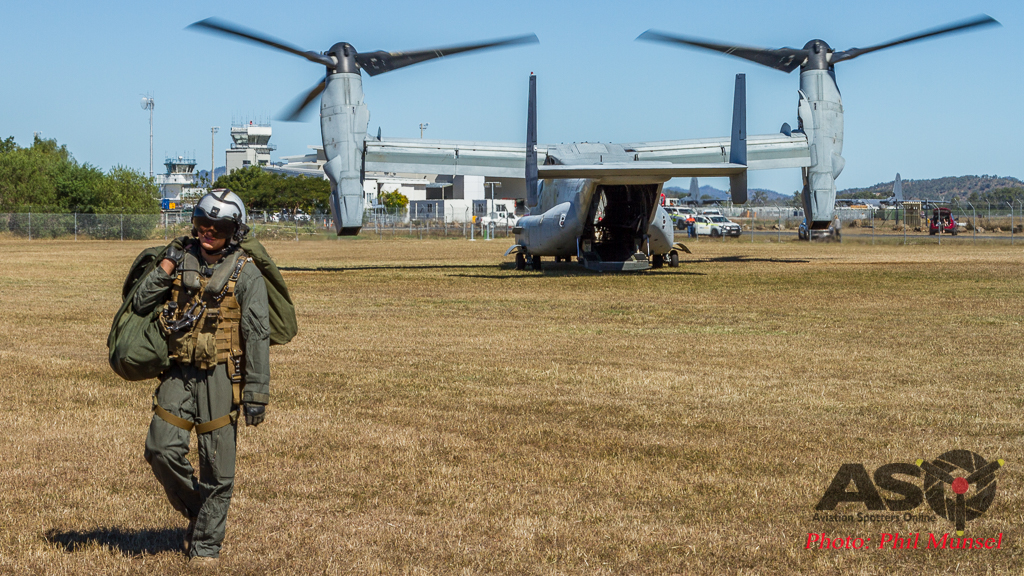
MV-22B Osprey crew Flight Engineer hauls a bag of safety personal flotation devices and skull caps for the next passengers.
WITH the Osprey still ‘turnin & burnin’ the flight engineer was keen for us to hustle, so there was a quick empty of the bags with distribution of safety equipment. The safety ensemble consisted of the personal flotation devices (PFD’s), having 30-45 sec of breathable air, head protection assemblies with incorporated goggles and hearing protectors (ear muffs).
ONCE we were checked, re-checked and head counted we were off, making our way, following the leader in single file towards the flying ‘Transformer’! Right then my heart was beating fast, almost as fast as the large prop-rotor’s of the Osprey! I was thinking ‘This is it! Its going to happen! I’m actually going to fly in an Osprey and land on a moving operational warship!’ This opportunity is one many people don’t get, even when they work in the military! I had a smile from ear to ear and I had to be mindful to keep taking photos so I could remember and share this day with others. Trying to concentrate and take photos, while trying to absorb the moment was playing havoc with my emotions!
JUST before boarding, I noticed people, rubber-neckers, spotters, intrigued and passers-by outside the fence had grown in numbers dramatically to watch this captivating piece of machinery and wondering who were those people getting in it! I know how lucky I was, as I’m usually the one standing on the other side of the fence!
We board and take our seats, sitting shoulder to shoulder as the light canvas material seats are positioned down each side of the aircraft facing inwards. Strapping in, is with a 5 point harness that takes a second to understand, with all connecting together at a common point for quick release and egress if needed. I was a little overwhelmed, trying to be quick not to be the one that holds everyone up, yet trying to deal with my two cameras around my neck, camera bag and fumbling to strap in with the PFD that’s strapped to me – In the back of my mind….thinking to myself, what happens if we need to ditch! Will all this tangle me from getting out!…..Excitement overpowered and I continued taking it all in! Strapped in with little movement, I tried to look around and the noise of the hydraulics, gearbox and interconnected driveshafts was overpowering, even with ear protection! I craned my neck to look out the only window directly behind me, which looked to bedirty and hard to see out of. Inside is a fully exposed airframe, viewing all the systems of the aircraft. I was amazed at the plethora of electrical wiring, pneumatic and hydraulic lines spanning from one end to the other, all doing their bit to keep this monster functioning. As the flight engineer works his way up and down the aisle checking & helping others strapping in, I noticed many people capturing the moment on their phones and some just trying to talk to the person next to them….the excitement was building!

USMC MV-22B Osprey departs ‘Camp Rocky’ for USS Bonhomme Richard, as the flight engineer looks on, the passengers and people below capture the experience!
THE flight engineer does a few more passes and double checking his headcount tapping us as he passes. Once he is satisfied and comms to the crew, we feel and hear the engines increase in power. We don’t move straight away, but my guess was that the crew up front were making sure all systems, engine temps and parameters were working in range before we departed. After what feels like a lifetime….probably only a minute or so, we lift off with the sound and force of the engines and rotor blades changing pitch….Its hard to describe the feeling and noise, but the Thump! of those blades spinning, goes right through you. As the speed increased, the blade thump grew faster which leaned out to a slight vibration, floating on a cushion of air. I had a smile from ear to ear like a kid on Christmas morning, looking out the back cargo ramp leaving ‘Camp Rocky’ for the Bonnie Dick.
Our transition from take off hover to forward flight happens quickly (approx 15-20 sec) as I try to capture it on my cameras in all directions, while still trying to take it all in! As the engines transitioned to horizontal. Everyone swayed rearward, which felt like a giant was about to throw us like a paper plane! The maximum tilt rate for the engine nacelle is 8° per second, which can knock down a crew member or even throw them out the back. Luckily, our pilots were gentle on us that day! The wheels were retracted with a thunk, as we climbed out of Rockhampton, turning quickly on route, as we are pushed into our seats again with minimal G force.

Making way over the Capricorn Coast towards the Wasp-class amphibious assault ship – USS Bonhomme Richard (BHR).
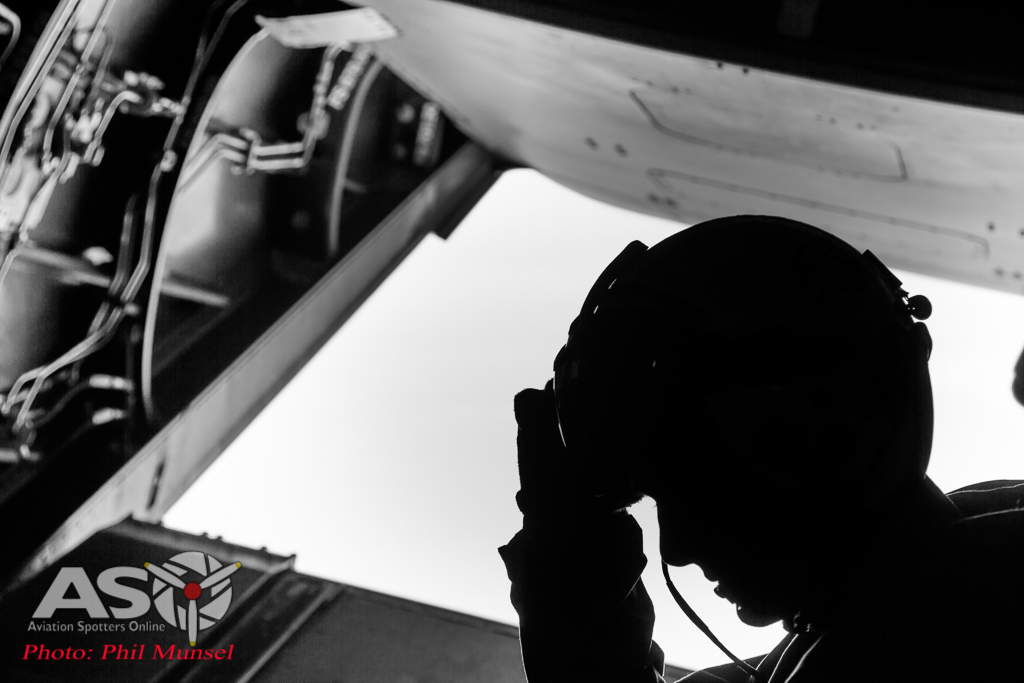
The MV-22B Osprey Flight Engineer takes a brief moment during the ferry flight, before he is required to aid his 3 fellow crew mates in landing on the moving Bonnie Dick!

Transitioning and preparing to land on the deck, the flight engineer monitors the rear section for safe arrival.
IT was great to observe my current stomping ground from a different perspective, as we passed over suburbia, slowly thinning as we crossed the Mt Archer ranges and national parks leading into grazing land until we near and cross the coastline. By this time we were in full cruise mode (Cruise is from 170-240 knots). The flight from ‘Camp Rocky’ to ship is not very long, a positive for this aircraft, having a much longer range than its counterpart, helicopters. The Osprey has a ferry range up to 2100 nmi (3889km) or operational range of 1100 nmi (2037km).
With my smile never leaving my face, I looked around and wondered why some others were not feeling the same as me! Some looked like this is just another plane ride, while others looked like they couldn’t wait until it’s over! After a straight and level flight for a while over water, and with everyone more relaxed, the crew up front decide to do a few tight G turns without warning! Whatever the reason, I believed it was to give us all a little jolly before we landed! Shortly after, we joined a wide landing circuit as we slowed to a lower speed. Everyone was focused on the rear cargo door to try and see something outside other than endless deep blue ocean as we descended. We slowed to a much lower speed and the engines started their transition again to the vertical in conjunction with lowering the landing gear. As we came to a crawl hovering, we slowly drifted sideways and caught sight of the flight deck moving under us. I could feel the pilot feeding slight corrections to counteract the strong downwash, as only one prop-rotor overflies the deck, while the other hangs out over the water resulting in an immediate lift asymmetry. Above the ships deck by only a few metres, the pilot steadied the beast, then a quick controlled plunge brought it down on deck. We waited while the deck crew secured the Osprey with chains, to prevent us inadvertently moving with engines still running at full idle. We made it!
THE USS BONHOMME RICHARD (LHD-6, Landing Helicopter Dock #6) is one of eight Wasp-Class Amphibious Assault Ships forward-deployed to Sasebo, Japan. The BHR is the main battle platform of the Expeditionary Strike Group 7 and is currently teamed with forward-deployed 31st Marine Expeditionary Unit (31st MEU). The BHR primary mission is to embark, deploy and land elements of a Marine Landing Force in amphibious assault operations by helicopter, landing craft, amphibious vehicle or any combination of these methods.
- Displacement: 40,500 tons
- Dimensions: 844 ft long, 106 ft wide
- Speed 20+ knots
- Crew 1200, Troop carrying capacity 1800
- Cost $1.1 Billion
- Range 17,600 km at 18 knots
US Navy have set coloured shirts(vests) for crews working aboard ship flight decks. Each colour represents certain roles they would perform during their duties of operations.
As a general…..
- Yellow – Aircraft Handlers/Plane directors
- Purple – Aviation Fuel Handlers
- Red – Ordinance/Crash/Salvage/Firefighter
- Green – Catapult and arresting gear crews/Air Wing Maintenance/Cargo-handling
- Brown – Air Wing Plane Captains
- Blue – Plane Handlers/Tractor drivers/Messengers
- White – Safety Observers/Landing Signal Officer/Air Transfer Officers/Medical
- White/Black – Final checker (inspector)
WE were met at the rear of the aircraft by a White Shirt who led us in single file away from the back ramp, but not too far as we would run into another Helicopter, a CH-53E Super Stallion (with a 7 blade rotor diameter of 24 meters) ‘Turnin and Burnin’ waiting for its green light to lift off! We cut 90° left towards the ships island and then left again along parallel walking past our Osprey and into a briefing room under watchful eyes of numerous deck crew. Something I had not been ready for, when stepping on the ships deck was the huge amounts of downwash the V-22 rotor-blades were generating even at idle!! From my knee down was a constant force of hot air that felt like someone was trying to kick my feet from under me every time I took a step!
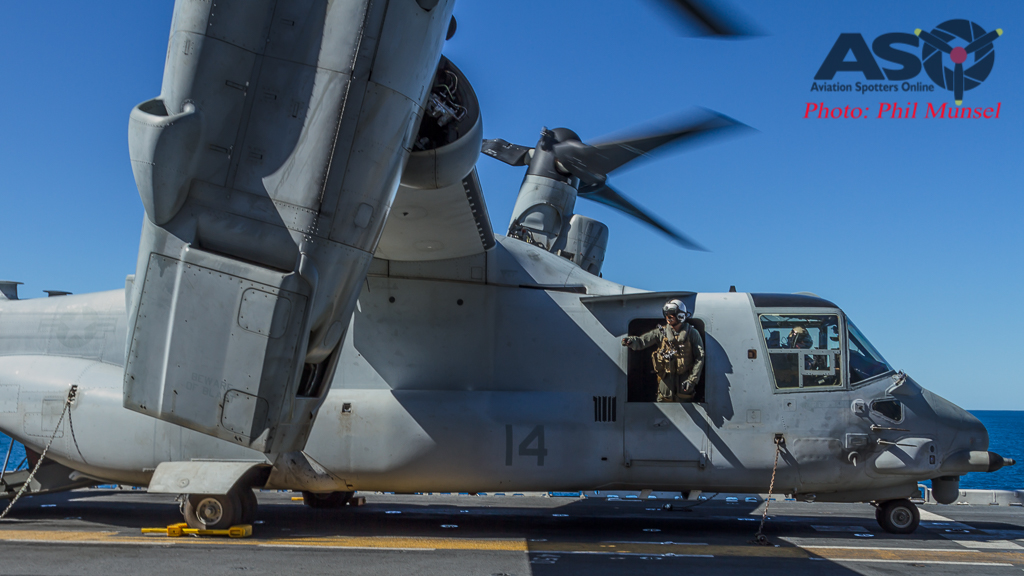
The forward flight engineer observes from the MV-22B which is chained down to prevent movement on the deck.
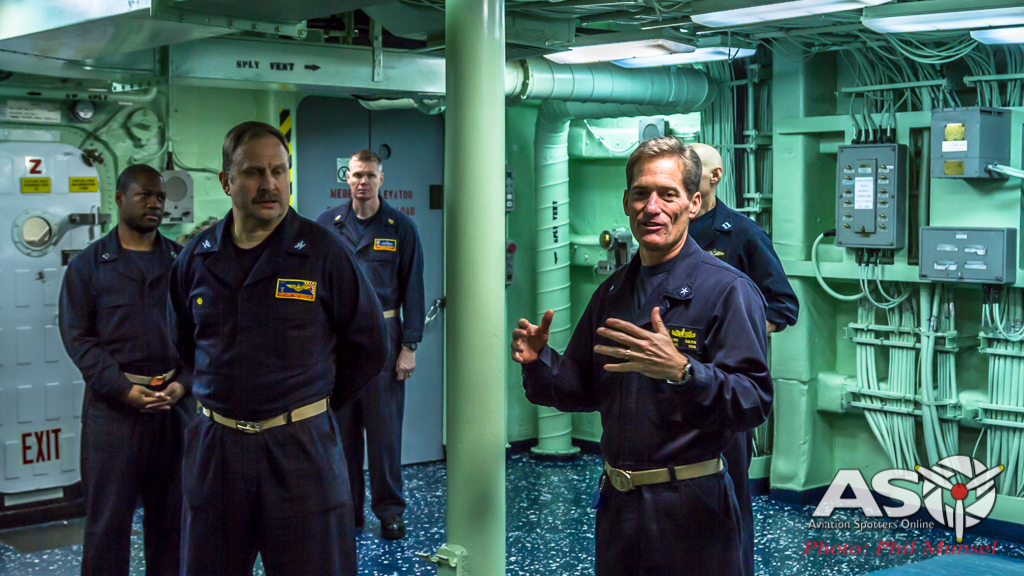
A warm greeting from Rear Admiral Marc Dalton (right), Commander of the Amphibious Force 7th Fleet and CAPT Larry G. McCullen (left), Commanding Officer, USS Bonhomme Richard (LHD 6).
WE congregated in a clean and brightly coloured pastel green room (again with exposed systems of pipes and wiring) where we removed our personal safety equipment, which was collected and taken away promptly. A few welcome speeches as we worked our way up through the ranks to a warm welcome from Rear Admiral Marc Dalton, Commander of the Amphibious Force 7th Fleet and CAPT Larry G. McCullen, Commanding Officer, USS Bonhomme Richard (LHD 6). After a quick brief on what to expect, we moved through the doors and upward a few floors via narrow, steep ladder-like steel stairways, passing crew on each level giving way to us, waiting to continue on with their duties. As we emerged through the steel rectangular door onto a viewing deck to observe aircraft operations at sea, I got straight into capturing as much as possible from this great viewpoint! Fighting for space with others I ended up working my way further forward to get better a perspective. From here we observed many movements, including numerous takeoff and landings from Osprey, Sea Stallion and Seahawk aircraft! Unfortunately the AV-8B Harriers were not operating that day. For me this was the highlight aboard the ship, being so close to aircraft operating. At one point I thought to myself, those blades are so close you could almost feel like you could touch them….just keep shooting them (with your camera)!
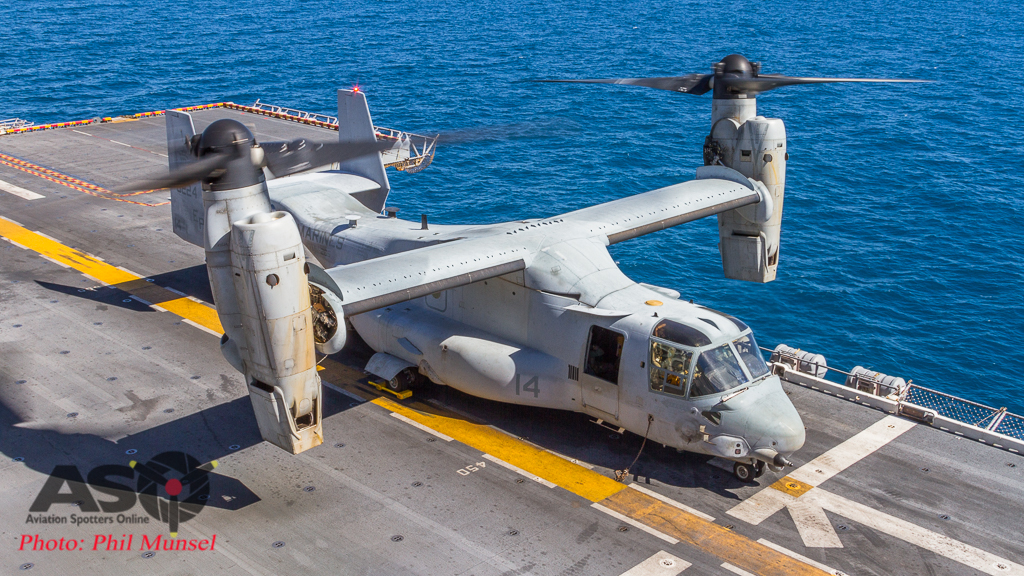
From a few floors up we observe flight operations on the USS Bonhomme Richard (LHD-6). MV-22B Osprey prepares for takeoff.

A MH-60S Seahawk, assigned to the “Island Knights” of Helicopter Sea Combat Squadron (HSC) 25 takes off from the BHR.
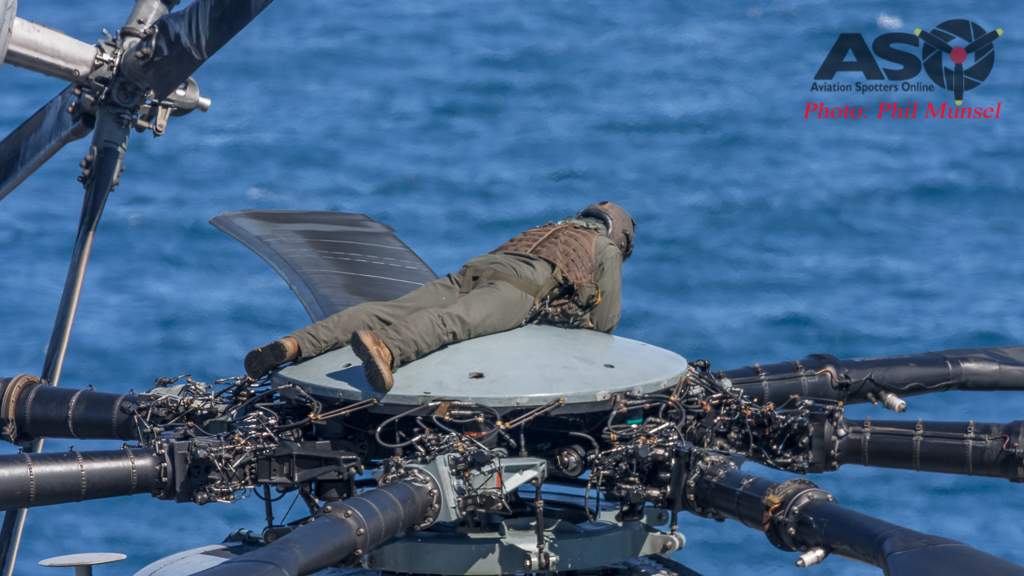
Crew from one of the CH-53E Super Stallion’s conducts some checks on the massive 7 blade rotor head.
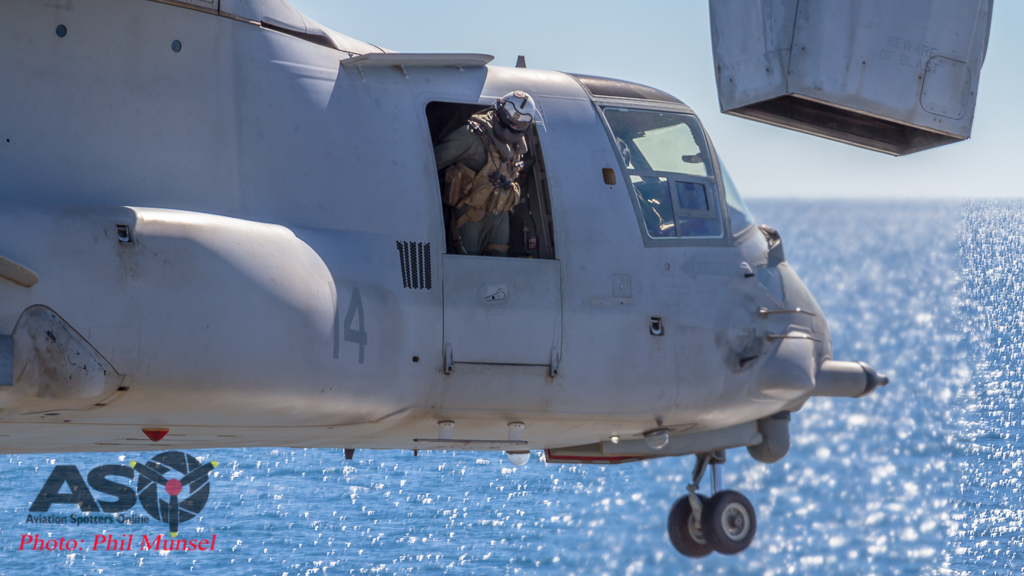
MV-22B Osprey Flight Engineer observes and gives pilot crucial information with safety and positioning as they depart for another sortie.

MV-22B Osprey departing the USS BHR as it transitions it’s two large prop-rotors to horizontal flight.
IT didn’t seem long before they came along and asked us if we had captured what we wanted to get. I wanted to stay longer, but thought I better keep going and not hold the group up. We returned the way we came up, but this time went further down the ladder steps of this 14 level ship, making our way into the maintenance hangar below ships deck. Emerging into the hangar bay, I noticed another Osprey under maintenance and the large opening in the side of the ship, which is the large elevator used to move aircraft between this maintenance deck and the upper deck. Around the centre area adjacent to the elevator sat a lone Seahawk folded away & tied down for stowage. Moving on like a kid in a candy store, carefully watching not to trip over the low strung chains, as we pass AV-8B harriers both in maintenance and stowage.
PASSING engines exposed and ducking under wings we came to our first interview with female pilot, Capt. Kelsey Casey, assigned to the AV-8B Harrier “Tomcats” of Marine Attack Squadron (VMA) 311. Capt. Kelsey Casey described the Harrier she flies and the squadrons role in the exercise, and what its like to be a female in a male dominated role. She also goes on to explain that this will be the last Harrier deployed squadron to support the 31st MEU from a forward deployed station and ending an era for the Marine Corps’ AV-8B Harrier community in the Indo-Asia-Pacific region. The new F-35B Lightning II JSF is being planned to be phased in with the 31st MEU sometime in the near future.

Interview being conducted with AV-8B pilot, Capt. Kelsey Casey, from San Francisco, assigned to the “Tomcats” of Marine Attack Squadron (VMA) 311.

Pilot, Capt. Kelsey Casey, assigned to the “Tomcats” of Marine Attack Squadron (VMA) 311, explaining the AV-8B II Harrier to the media.
NEXT, we headed back to where we first entered the maintenance bay. With the Osprey under maintenance as our backdrop for our next interview, with Marine Capt. Charles Randolph, Osprey pilot assigned to the “Dragons” of Marine Medium Tiltrotor Squadron (VMM) 265. Cpt C. Randolph first gave a brief description of the aircraft with facts and figures, then explained the Osprey’s role with the USMC. Explaining its multi role options with aerial deliveries via parachute or under-slung loads, remote delivery of fuel, airborne command & control, battle field illumination with parachute flares and the unlimited range when utilizing aerial tankers. Cpt C. Randolph went on to talk about how relatively easy the aircraft is to fly, due to the fly by wire and flight control computers, however certain situations are difficult like operating off the ship. Training is a little more involved with advanced learning of flying both fixed wing and rotary wing aircraft.

Marine Capt. Charles Randolph, Osprey pilot assigned to the “Dragons” of Marine Medium Tiltrotor Squadron (VMM) 265, taking questions during a media interview.

Progressing to the lower decks including the Well Deck, that hold and launch various vehicles and amphibious craft.
AFTER 10 minutes we to moved on to the next station further down to the lower depths of the ship including the Well Deck. Pushing on we descended down a large vehicle ramp where we were briefed on the large area we are standing in and what different uses it has with stores/supplies, all terrain and amphibious assault vehicles. A small display of different Unmanned Aerial Vehicles (UAV) drone technology was shown to us, explaining the advancements of the battlefield, where its heading and how it being used in the current exercise in their testing phase.
We only had to walk a little further closer to the Well Deck ramp to be welcomed by further crew who explained the majority role the Bonhomme Richard plays with Amphibious Assault landing craft. The Bonhomme Richard can lower itself in the water to flood the Well Deck and allow amphibious craft to embark or dock inside the Well Deck through a ramp-covered opening in the stern, then raise itself back up to put the Well Deck several feet above sea level. The Well Deck can house 3x Landing Craft Air Cushion (LCAC) which can travel more than 45 mph over sea & land helping the Marines and their equipment penetrate deep into the battle zone from a ship on the horizon. The 26m long by 14m wide LCAC is crewed by 5 and powered by 4x gas turbines (2 for lift/2 for drive) to a total of 16000 HP. It is able to access 70% of the worlds coastline with the cushion of air and support the 60 ton heavy payloads if required.
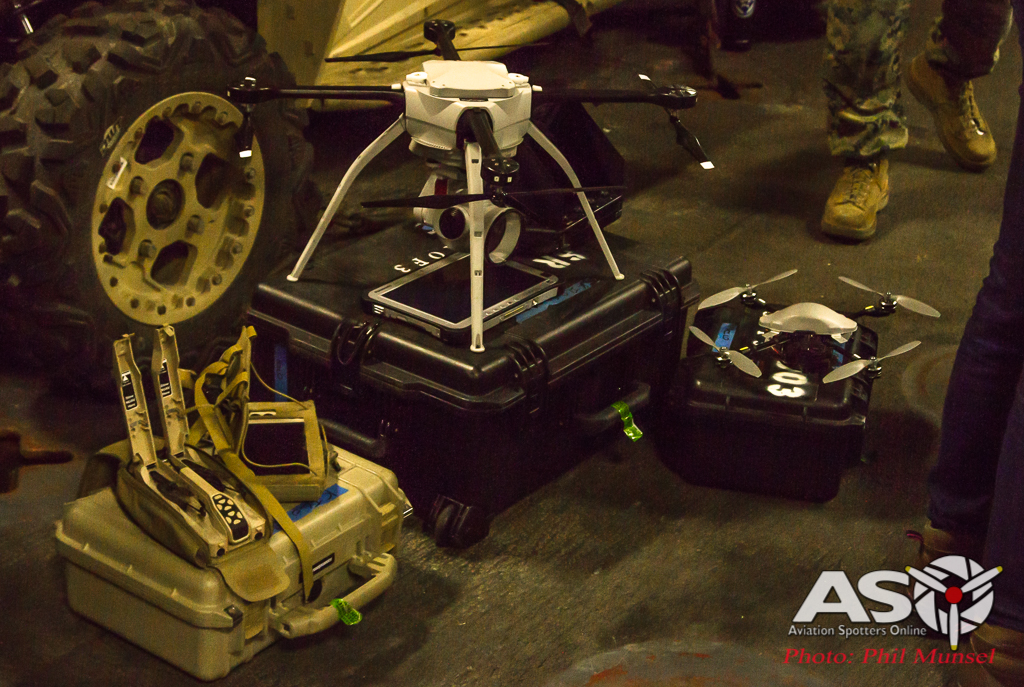
Unmanned Aerial Vehicles (UAV) are becoming increasingly common to enhance capabilities within the military.
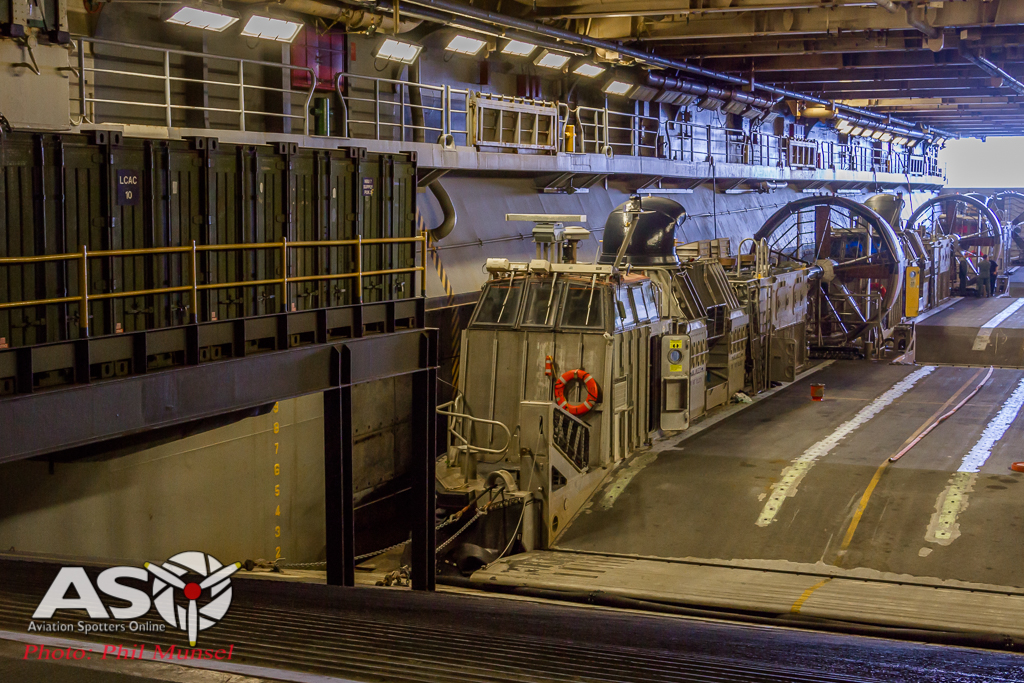
The Well Deck which floods with water to launch the landing craft air cushion (LCAC). The USS BHR carries 3x LCAC’s

Chief Mineman Philip E. Phillips, craftmaster of landing craft air cushion (LCAC) 21, assigned to Naval Beach Unit (NBU) 7, describes the capabilities of an LCAC.

Media tour continuing, Capt. Kurt Eichenmuller, senior medical officer of the USS Bonhomme Richard, describes the capabilities of the medical ward.
AS we moved on further through the mini floating city, we arrived in what looked to be a medical training room that doubles as a operating theatre if required. Capt. Kurt Eichenmuller, senior medical officer, described to us the medical emergency response capabilities of the medical ward and its capacity on the assault ship. From the corridors we observed this mini 600 bed hospital with 6 operating rooms and a 15 bed ICU and other rooms used for medical records, consults, surgery, recovery, first aid and even noted the x-rays back lit hanging on the corridor walls.
While being toured through the corridors, we are ushered into the wardroom which is set up for formal interviews. The room has large long tables lined in deep blue table cloths and chairs with their own matching covers trimmed in yellow/gold with accompanying Bonhomme Richard Logo. The centre, forward and aft tables were prepared with a napkin and large glass of water chilled with ice. I placed my cameras down, took a load off and re-hydrated as our crew guides were organising in the background.
Shortly, key leaders of the U.S./Australia Expeditionary Strike Group (ESG) entered the room for the interview and we were once again welcomed aboard. Commanders…..Capt. Larry McCullen, Commanding Officer of the USS Bonhomme Richard, Col. Tye Wallace, Commanding Officer of the 31st Marine Expeditionary Unit (MEU), Capt. George Doyon, Commodore, Amphibious Squadron 11, Royal Australian Navy Captain, Guy Holthouse, ESG Sea Combat Commander, Royal Australian Navy Commodore Mal Wise, Maritime Component Commander, United States Navy, Rear Admiral Marc Dalton, Commander, Amphibious Force Seventh Fleet, each taking their turn in introducing themselves and explaining their role with the fleet and how they fit in with the exercise. Essentially reinforcing that TS17 so far being successful and that US and Australian defence have been building on their long-standing alliances. Talisman Saber being an invaluable exercise to achieve interoperability and strengthen ties working side-by-side and further developing capabilities with our partners. The exercise gives opportunities exploring state-of-the-art concepts and technologies to prepare for future battles.

Lead commanders from the Talisman Sabre 2017 U.S./Australia Expeditionary Strike Group (ESG) speak to media personnel about the joint exercise. Capt. Larry McCullen (left), Commanding Officer of the USS Bonhomme Richard, Col. Tye Wallace (center left), Commanding Officer of the 31st Marine Expeditionary Unit (MEU), Capt. George Doyon (center right), Commodore, Amphibious Squadron 11 and Royal Australian Navy, Captain Guy Holthouse, ESG Sea Combat Commander.
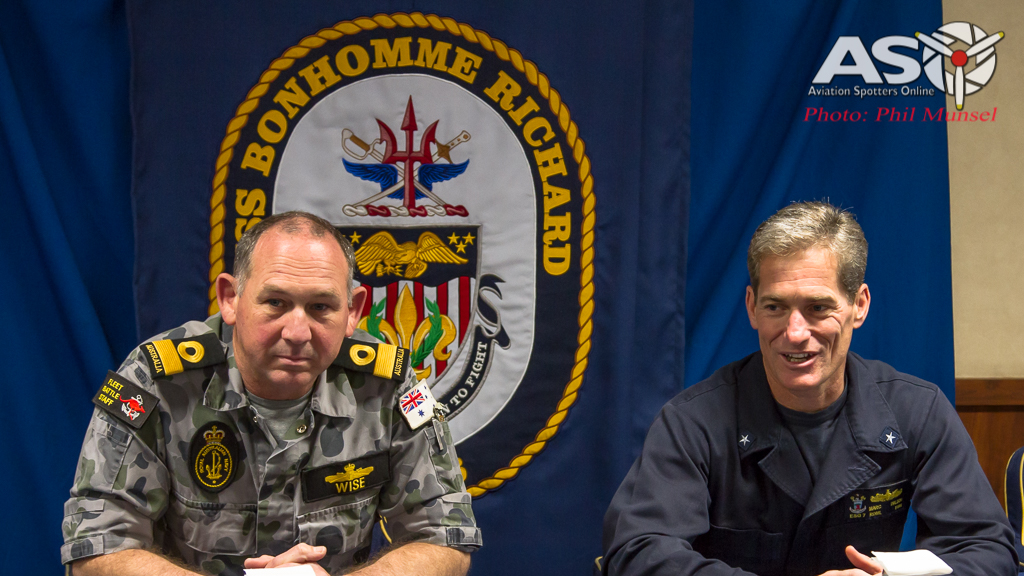
Royal Australian Navy Commodore Mal Wise (left), Maritime Component Commander speaks alongside United States Navy, Rear Admiral Marc Dalton (right), Commander, Amphibious Force Seventh Fleet.
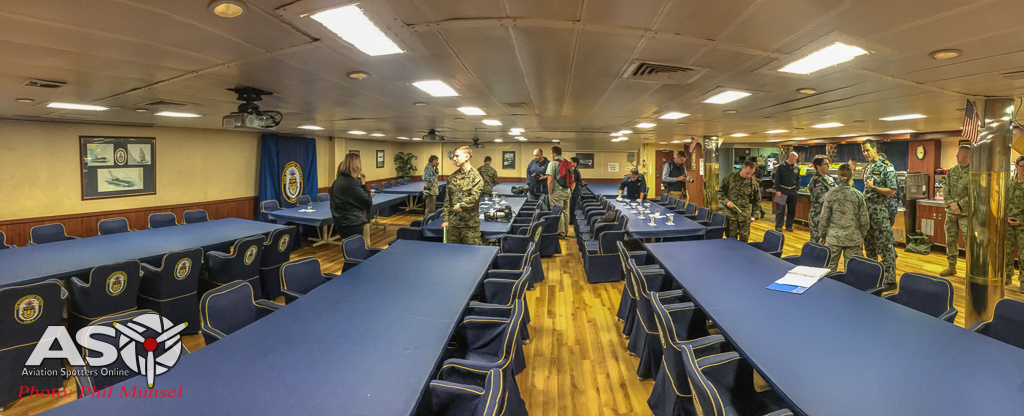
The wardroom of the amphibious assault ship USS Bonhomme Richard during Talisman Saber 17, where media spoke with key leaders of the U.S./Australia expeditionary strike group (ESG).
WITH the last hour passed, it was time to head back to the first room we stepped foot in when we first arrived, to prepare for our trip back home. Assembled together again we were handed our personal safety devices, helmets/hearing protection and goggles while we were given our final thank you brief. A couple of us had it sorted out in a minute or two, while others were still trying to work them out! I took the time to wander around and chatted to a few of the fellow media, trying to calm the excitement before our second Osprey ride! Final goodbyes and we were led in single file again outside and down the deck, way aft, passing live and loud aircraft so close on my right and parked helicopters/General Service Equipment (GSE) and AV-8B harriers on my left, angle parked in a row. As soon as I stepped outside, all my senses went wild, my adrenaline and heart rate instantly accelerated off the chart! Trying to concentrate and be aware of the potential dangers, taking photos and remembering about the strong downwash gusting at my lower legs, while trying to take everything in around me. Walking to the aft of the ship we swung around the back of the Osprey operating at idle and I noticed it was the same aircraft that brought us here earlier.
ONE by one we chose our seats and immediately began to harness ourselves to our hybrid transforming instrument of war, waiting to eject us from this heavyweight hardened vessel. Once strapped in and checked, we were given the green light…engines surged to life….along with excitement as I pointed my attention out the back cargo opening. Swaying to and fro rapidly in my seat as we lifted off and cleared the deck with no delay, peeling off into the wind as we climbed and turned a gradual circuit. Continuing to climb and turn simultaneously I noticed we completed a full circle as we saw the Bonhomme Richard come into view again out the back, only at a much higher altitude. The flight cruising back was much the same as the trip out 3 hours earlier, but this time the pilot decided to do an evasive maneuver (again without notice) pulling back hard on the controls, we violently climbed rapidly and before I realised what had happened, we leveled off! I look around with a big smirk on my face to see if anyone else felt the same…what a rush!

Final view of the USS Bonhomme Richard (LHD-6), in the Shoalwater Bay Training Area (SWBTA) during Talisman Sabre 2017 (TS17).
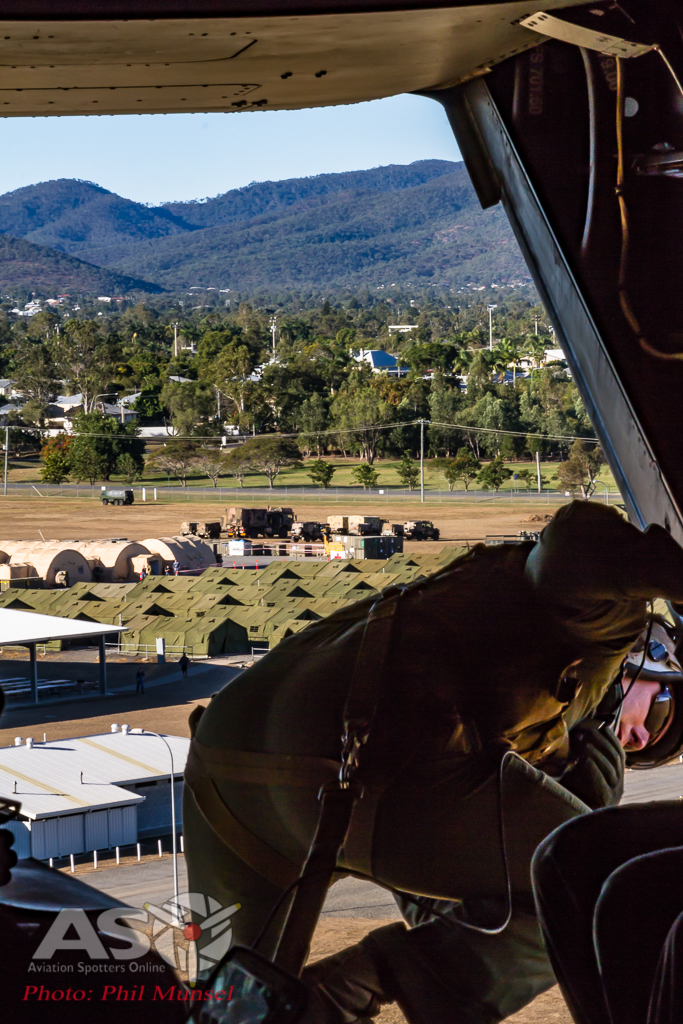
As we make our final decent over ‘Camp Rocky’, VM-22B Osprey Flight Engineer, keeps watch out the rear for safe arrival.
FOLLOWING the countryside bellow us, I recognised certain features and landmarks making a mental picture of where we are in relation to our destination. When we broke over the range, suburbia came into view and we began our gradual descent. I must say, even though I have lived in this relatively small town for over 10 years, I found it hard at times to guess what rooftops we were overflying but when we overflew the Fitzroy river, I knew we were on finals for landing. Transformed and wheels down, plenty of onlookers from below, we approached over ‘Camp Rocky’ again gradually sinking, clearing the field of dust and grass for our arrival! Setting down and the engines start to rest…I thought to myself, I don’t want this to be over! from the rear we are directed out closely resembling single file to a safe area, where we can take off our flight safety ensemble. The crew collected all safety equipment and humped it back to the half-breed helicopter/plane at idle. Soon the Osprey’s Rolls-Royce T406’s powered up, creating a mini dust storm. As the crew completed their observation checks and the rear loading ramp raised, the MV-22B climbed out of ‘Camp Rocky’ making a left orbit back towards the ship, leaving behind the distinct beat of the prop-rotors echoing in the sky.
MISHAP
ON the 5th August, off the coast of Australia in the vicinity of Shoalwater Bay Training Area about 18 miles offshore, between Cape Manifold and Cape Clinton, an MV-22B Osprey was involved in a mishap around 4:00 p.m. local time, Twenty-three of 26 personnel aboard were rescued. The MV-22B was assigned to Marine Medium Tiltrotor Squadron 265 (Reinforced), 31st Marine Expeditionary Unit. The aircraft involved in the mishap had launched from the USS Bonhomme Richard (LHD 6) and was conducting final approach to the USS Green Bay when the aircraft entered the water. The ship’s small boats and aircraft immediately responded in the search and rescue efforts. The 31st MEU was operating with the Bonhomme Richard Expeditionary Strike Group as part of a regularly-scheduled deployment (Exercise Talisman Sabre) in the Indo-Asia-Pacific region.
Unfortunately on 6th August at around 3:00 a.m. local time, the U.S. Navy and Marine Corps suspended search and rescue operations for three missing Marines involved in the mishap and operations in a water depth of about 50m were shifted to recovery efforts. The Australian defence force volunteered to help with the recovery and proceeded to work alongside their international partners deploying the hydrographic survey vessel, HMAS Melville and The Royal Australian Navy Clearance Diving team. Other vessels including the salvage ship USNS Salvor were also noted to be working as part of the recovery efforts. The MV-22B Osprey was recovered and towed upside down on a barge, escorted to Townsville. The wreck said to be transported to a commercial storage facility in Townsville to be prepared for its return to the US.
The three Marines – A pilot, a crew chief and an artilleryman were killed in the mishap involving the MV-22B from the Marine Medium Tiltrotor Squadron 265 ‘Dragons’. Sadly, 1st Lt. Benjamin Robert Cross, Cpl. Nathan Ordway and Pfc. Ruben Velasco – were officially declared deceased following extensive search and rescue efforts. The three Marines were returned home to their final destination as determined by the families.

Marines and Sailors aboard the Bonhomme Richard, join together to honor and remember the 3x Marines lost. (Photo Credit – U.S. Navy Mass Communication Specialist 2nd Class Diana Quinlan)
ASO Acknowledgment
As aviation photographers here at Aviation Spotters Online (ASO), part of our mission is striving ways to capture the military in positive light for many to see. With each of our team members having some form of military connection, we feel it necessary to acknowledge this unfortunate tragedy. We would like to convey our deepest and sincere sympathies to all families, friends, Marines and all involved who were affected. From the team at ASO and our families, our thoughts and prayers are with you all.
It is with great respect and sadness, that I offer this article as a tribute.
I would like to thank my team at ASO, Public Relations Officers from Combined Joint Information Bureau and all crew involved aboard the USS Bonhomme Richard for the opportunity.
Many Thanks, Phil Munsel
phil@aviationspottersonline.com
My gear on the day was Canon 40D/7D, Canon 100mm-400mm, 24mm-105mm with a SanDisk cards.
The complete 300+ pictures captured on my experience to the USS Bonhomme Richard (LHD-6) can be viewed in the gallery bellow.

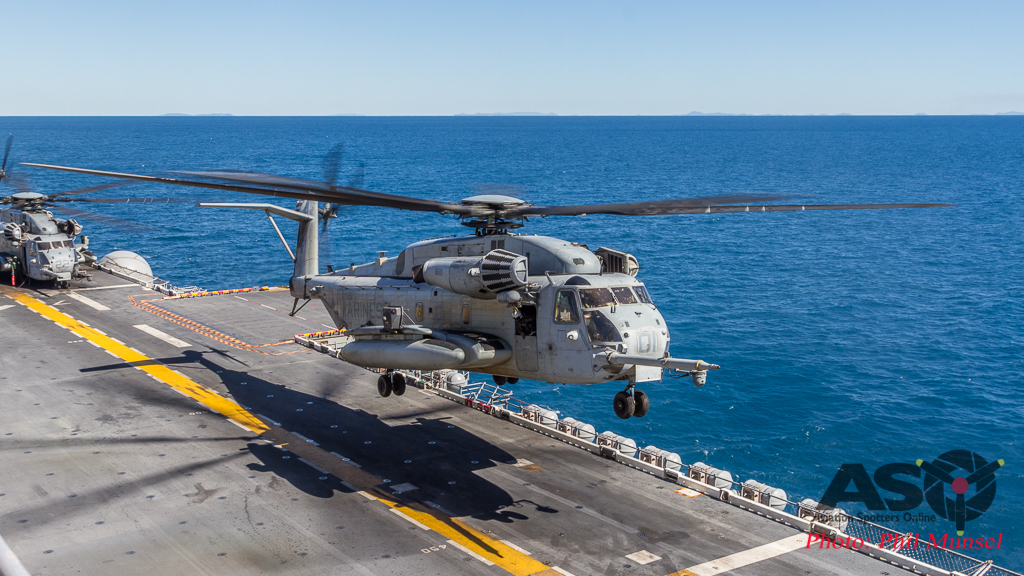
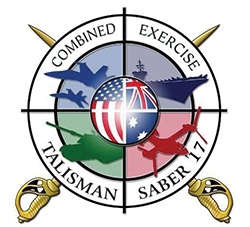

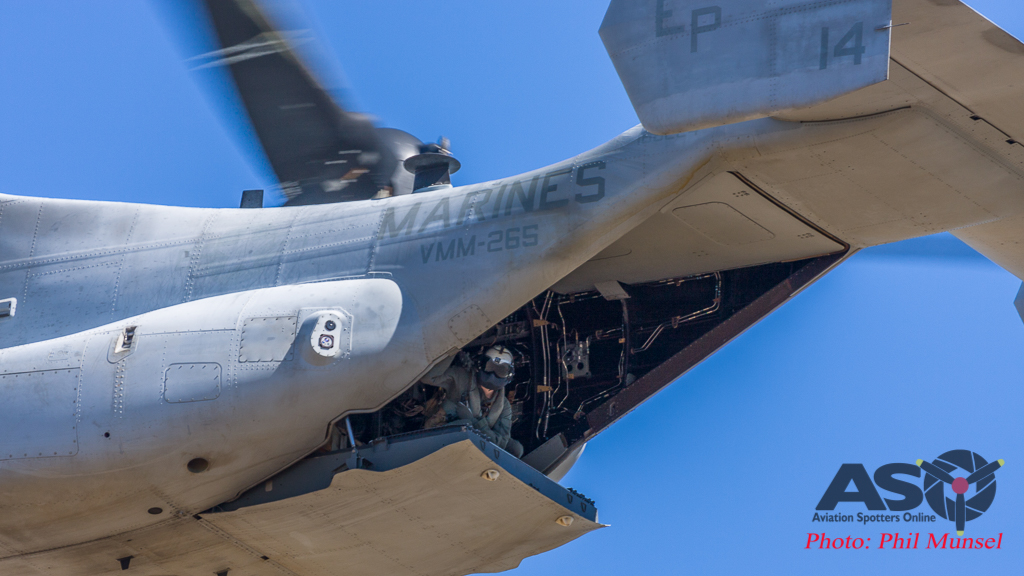

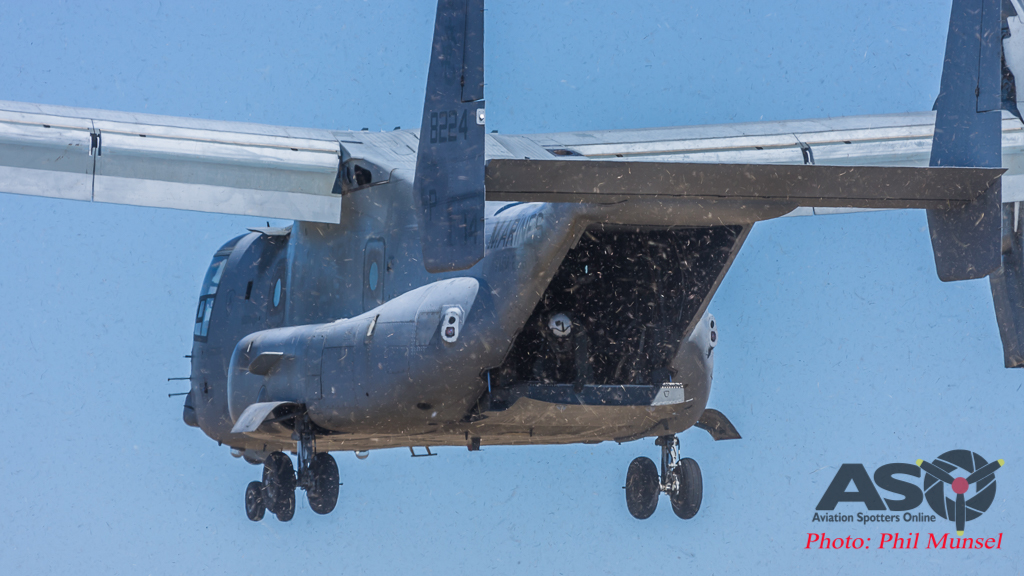
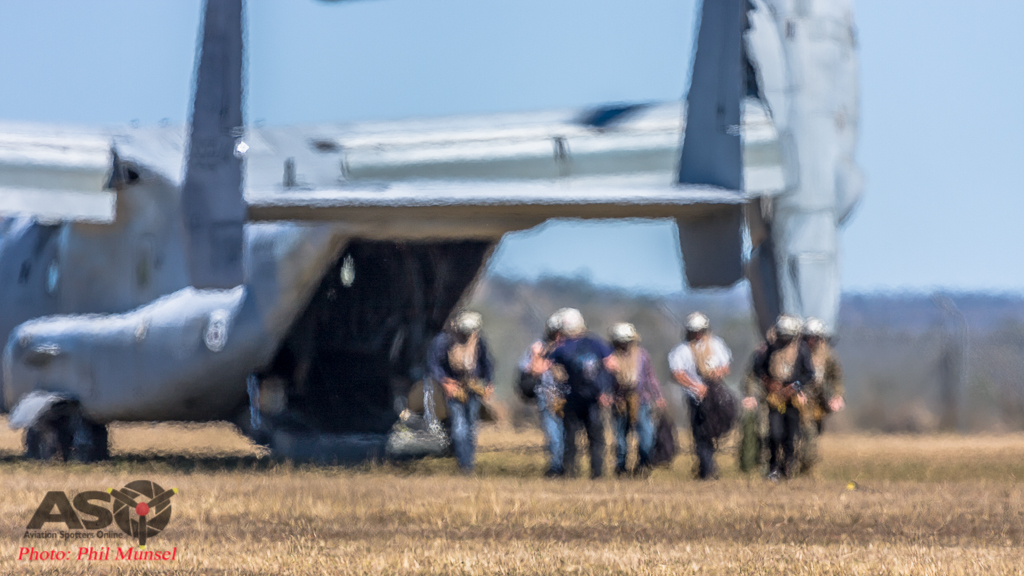

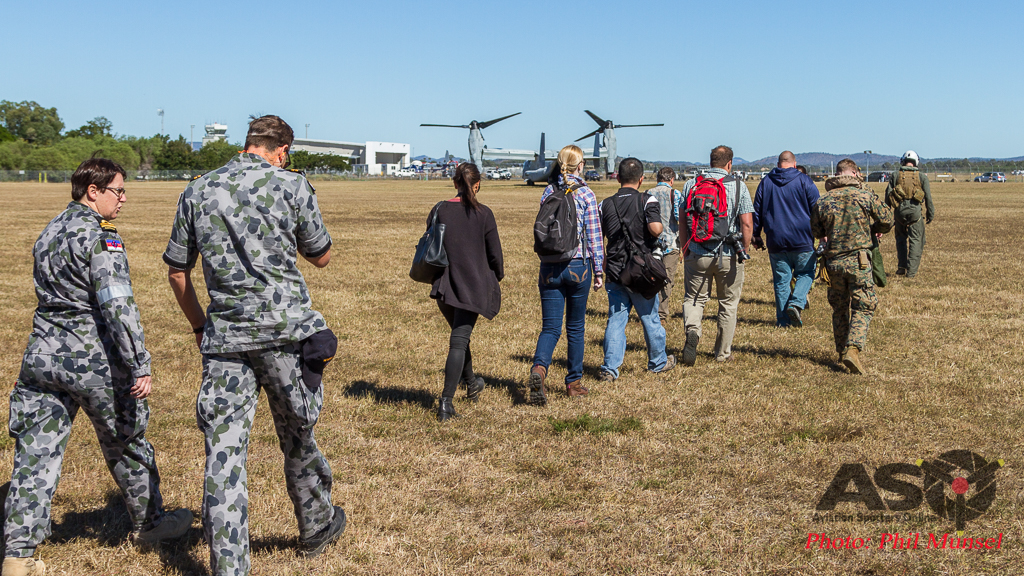



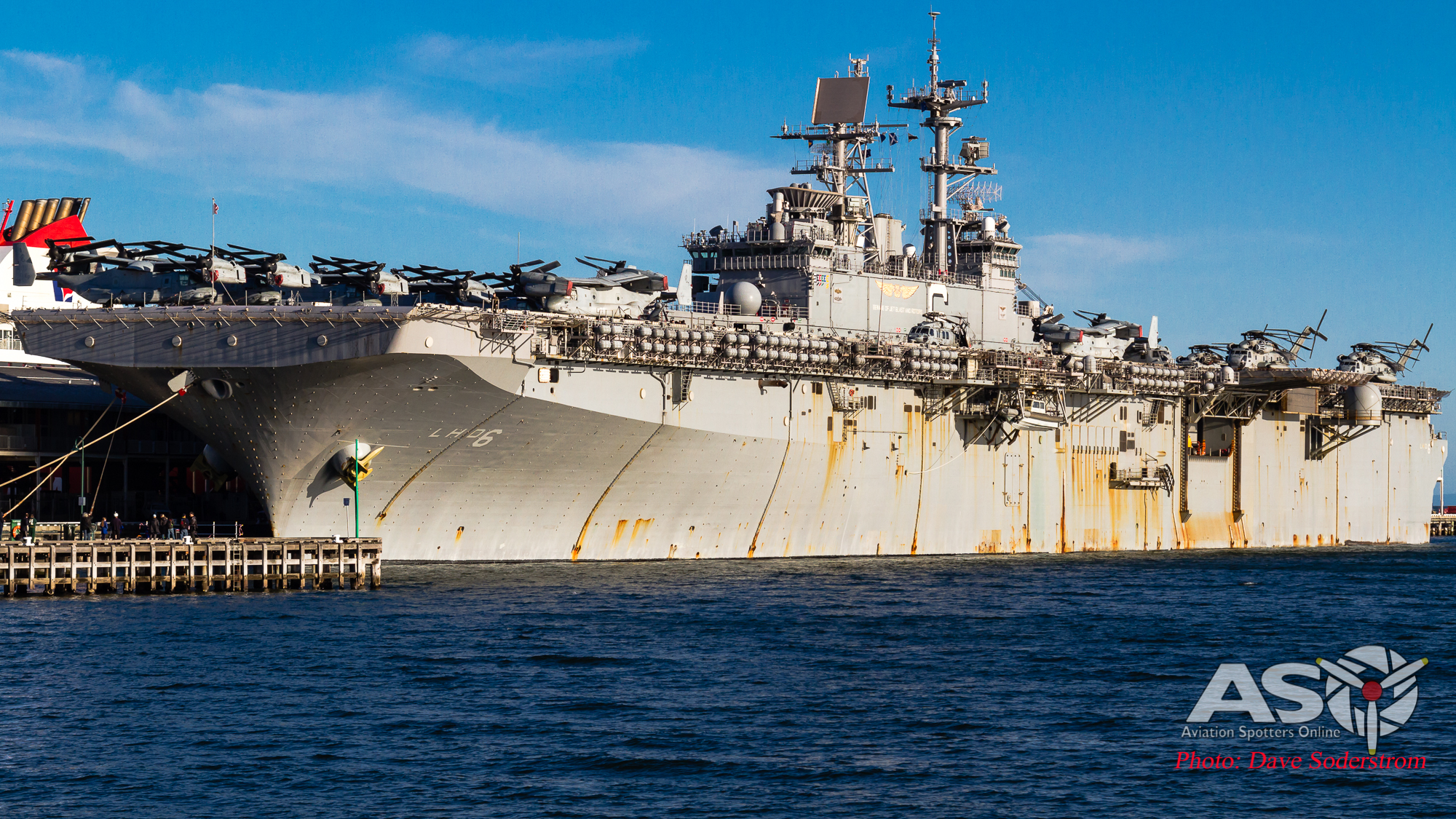
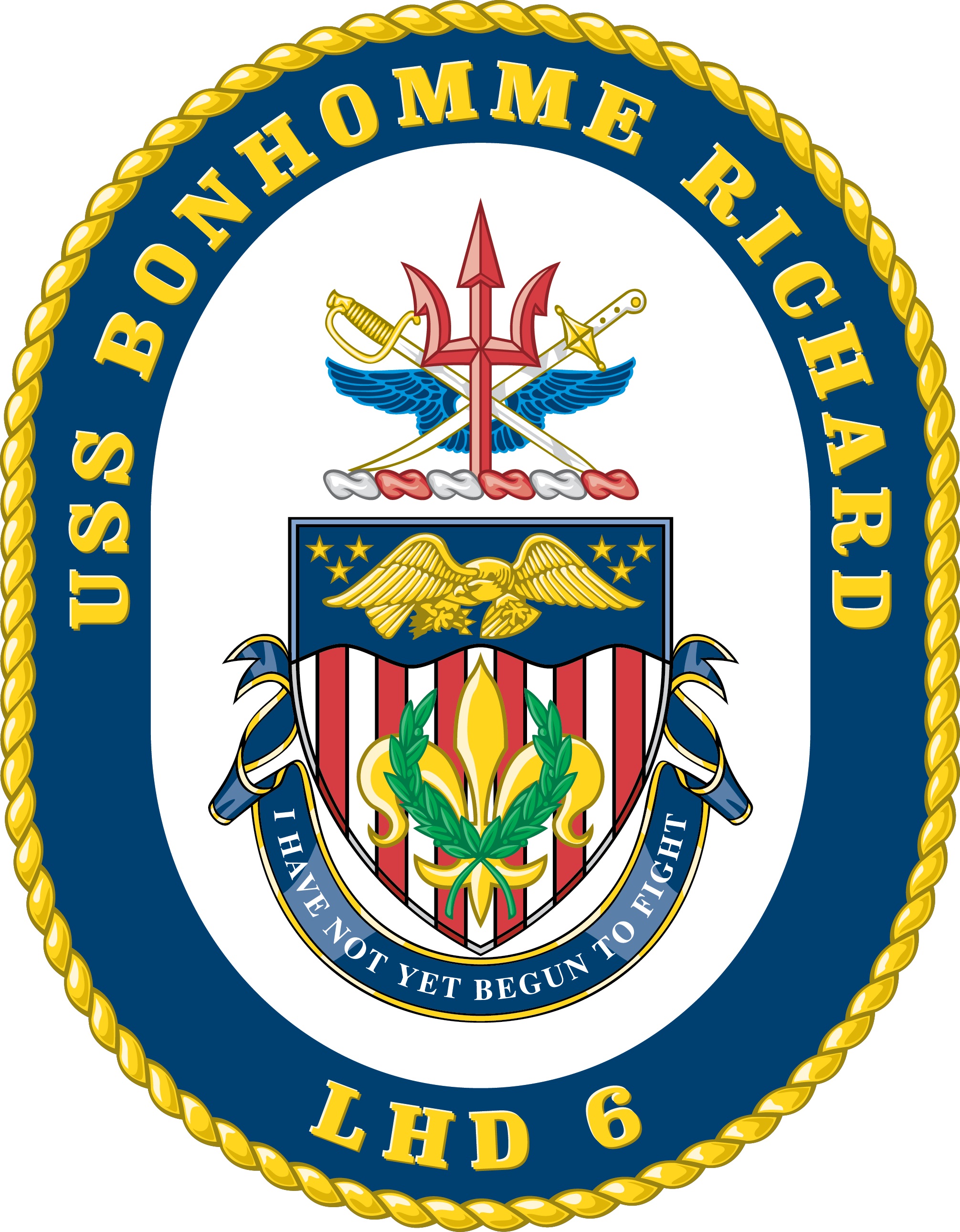






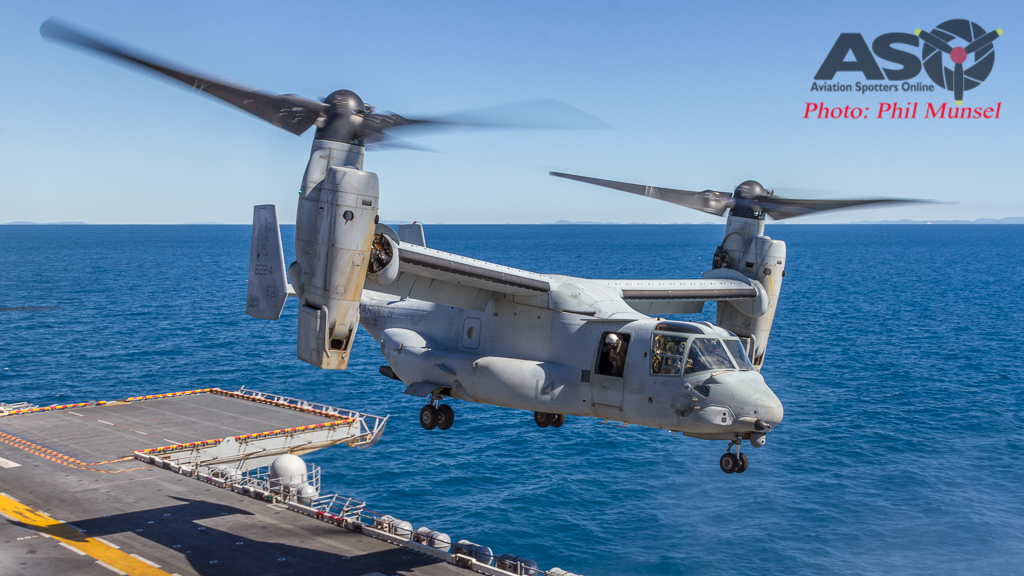
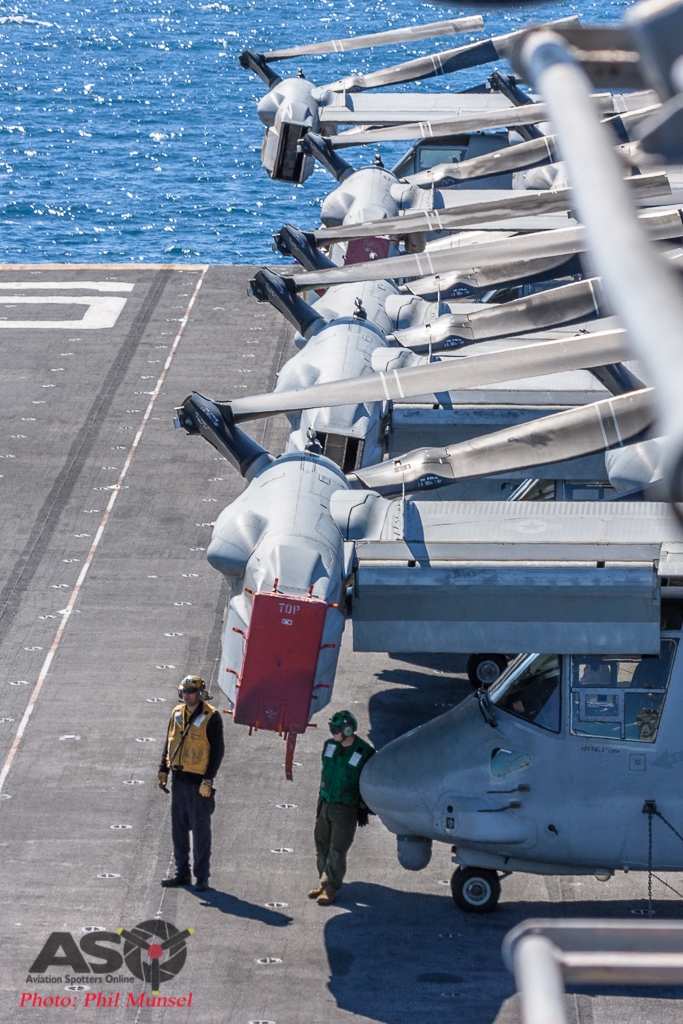
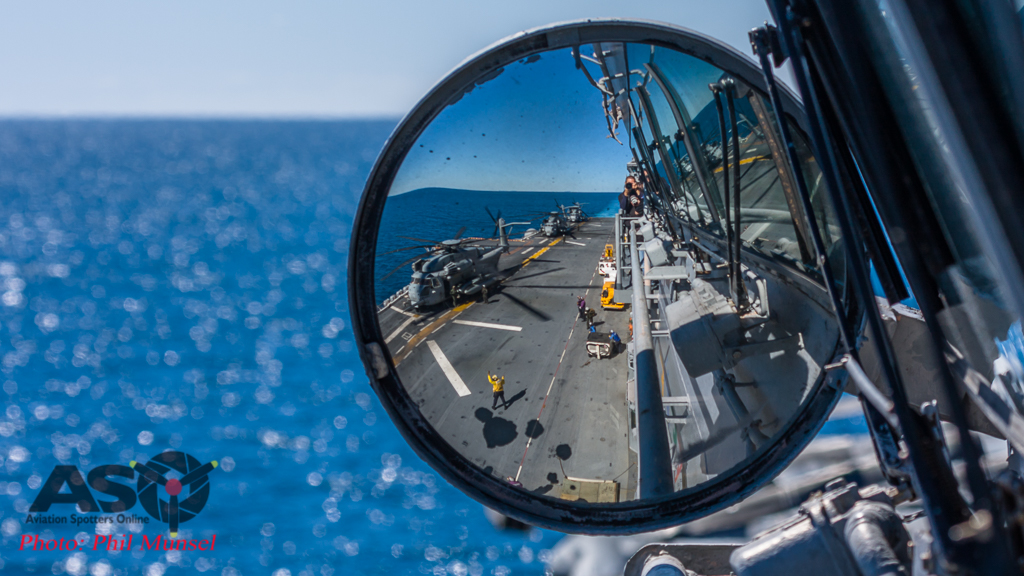


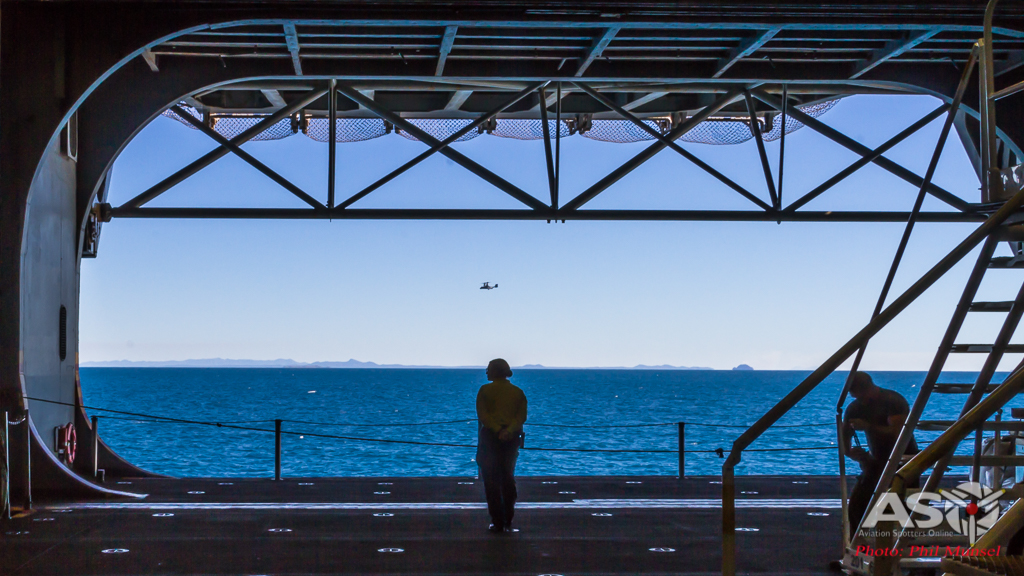

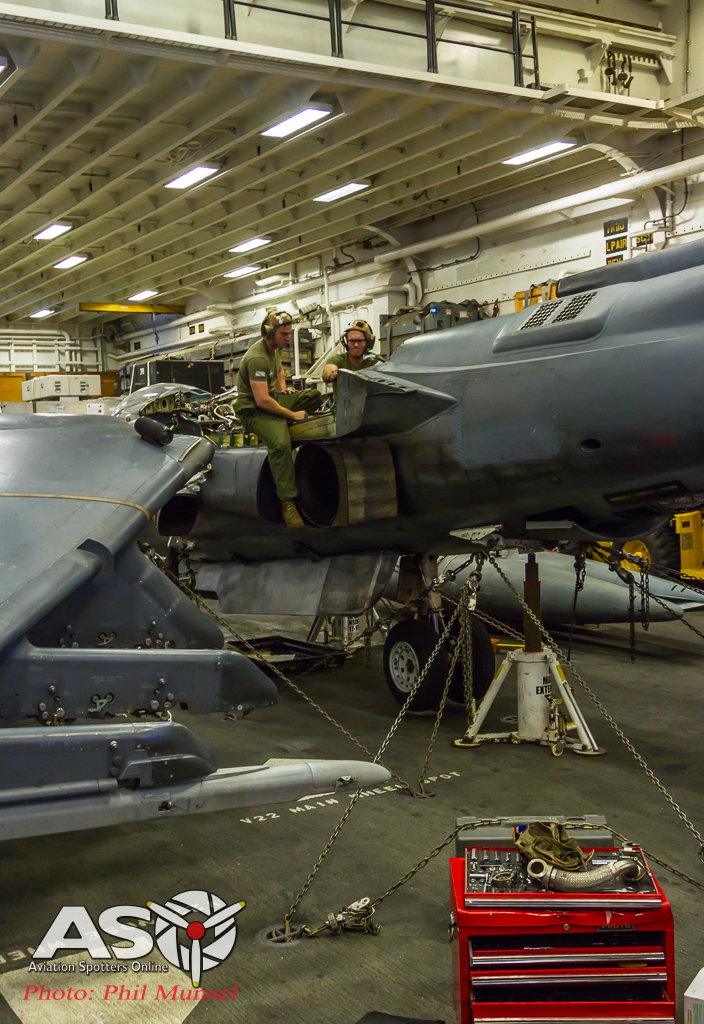
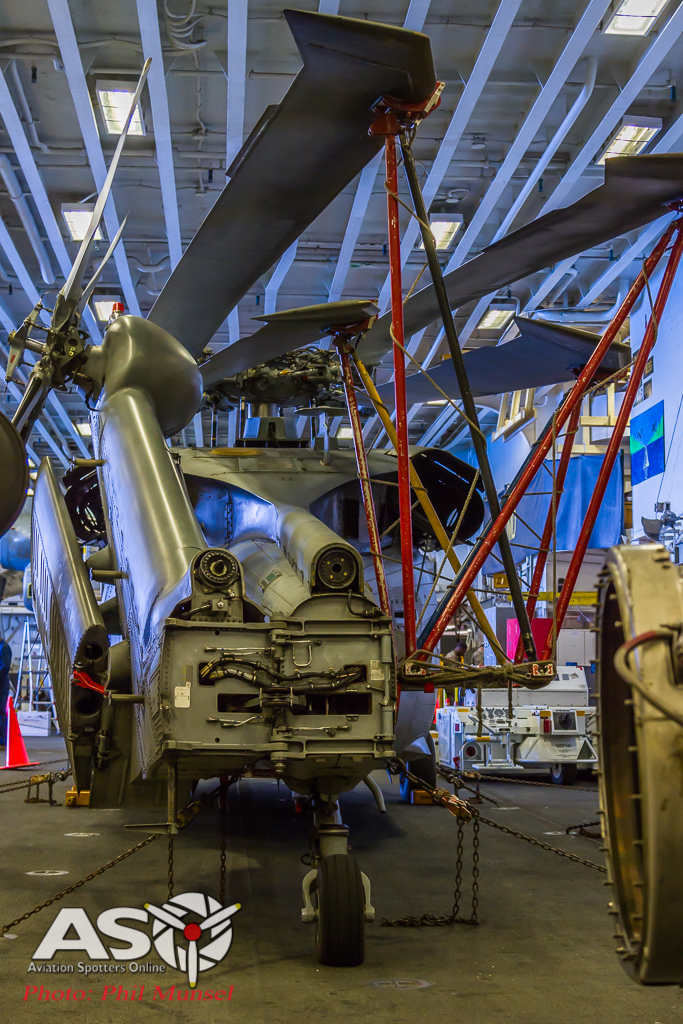
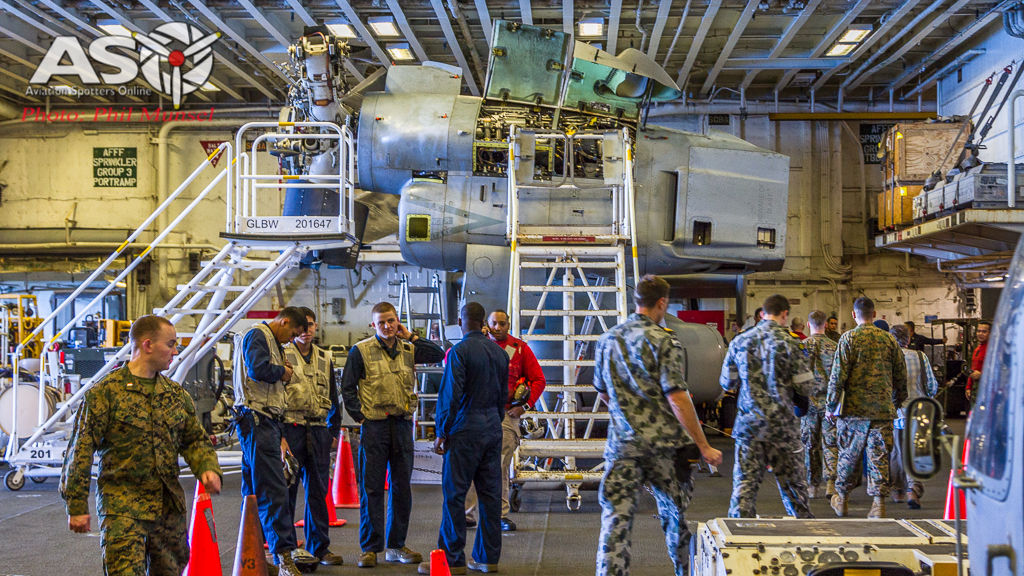



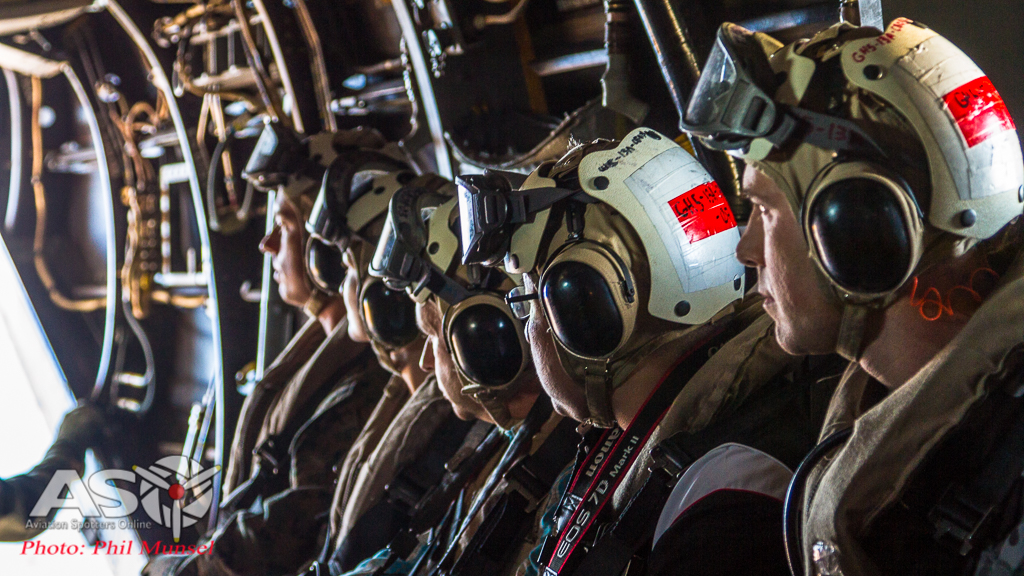
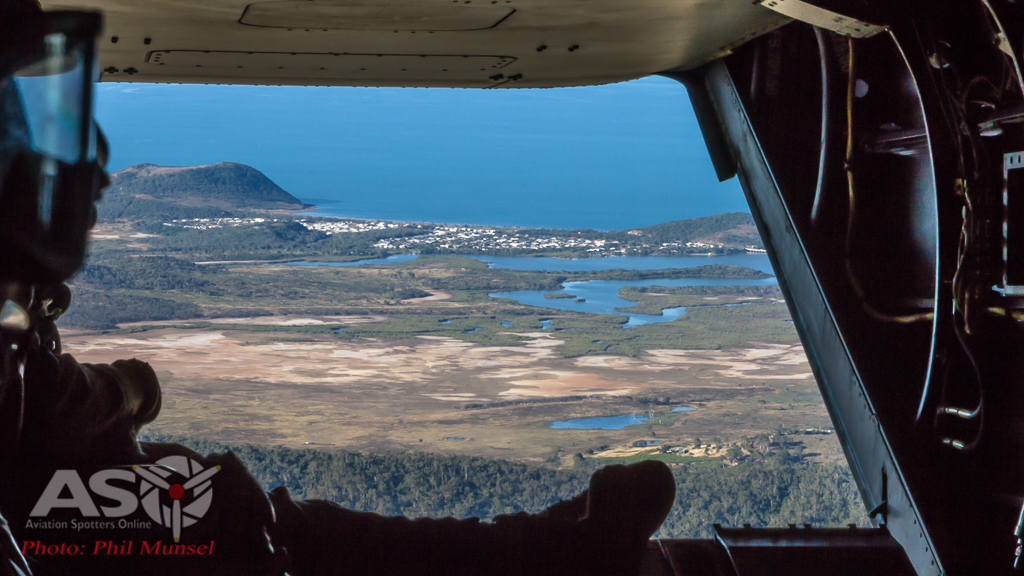
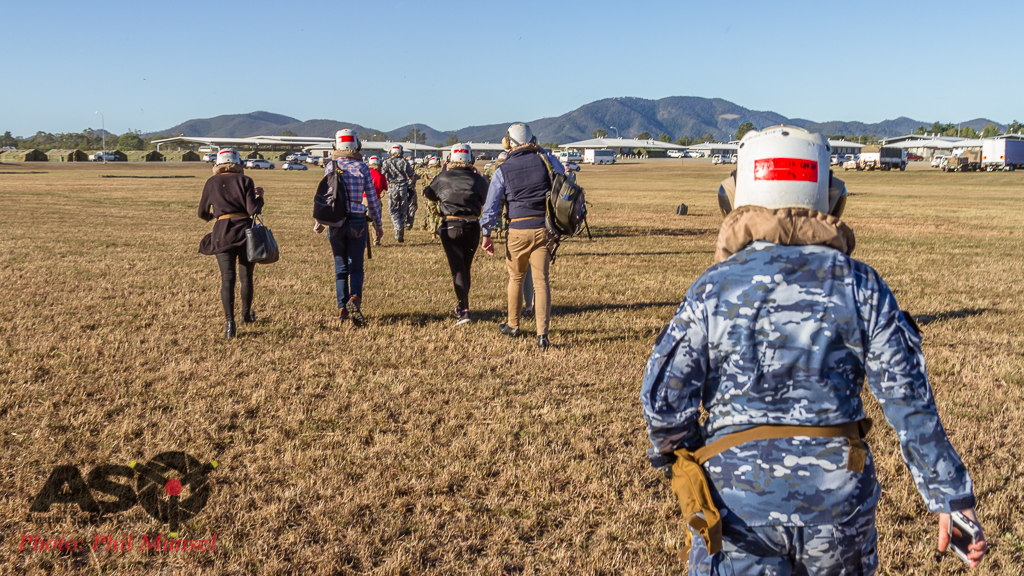
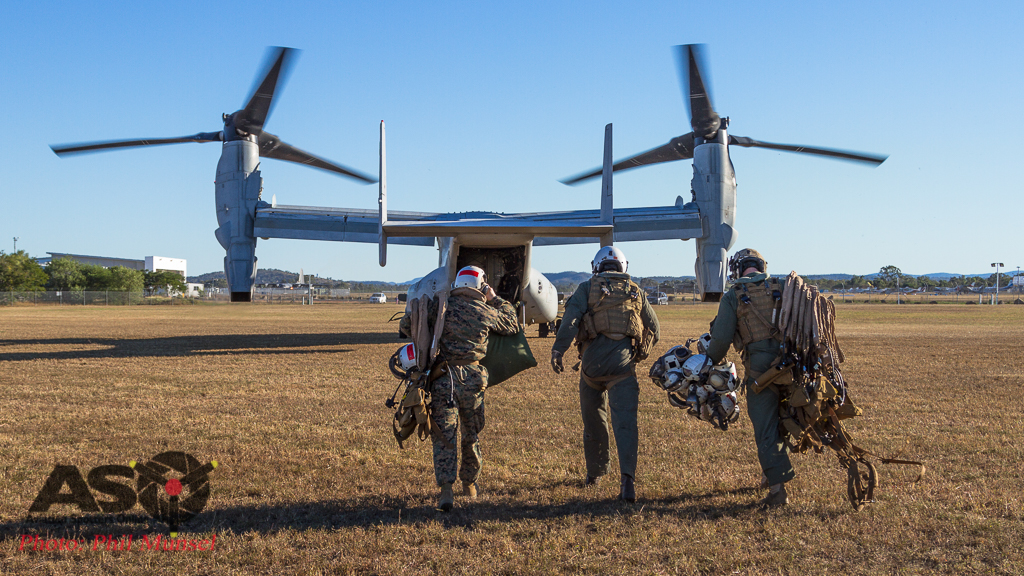
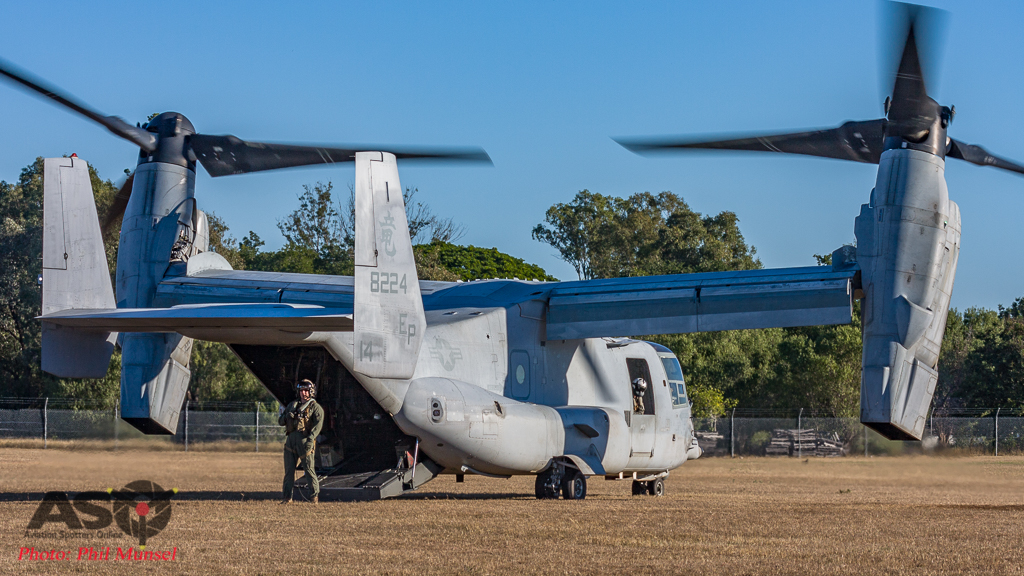
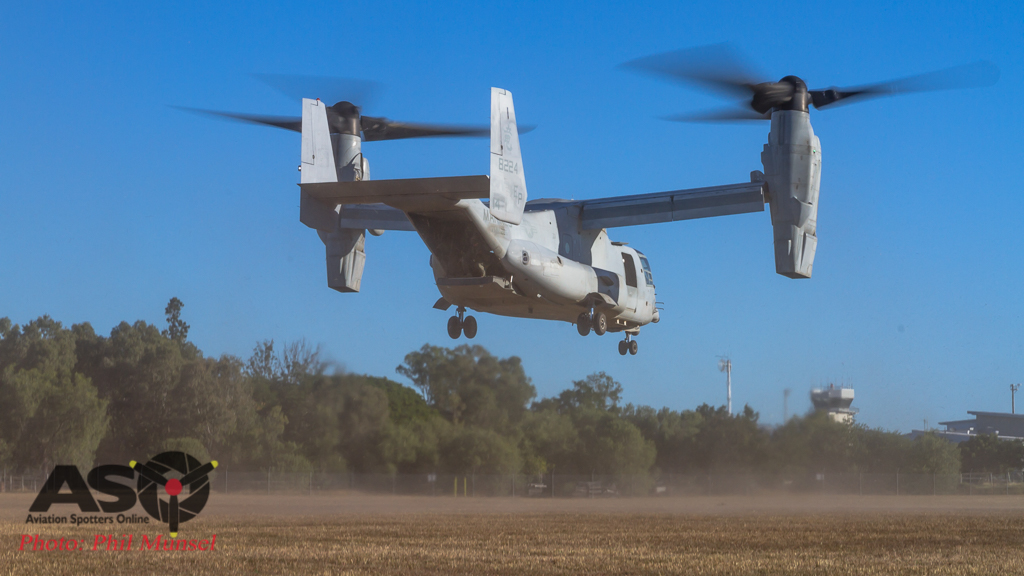






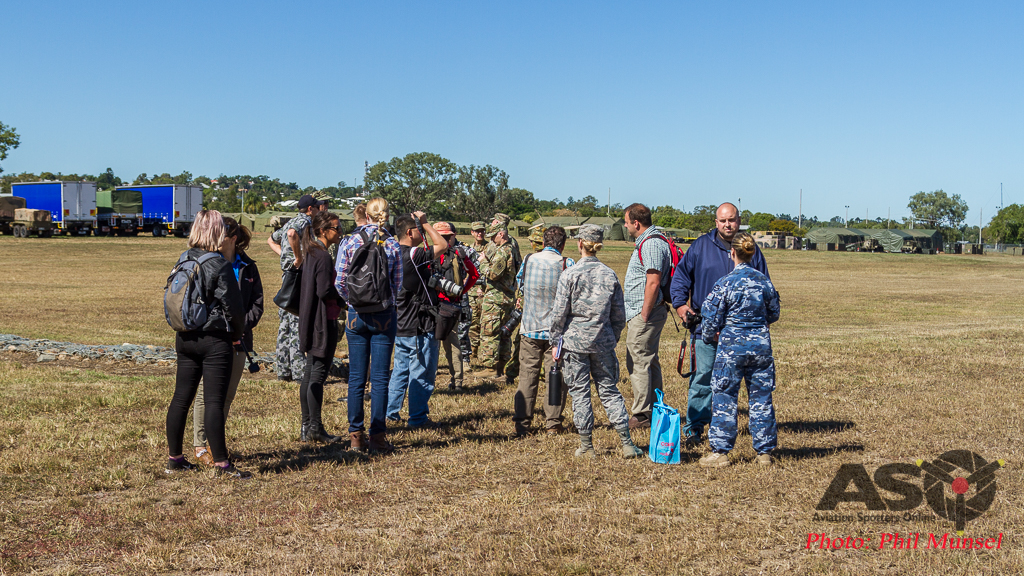


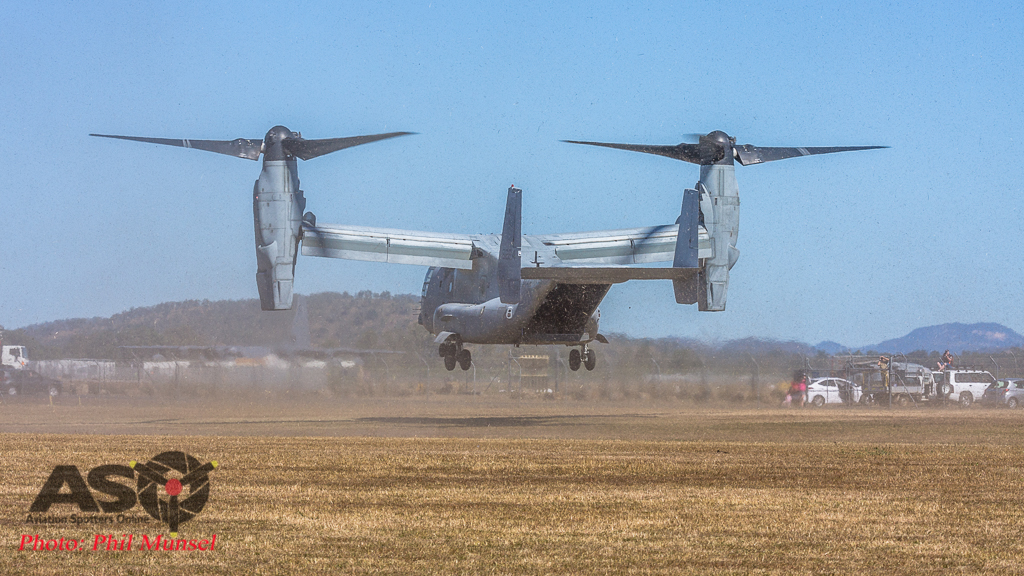

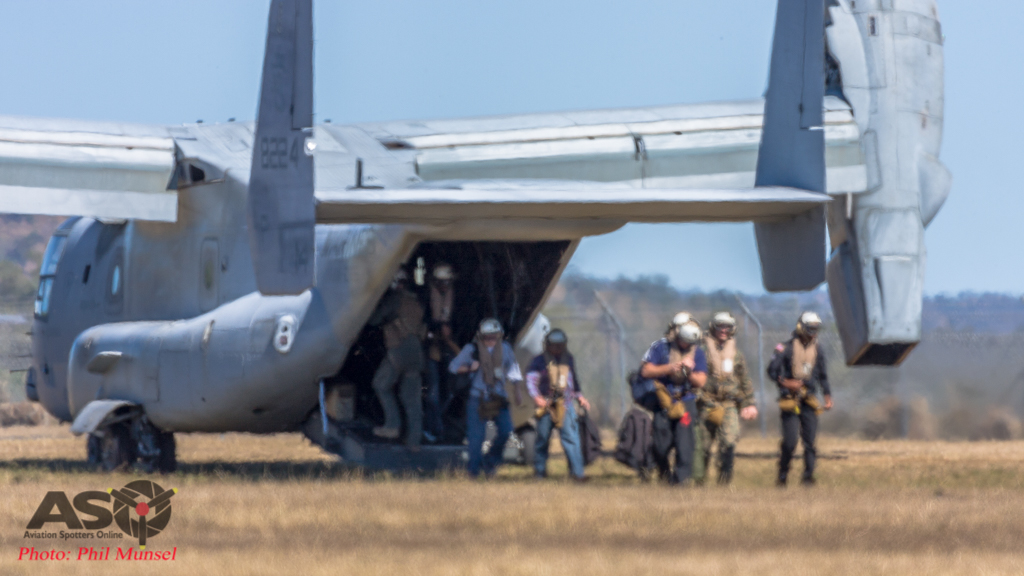

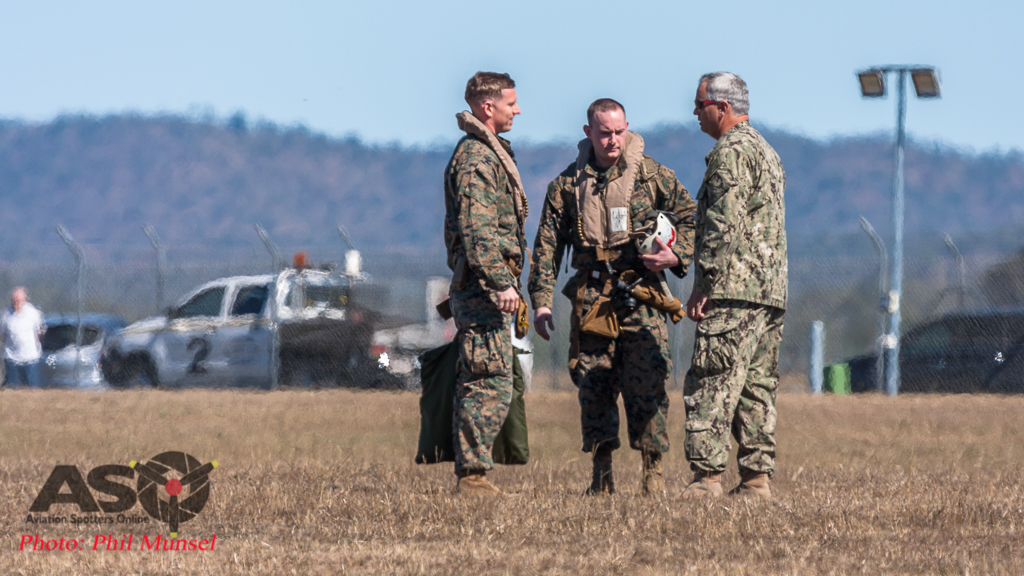
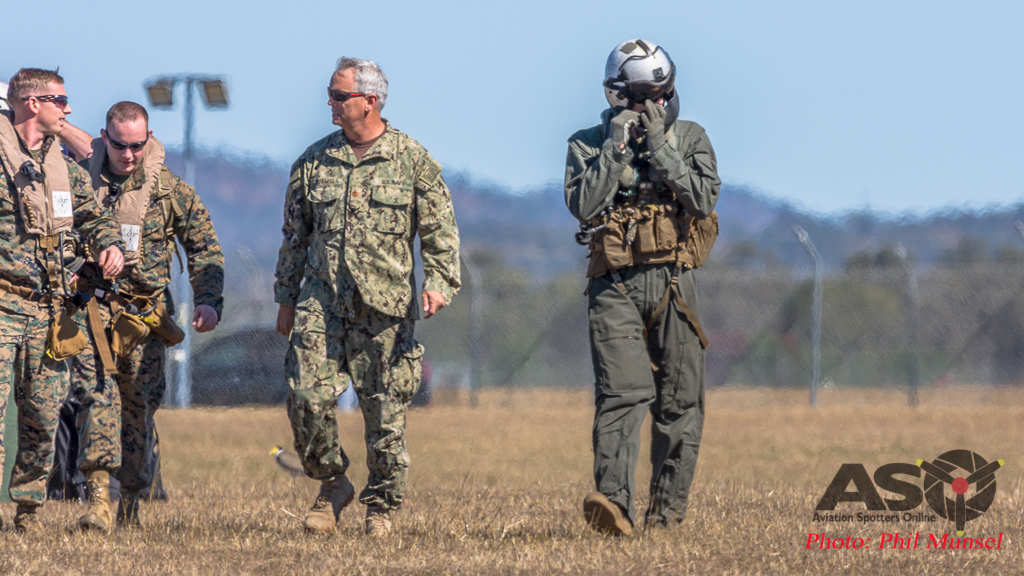
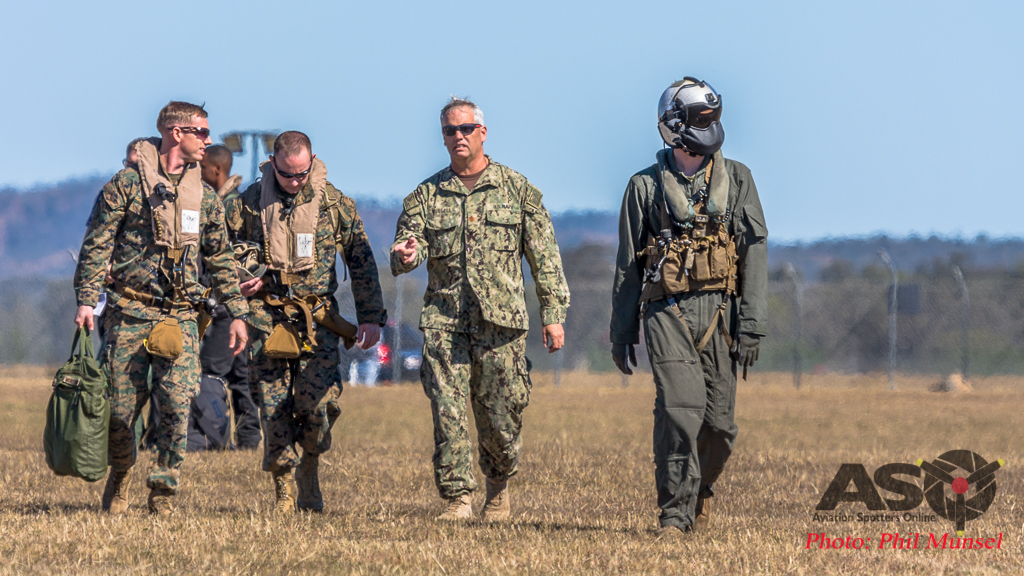



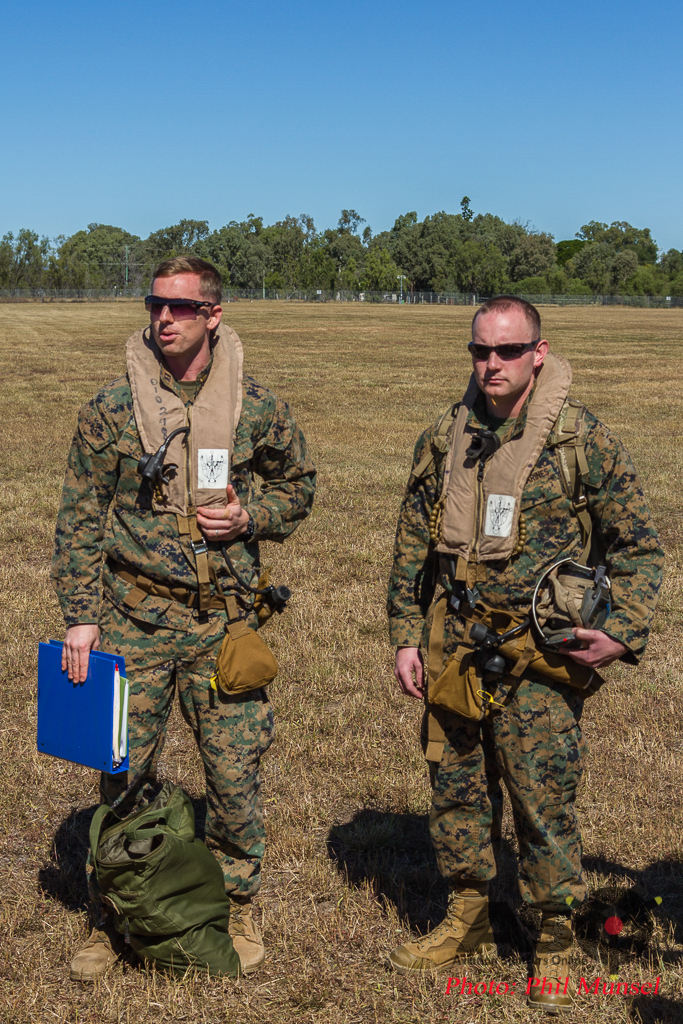
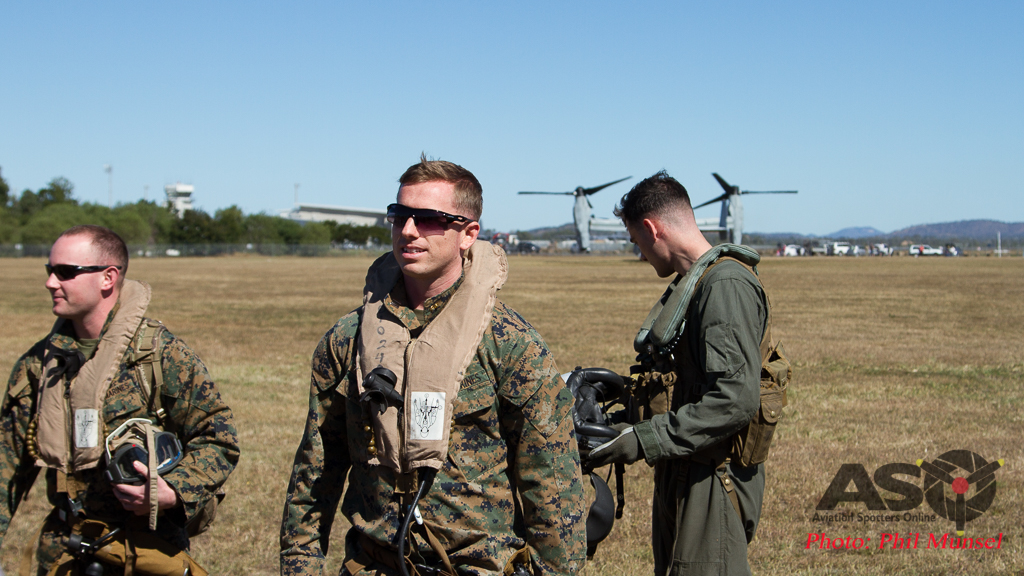

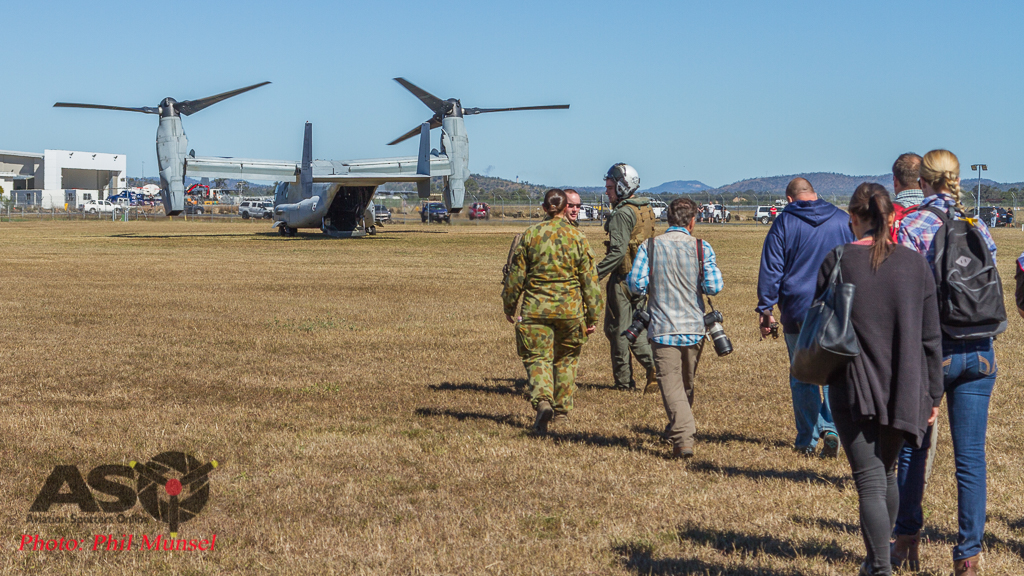

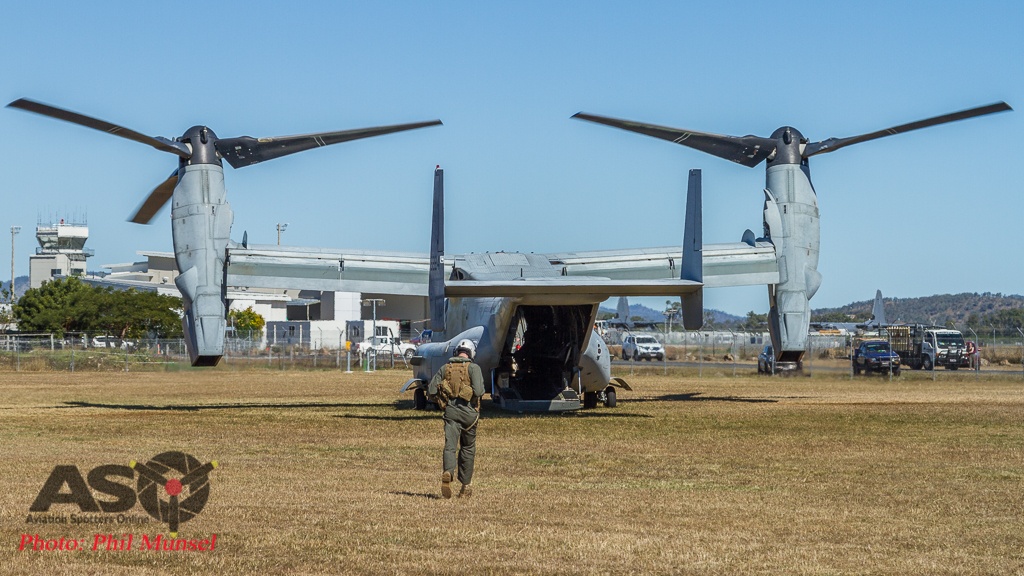

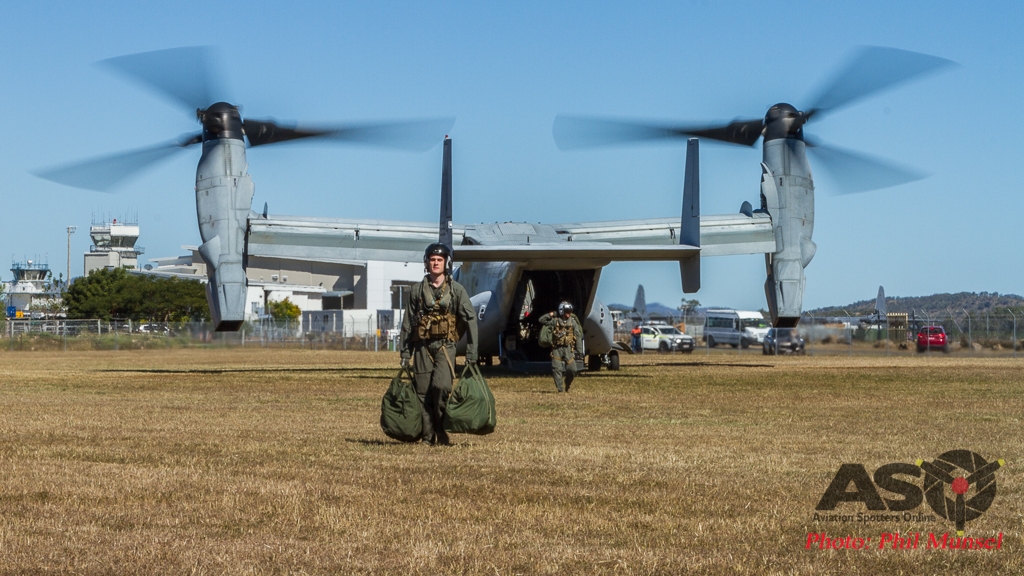


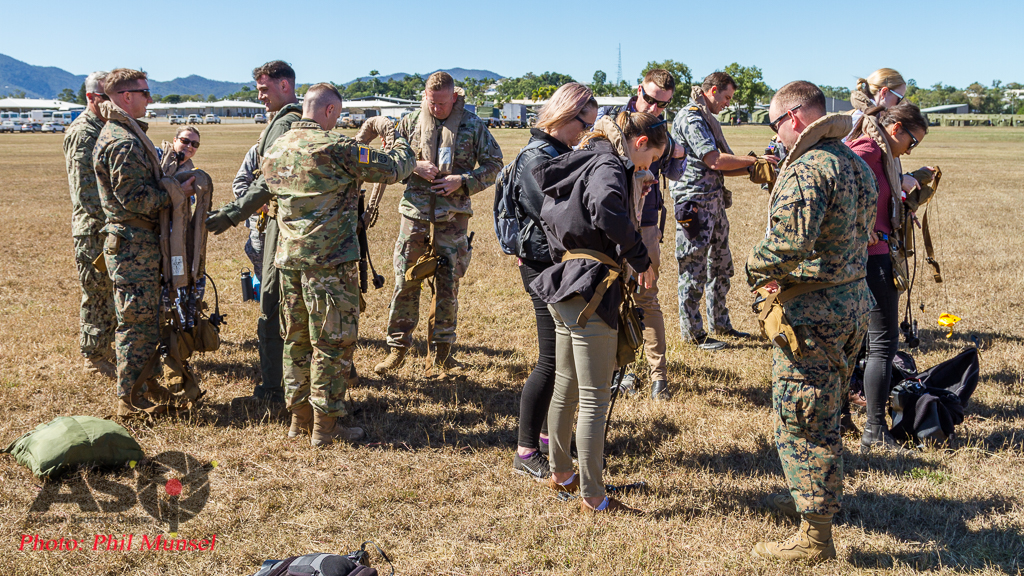
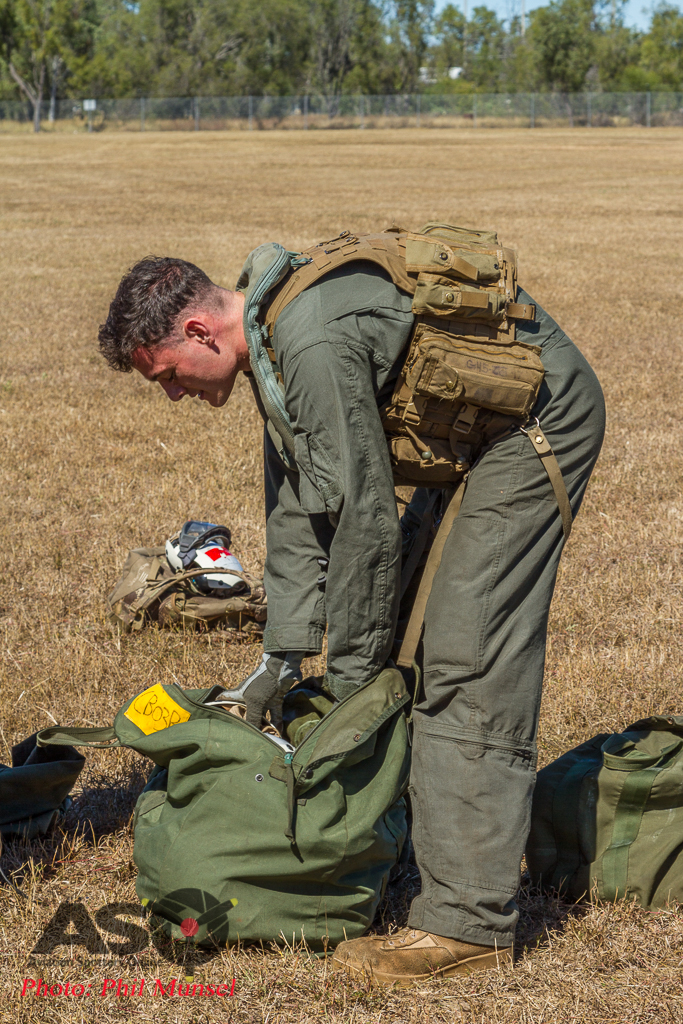



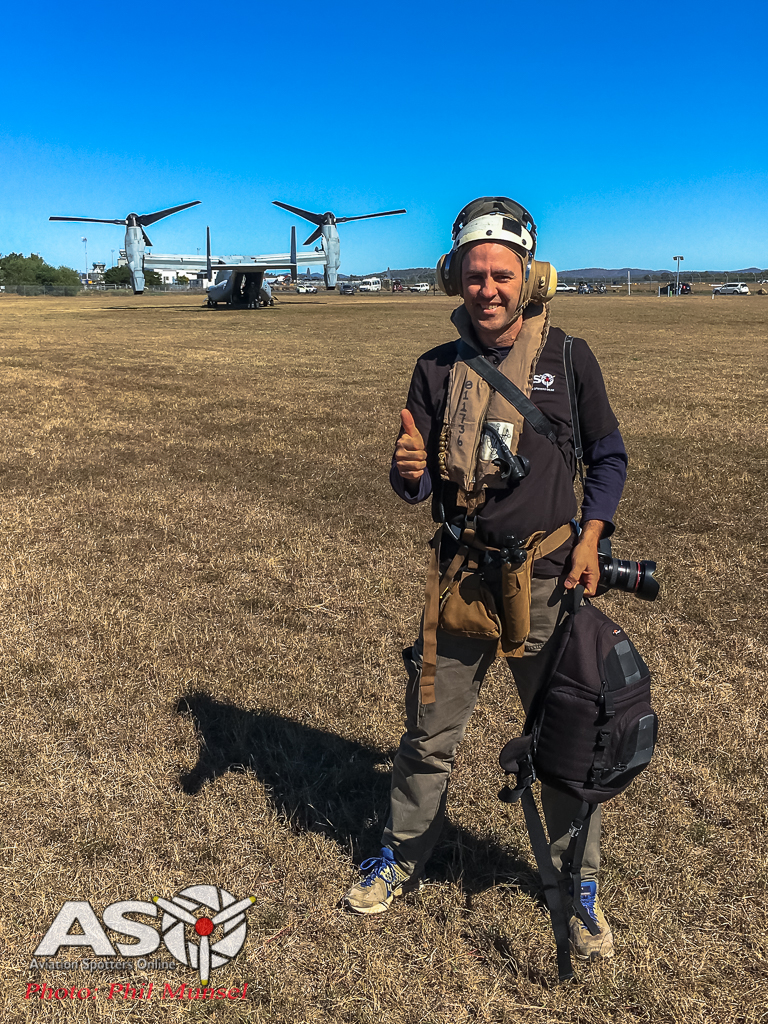
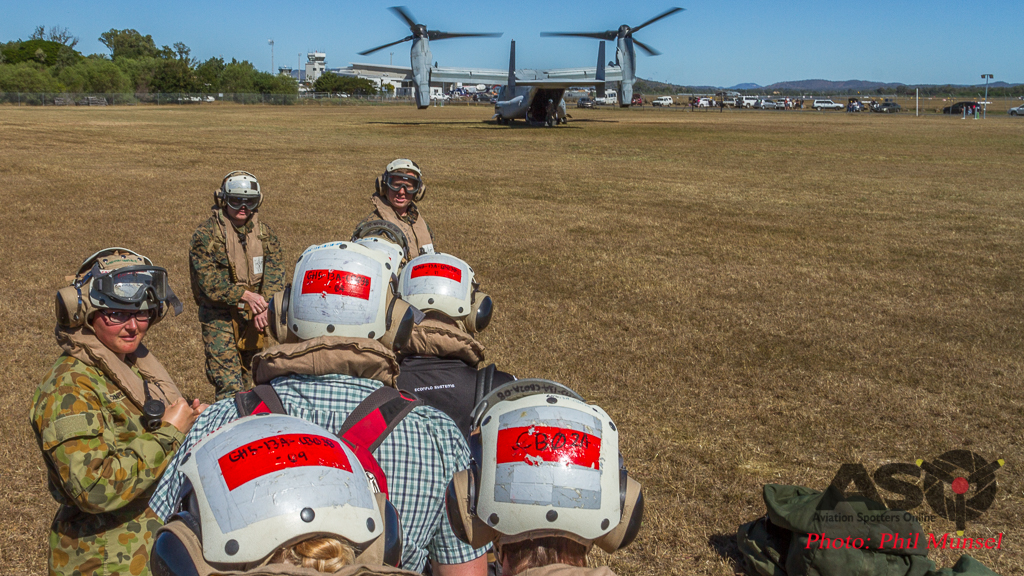
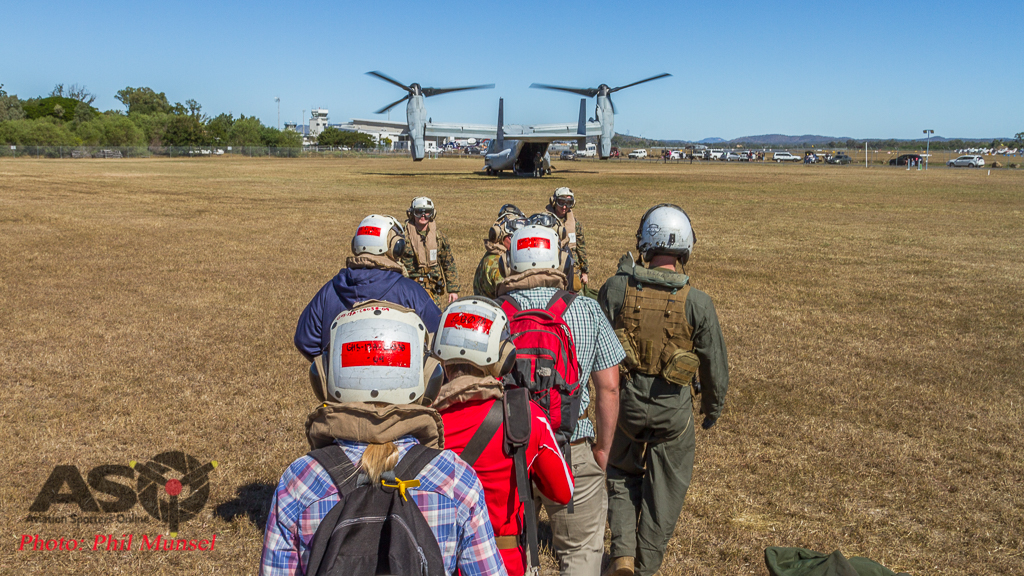



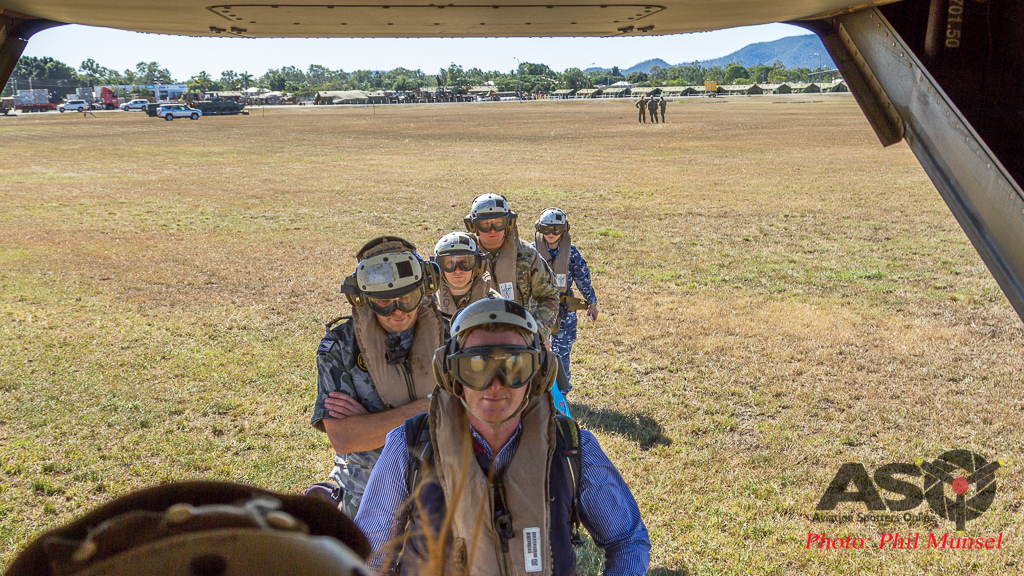






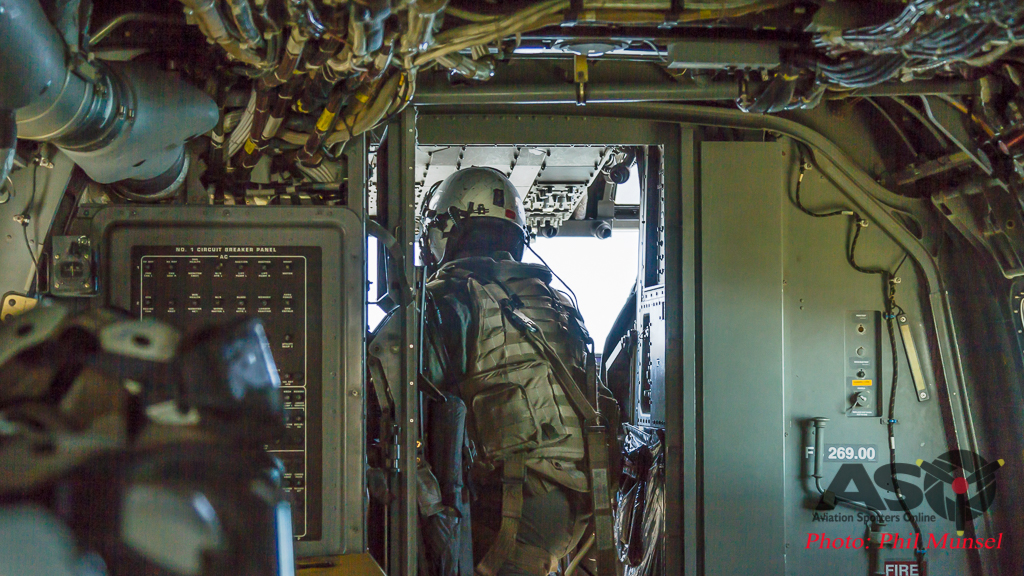



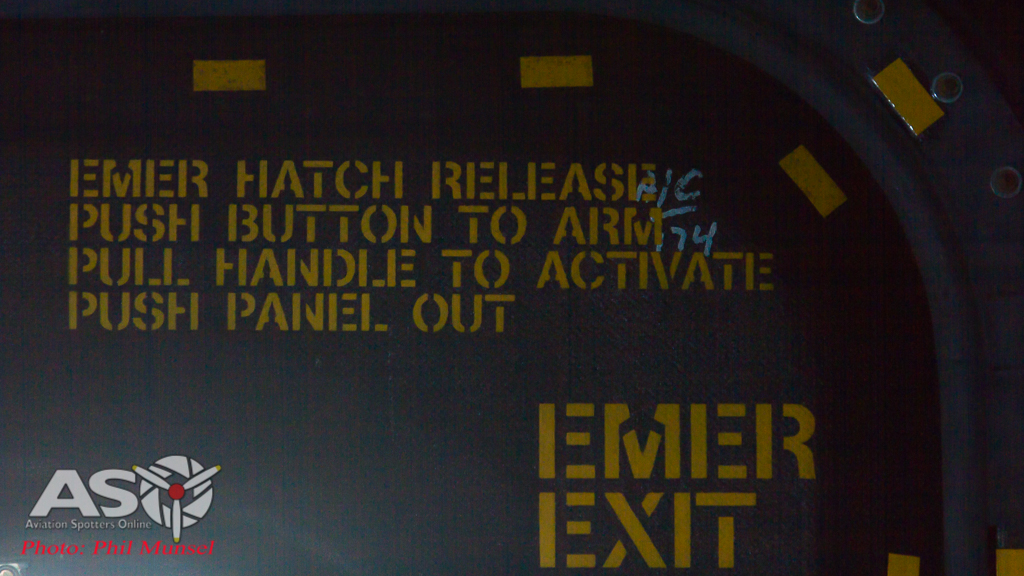



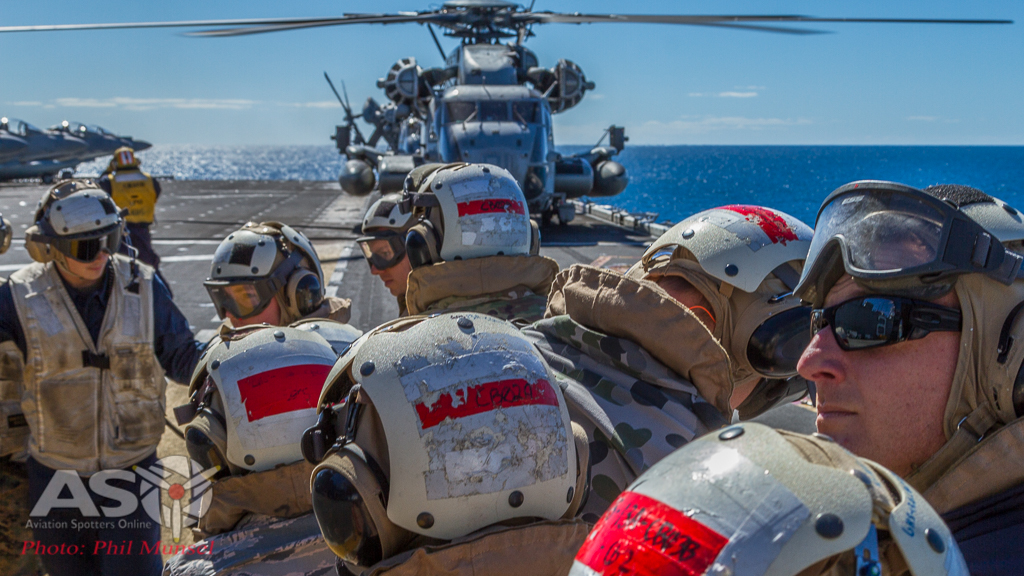






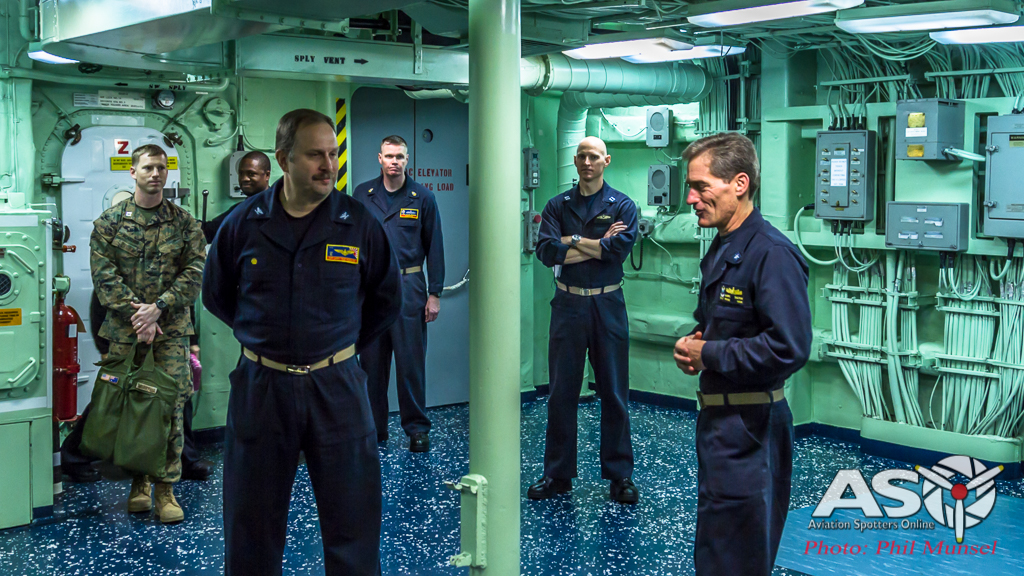

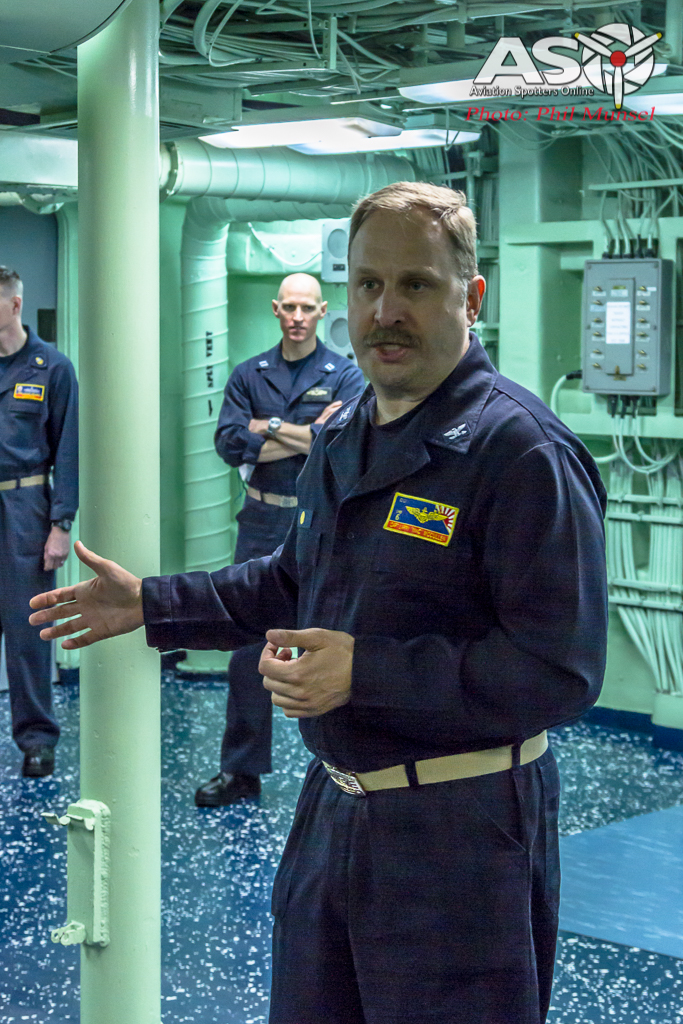


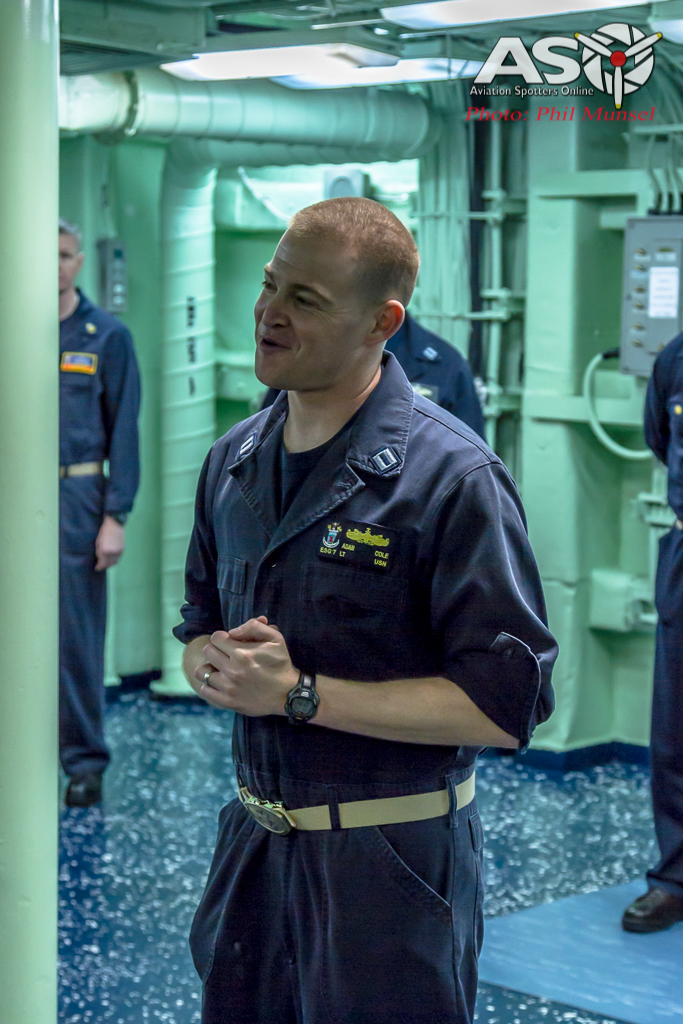

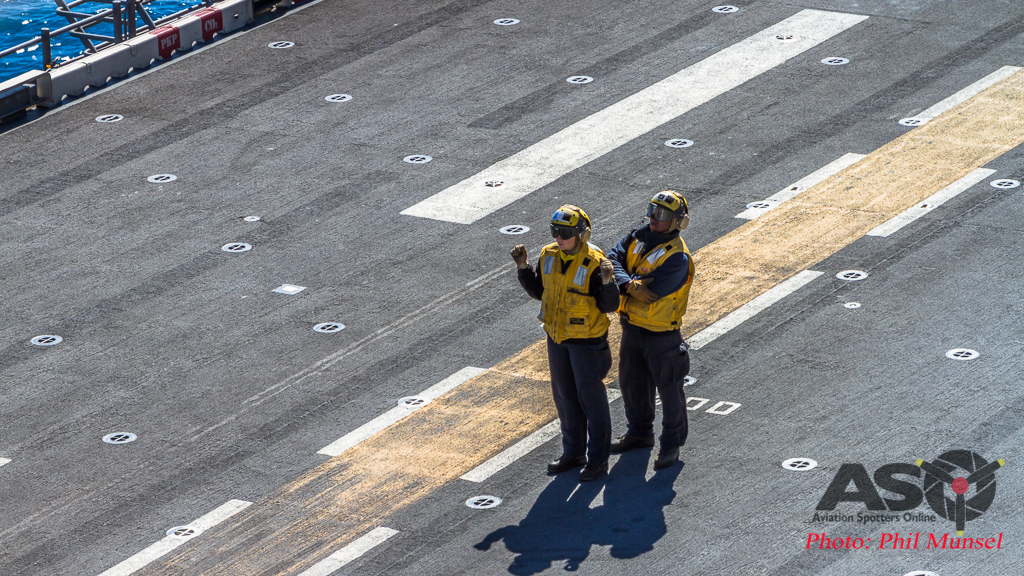
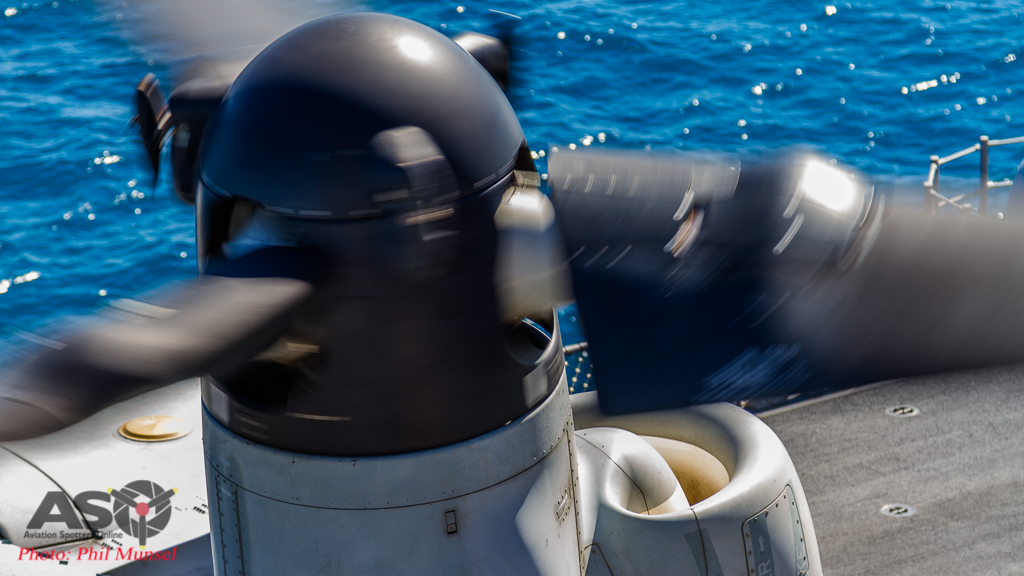

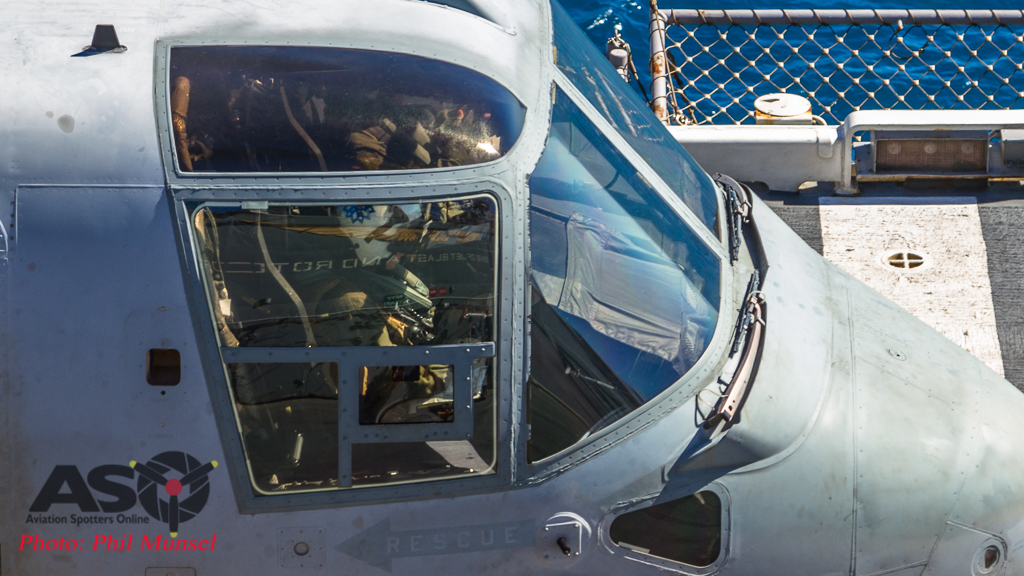
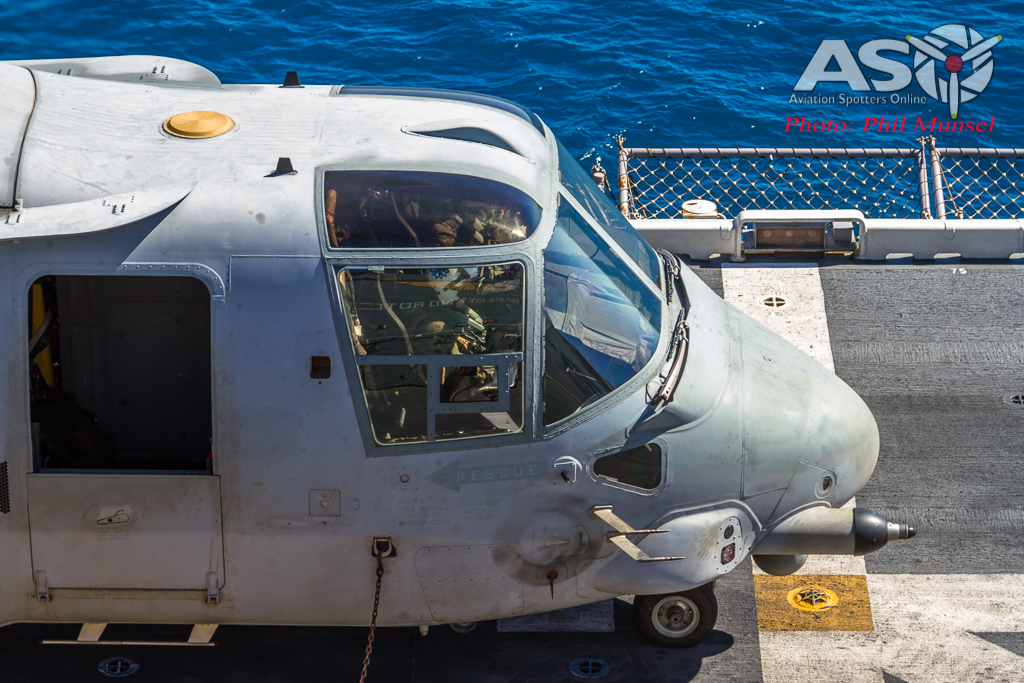

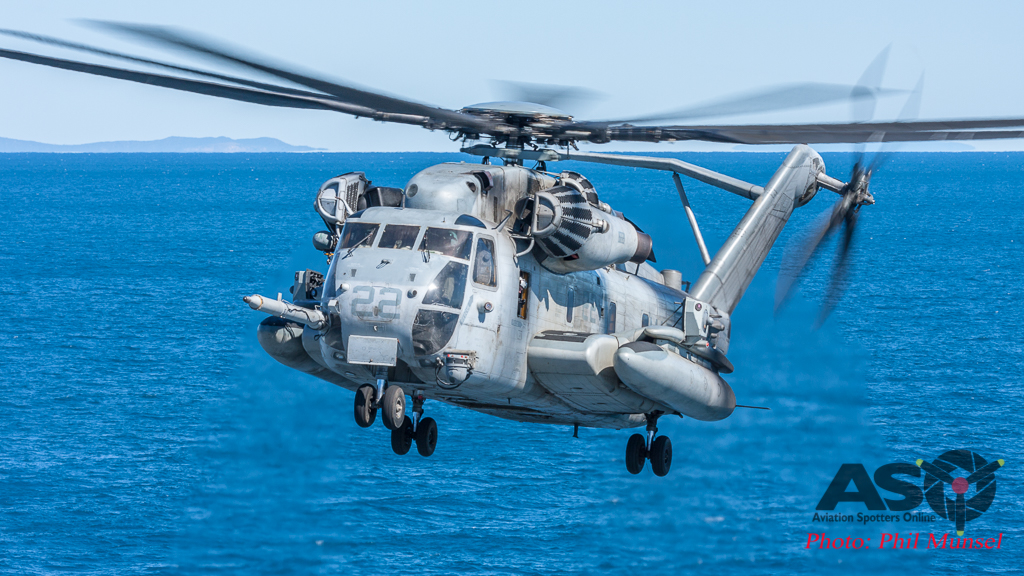







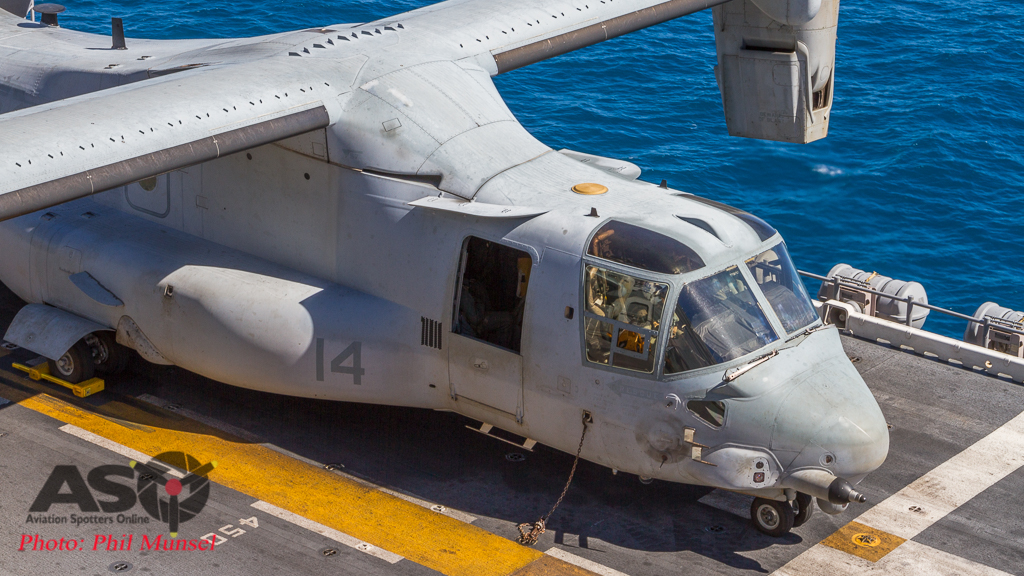
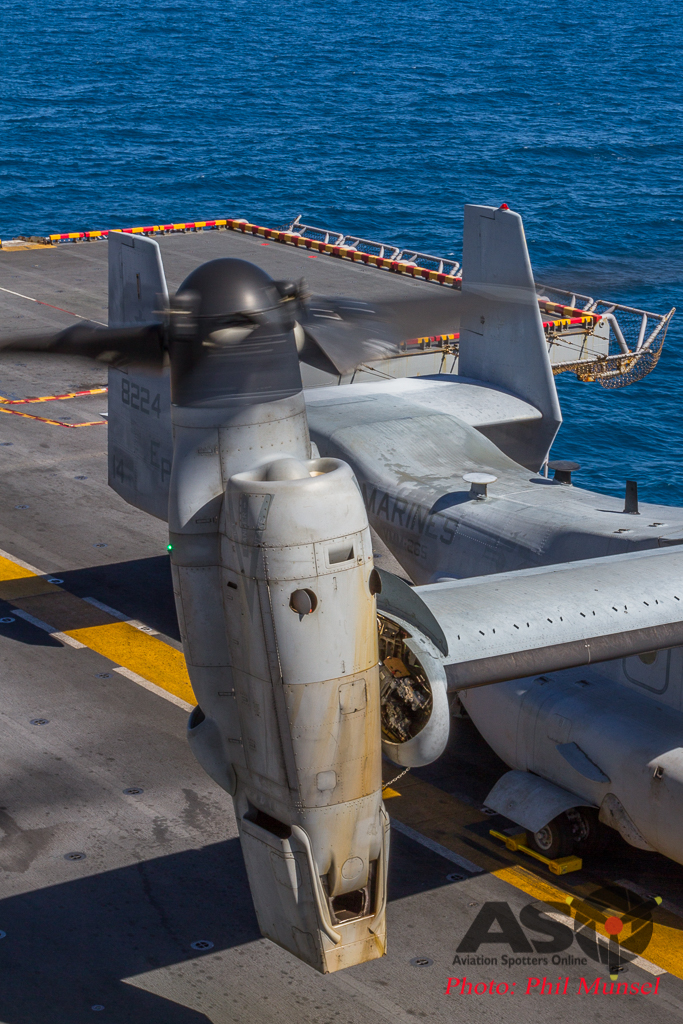
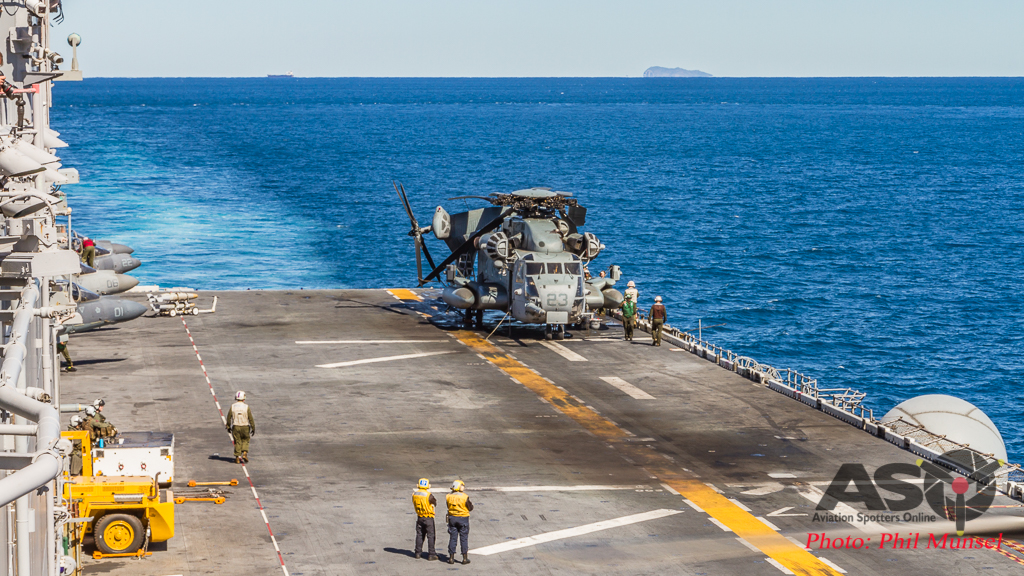


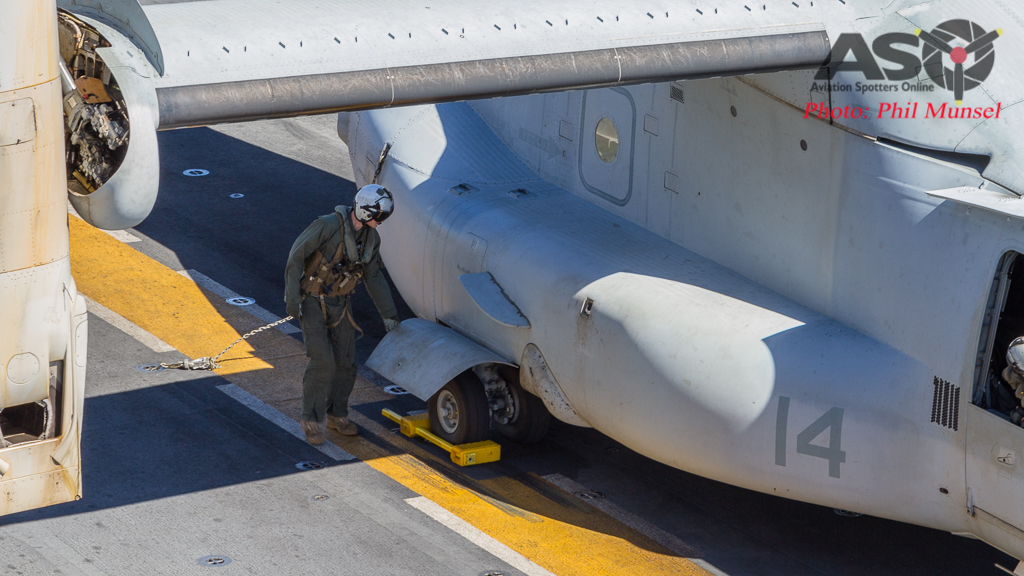
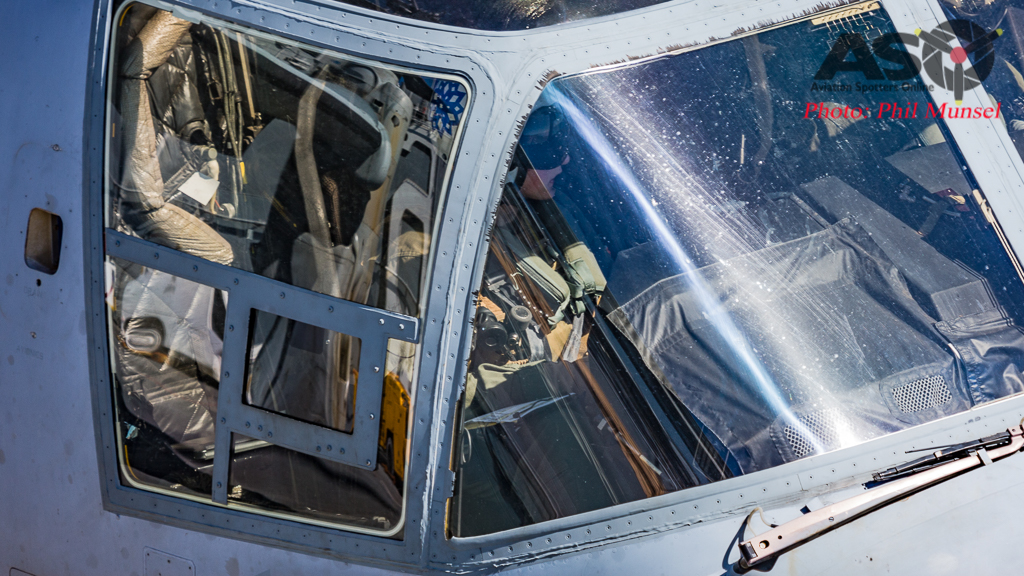
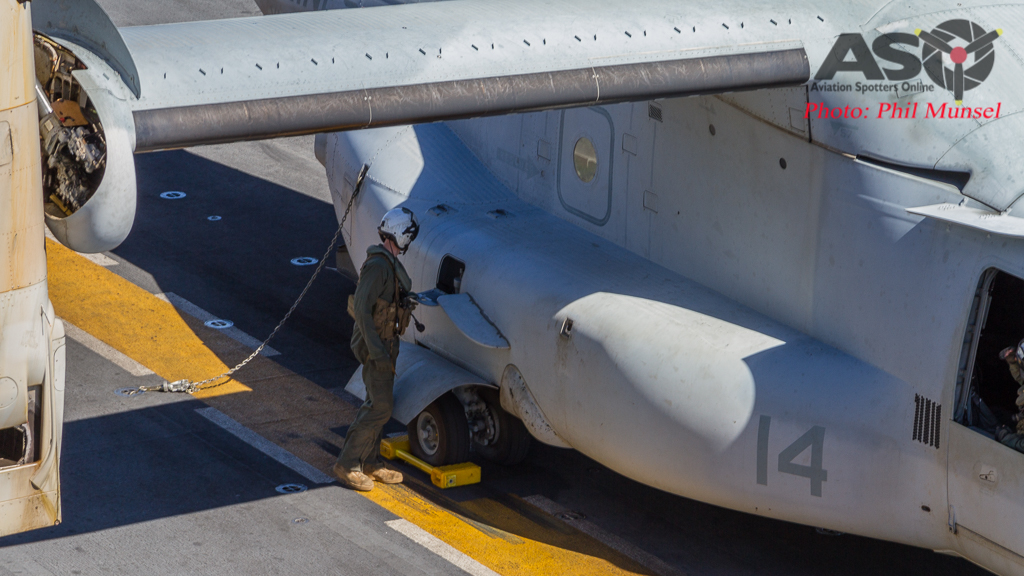

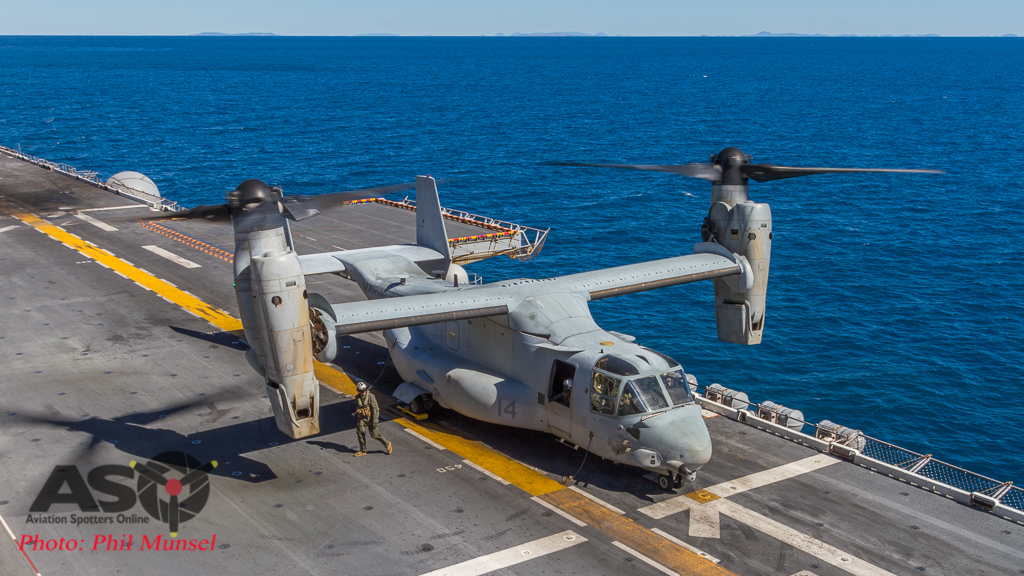

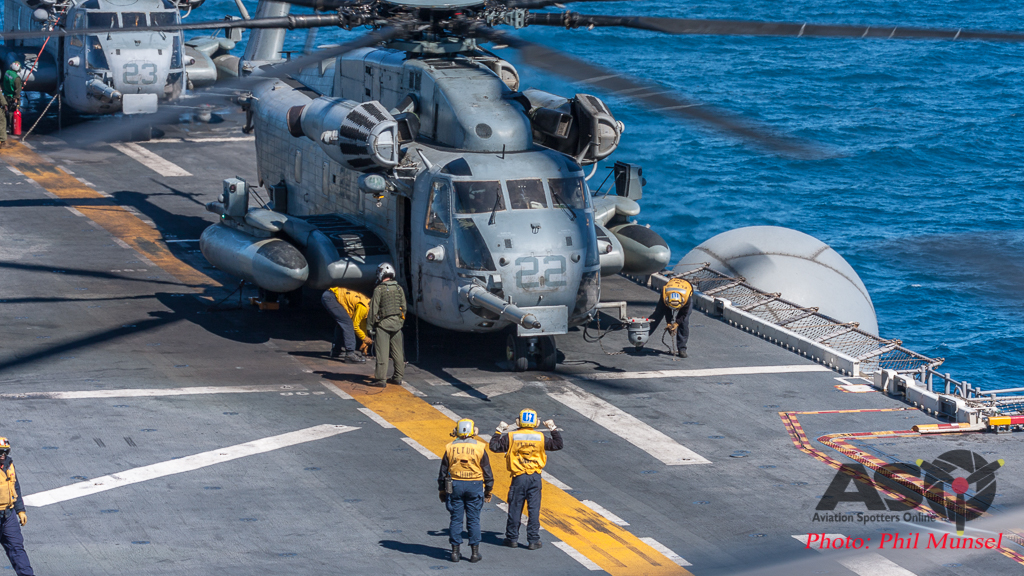
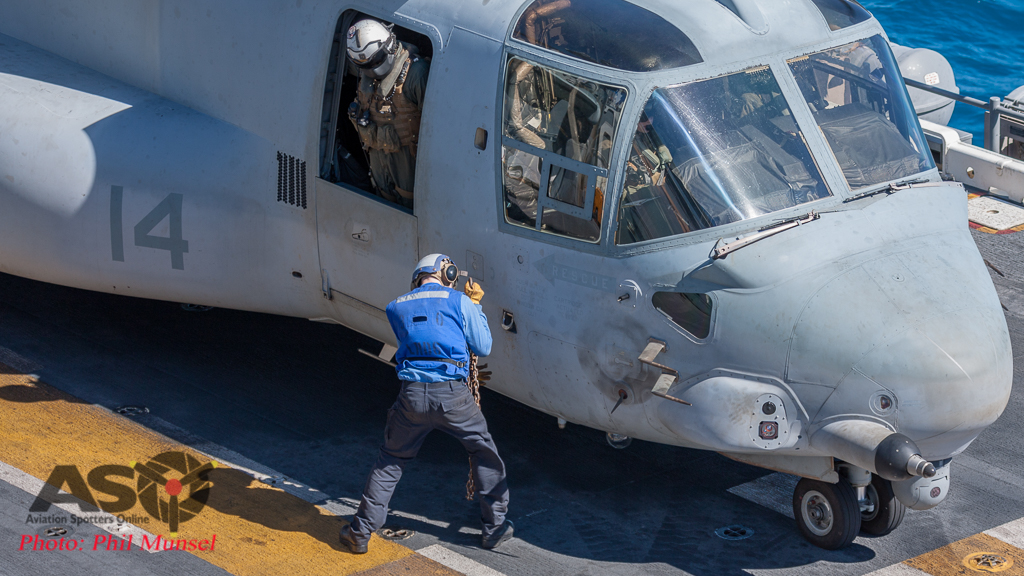

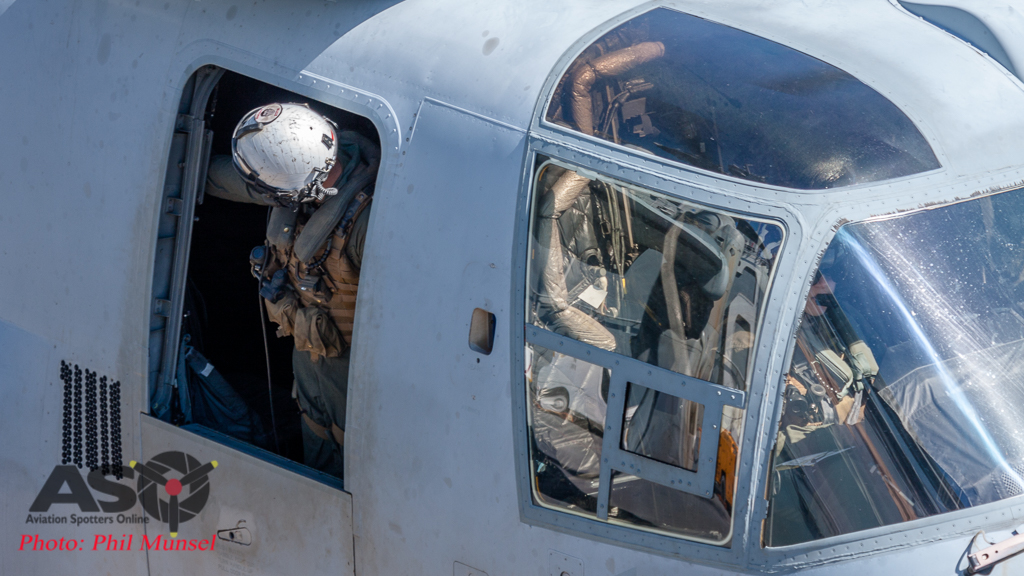
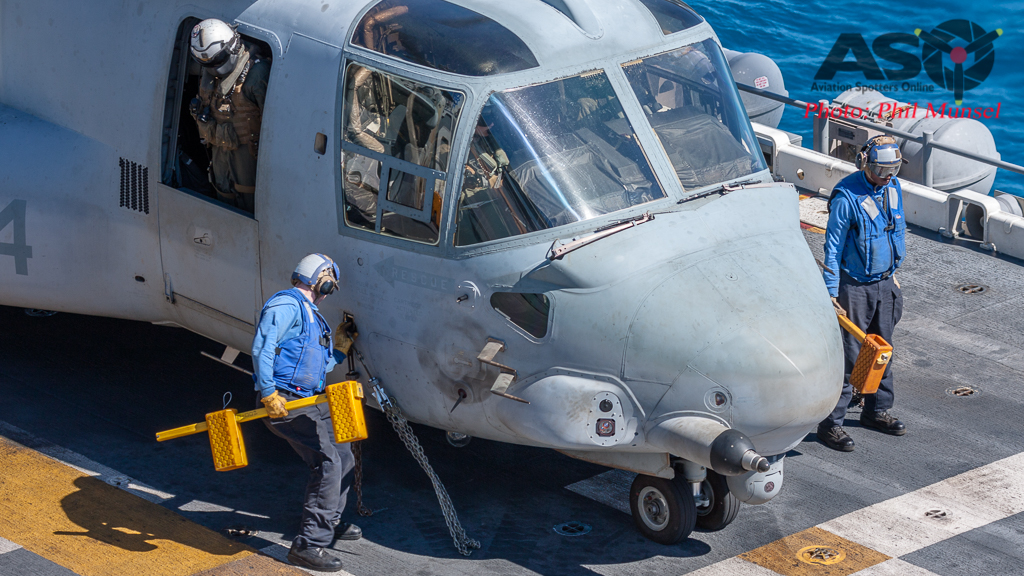





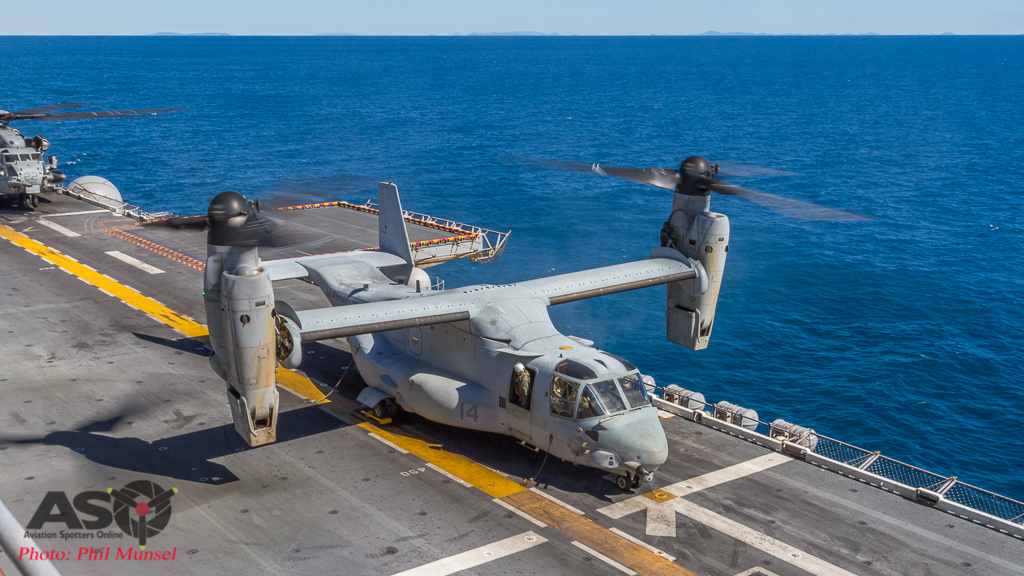
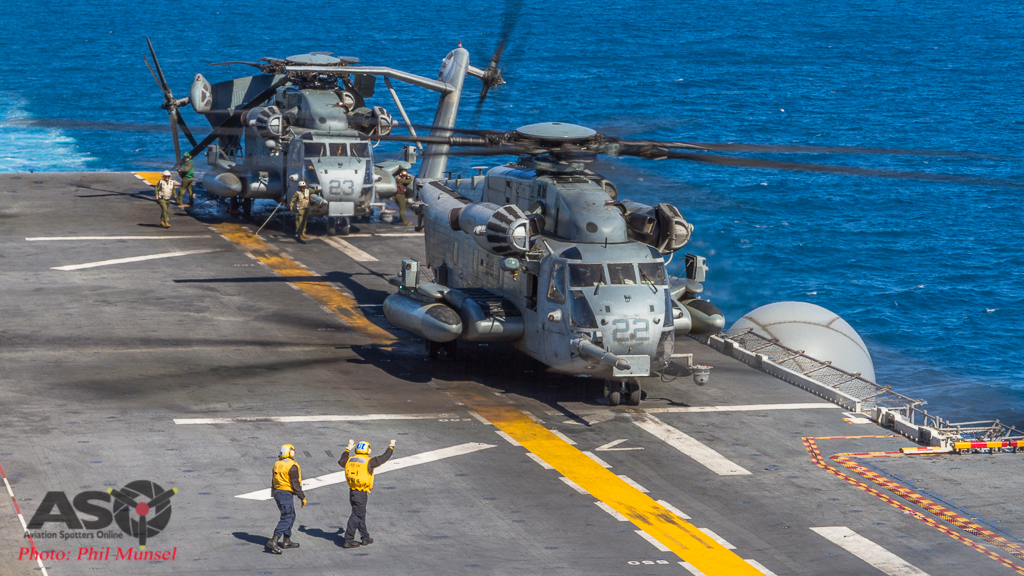


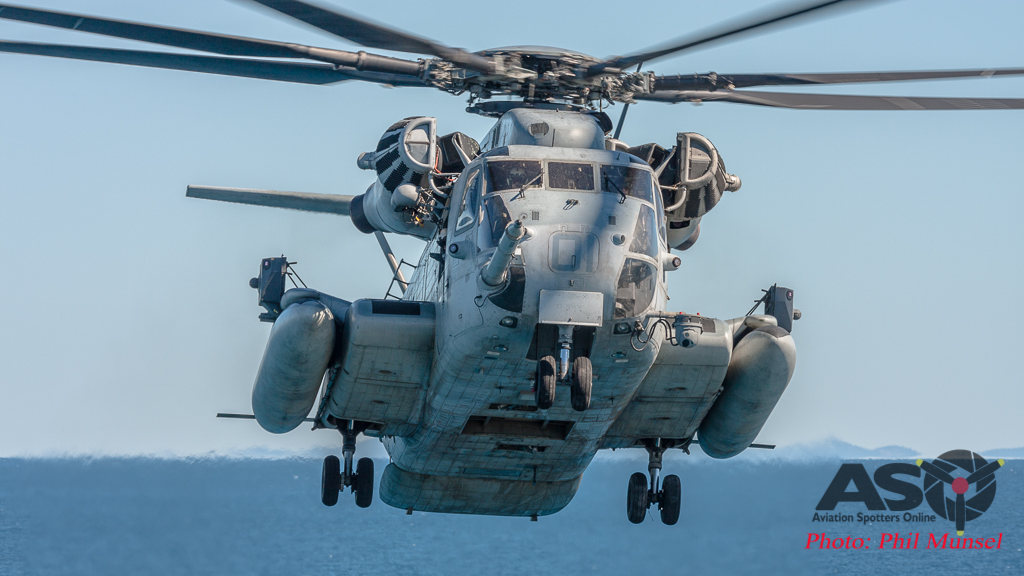
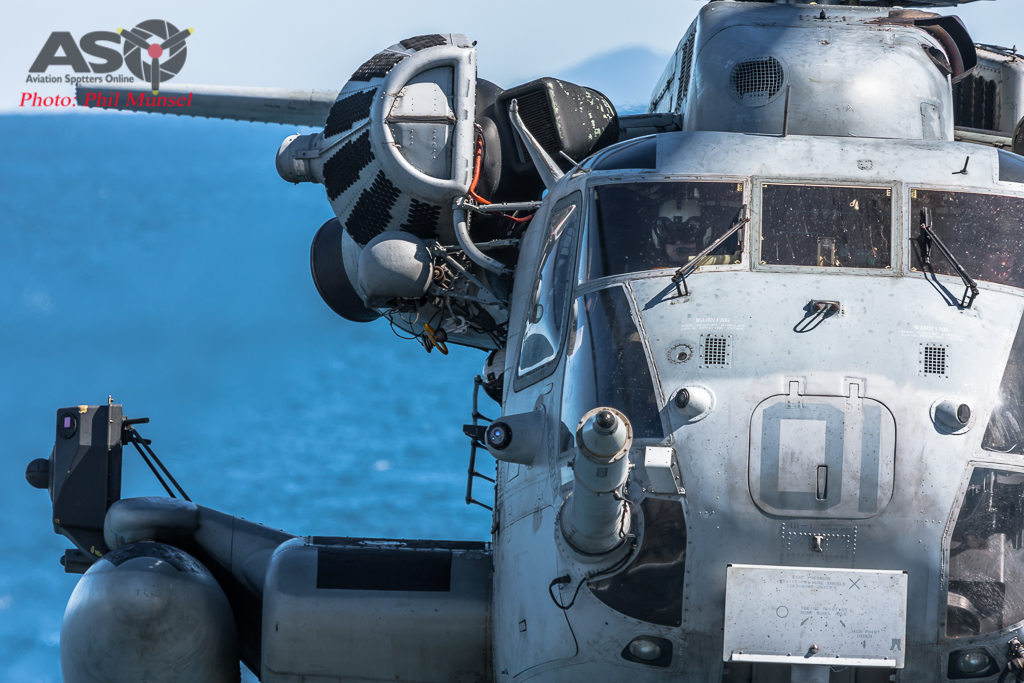

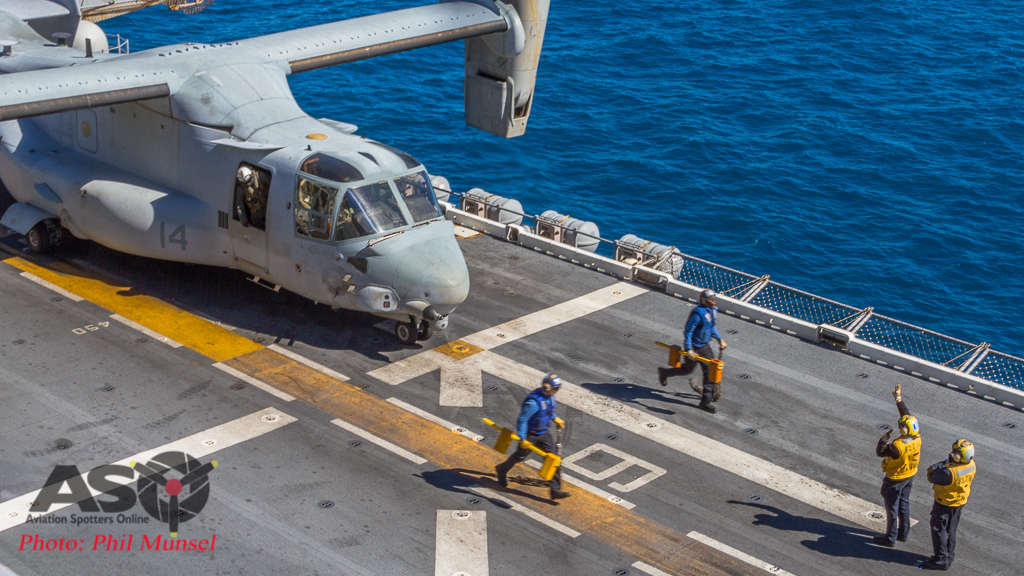
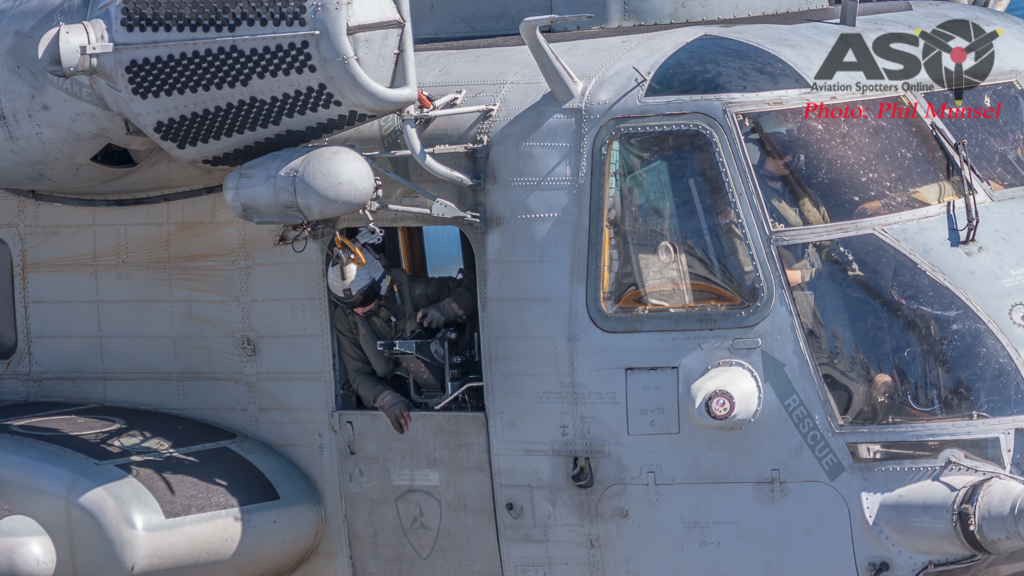





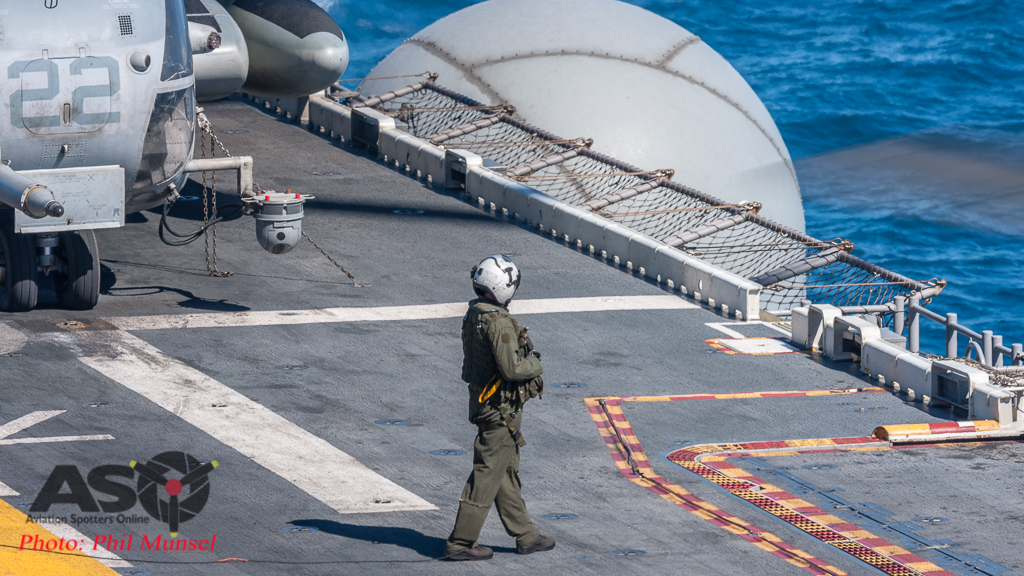
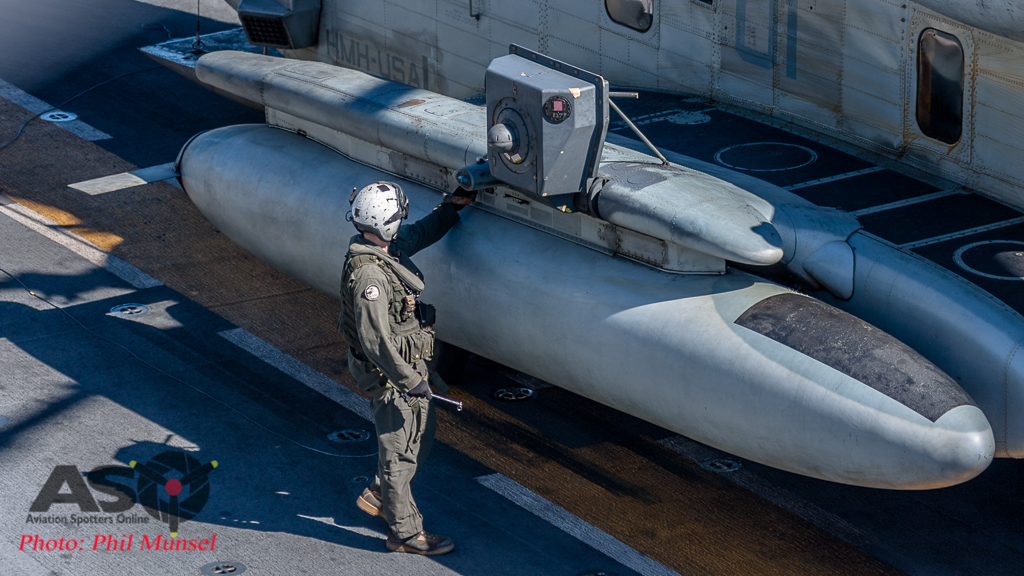
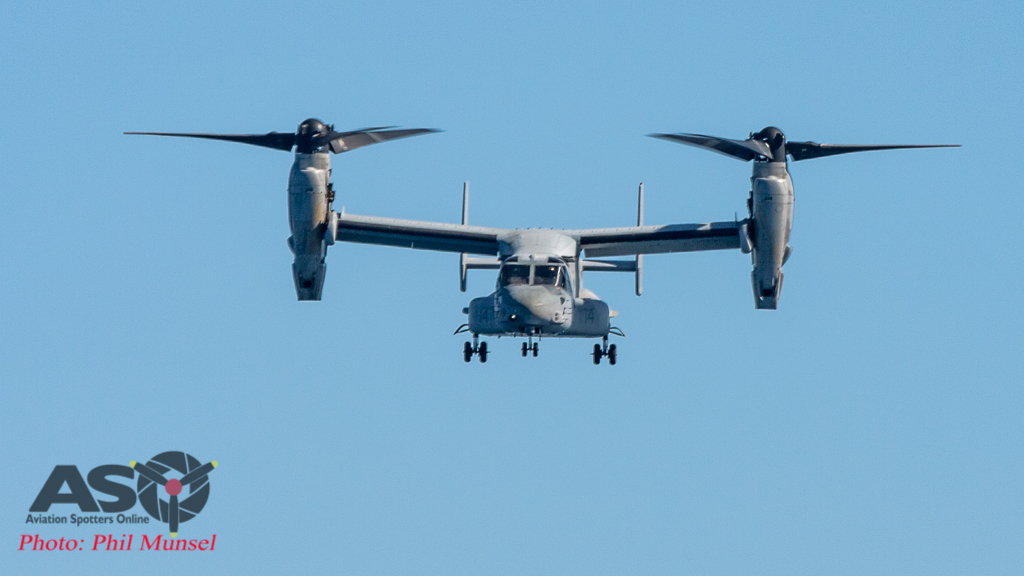




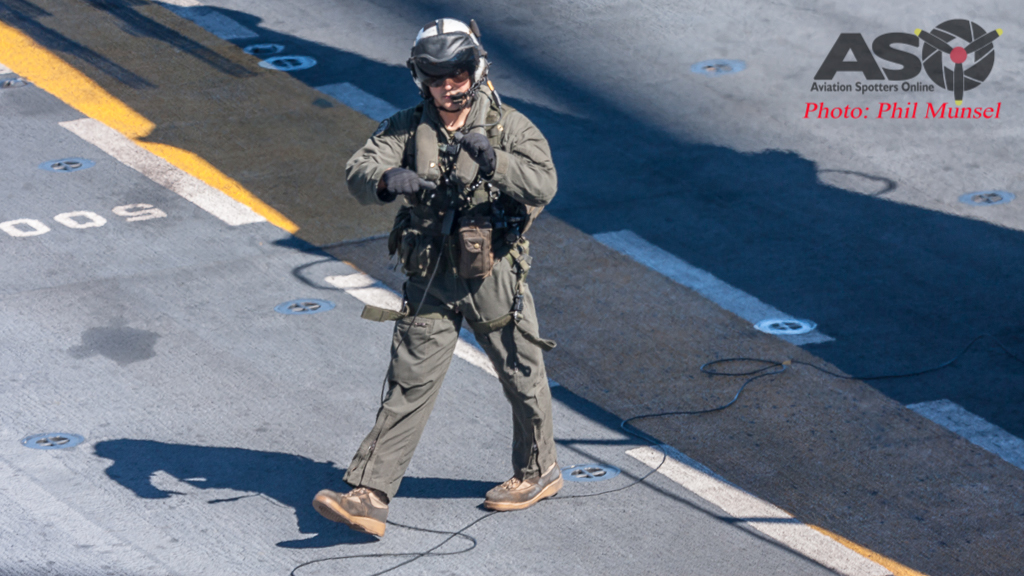
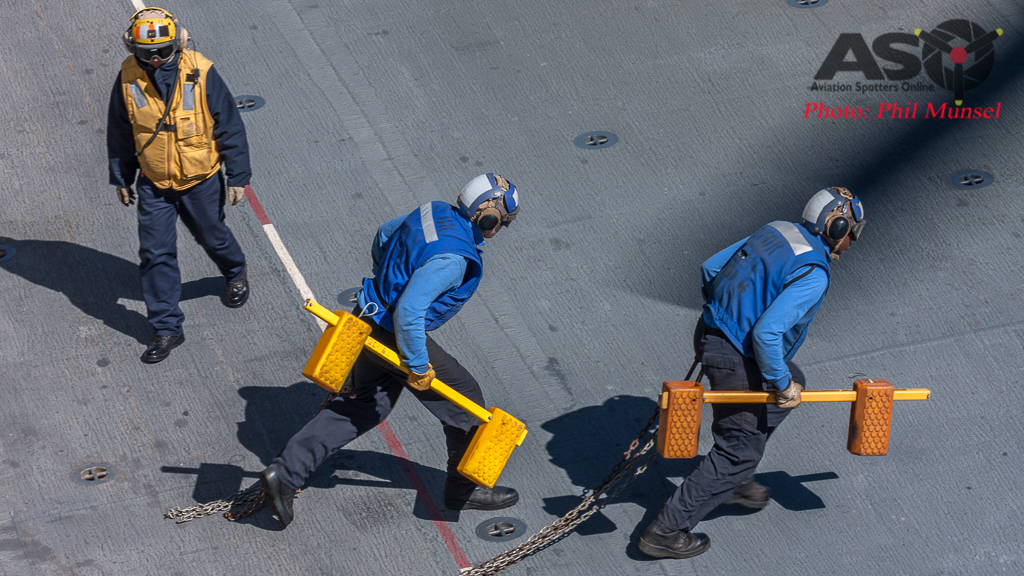

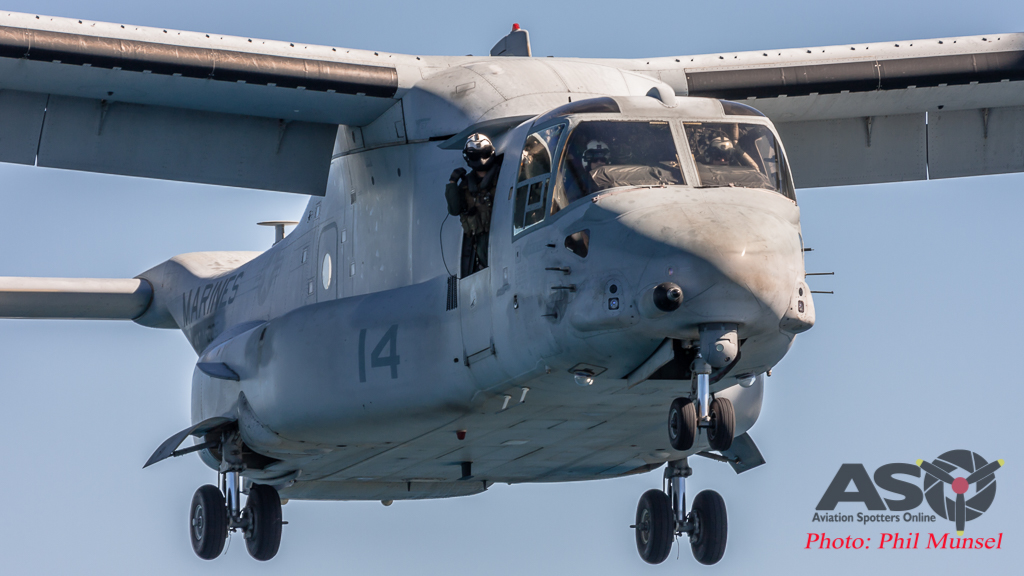


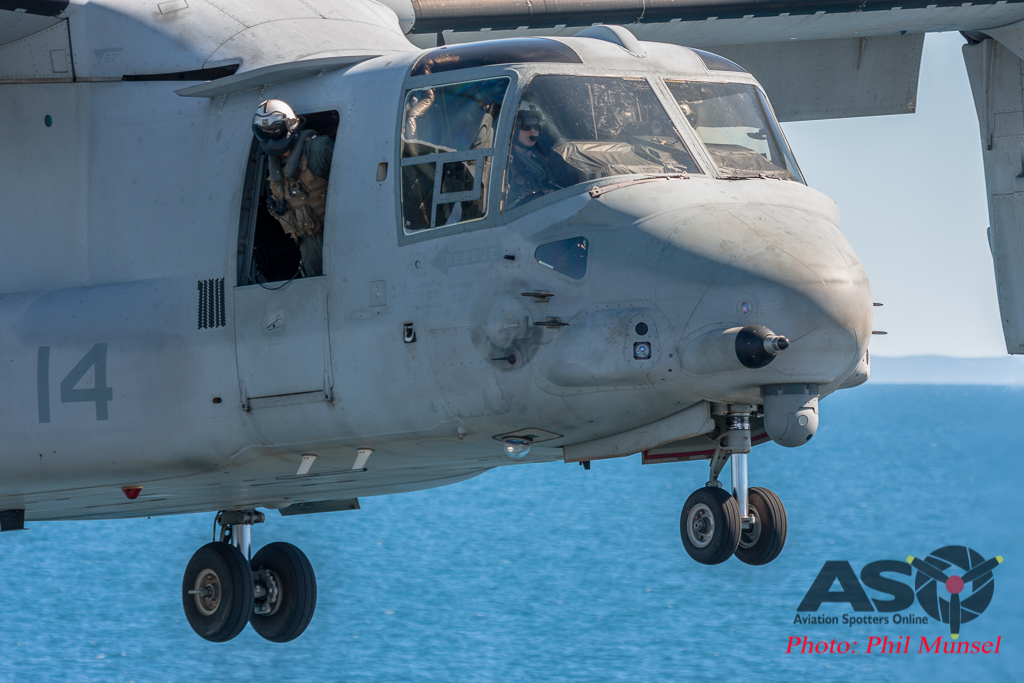

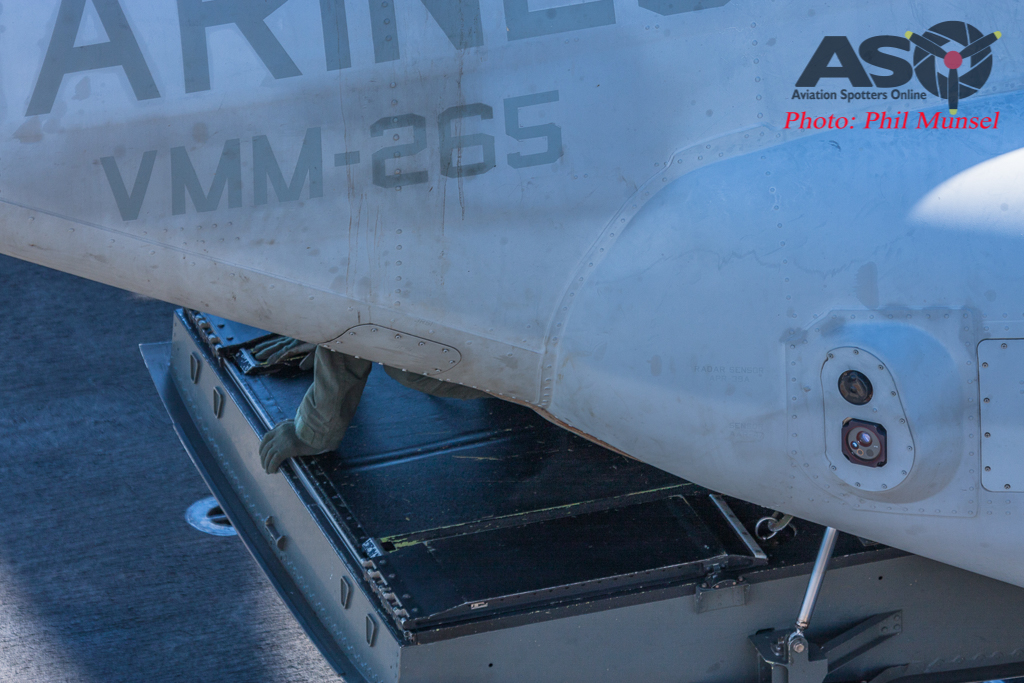
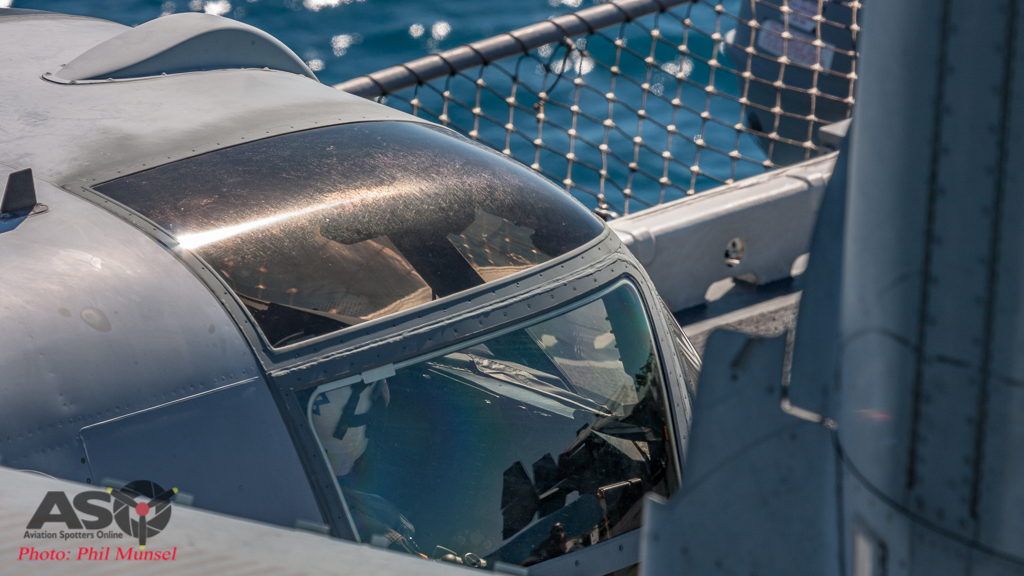

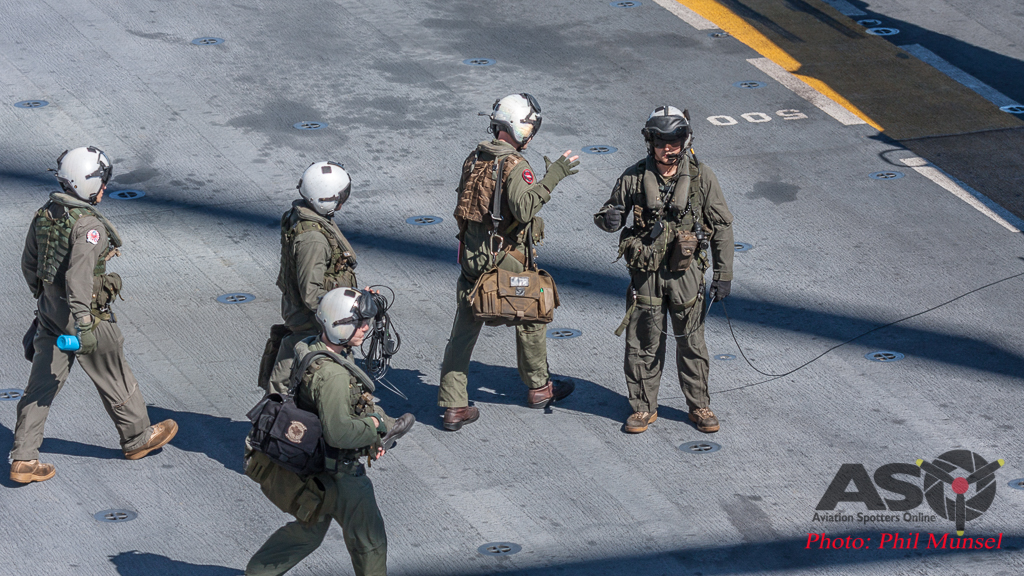

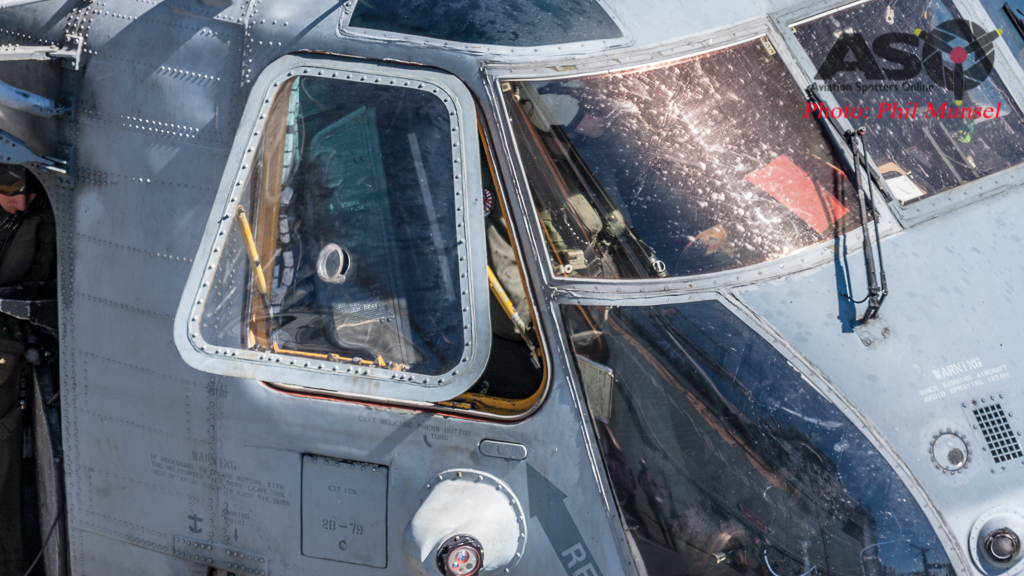
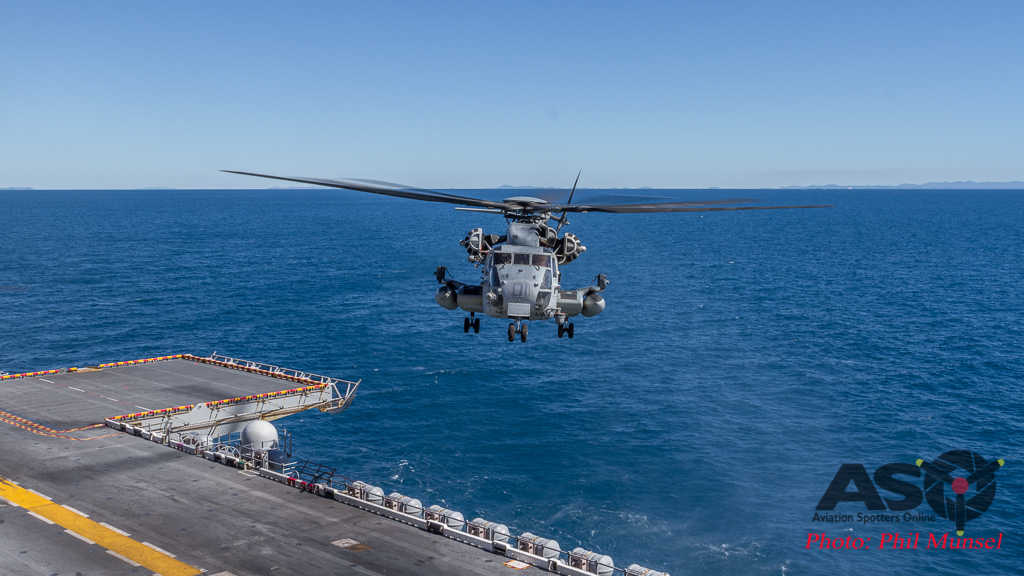
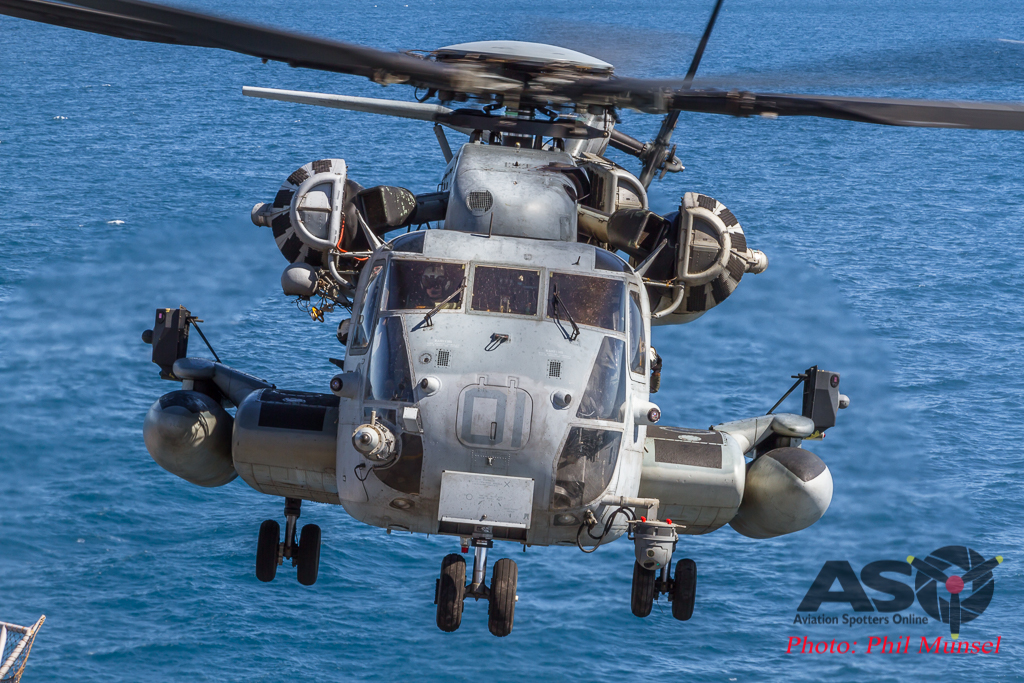
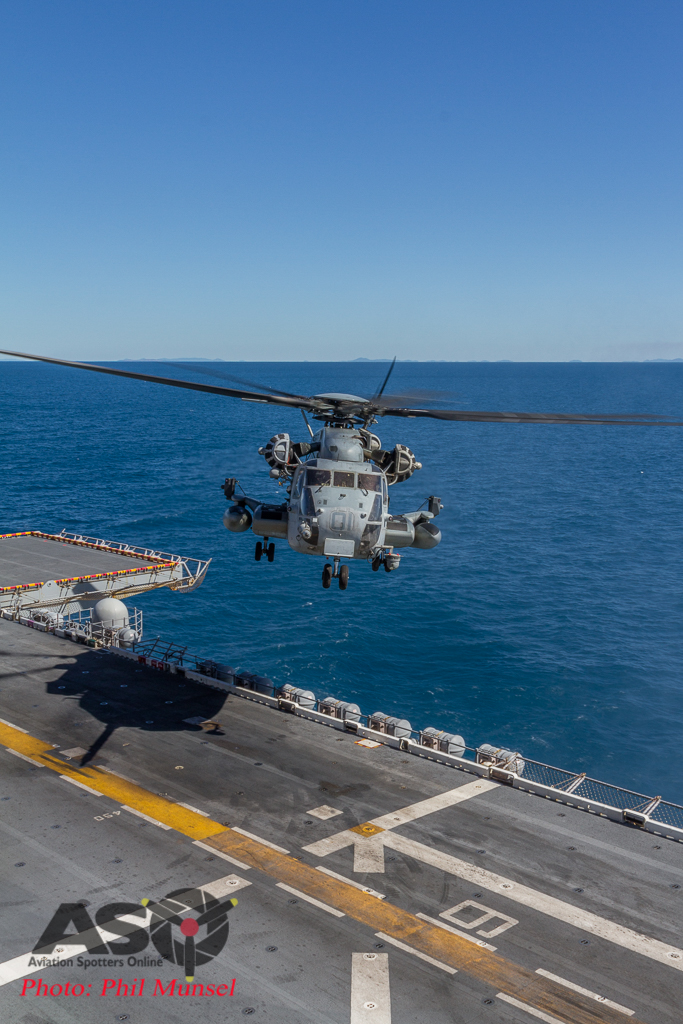





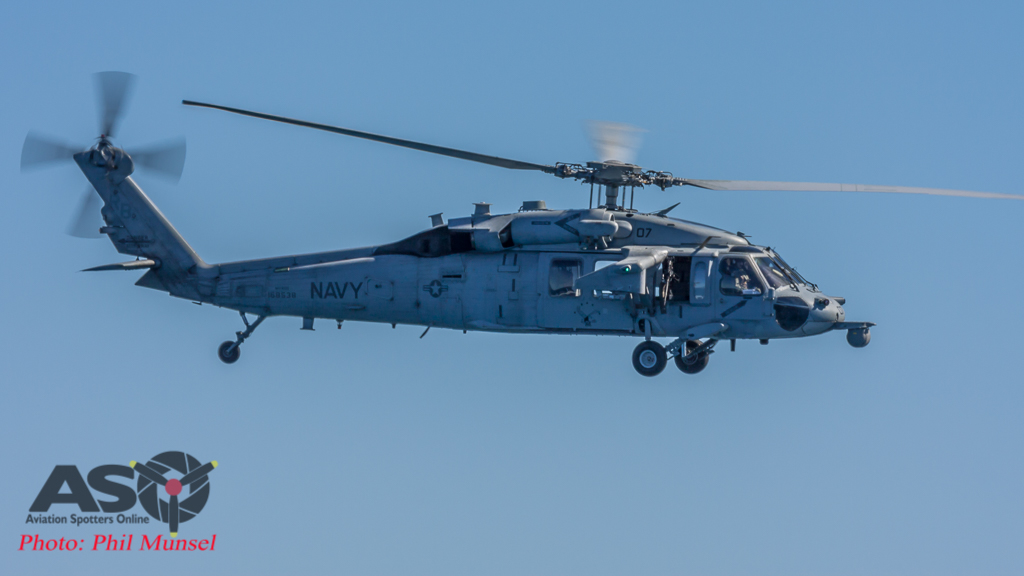
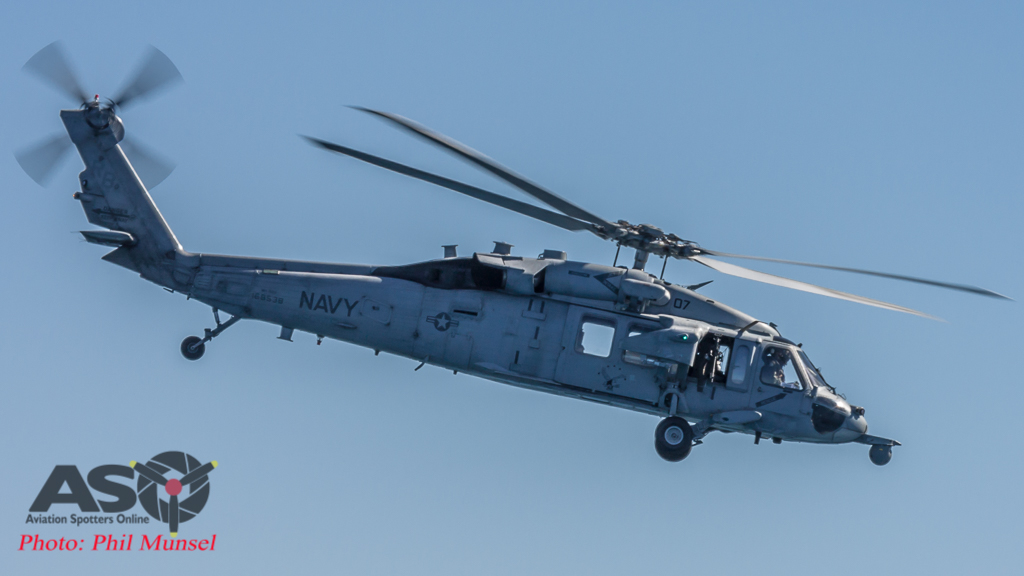

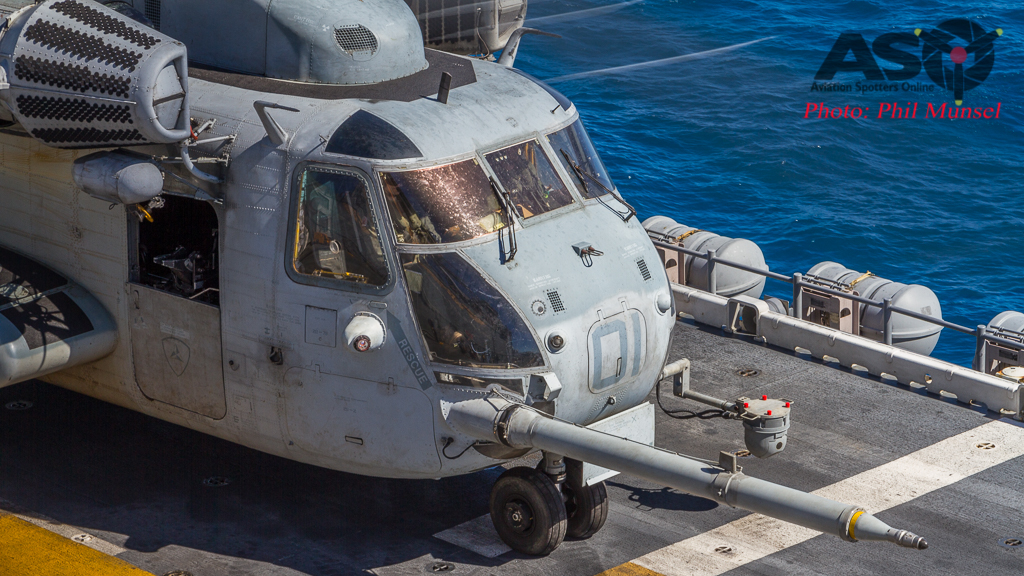
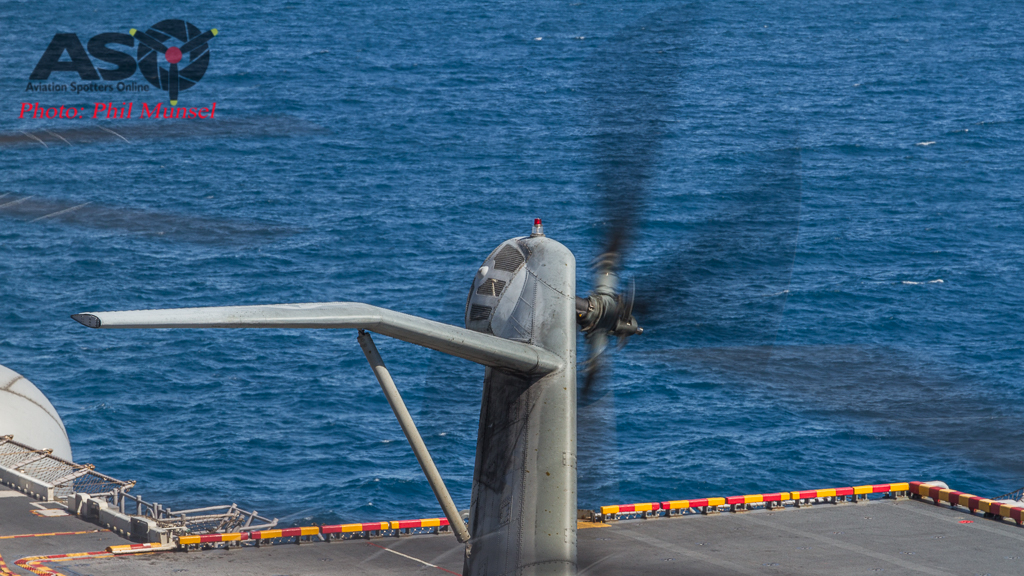

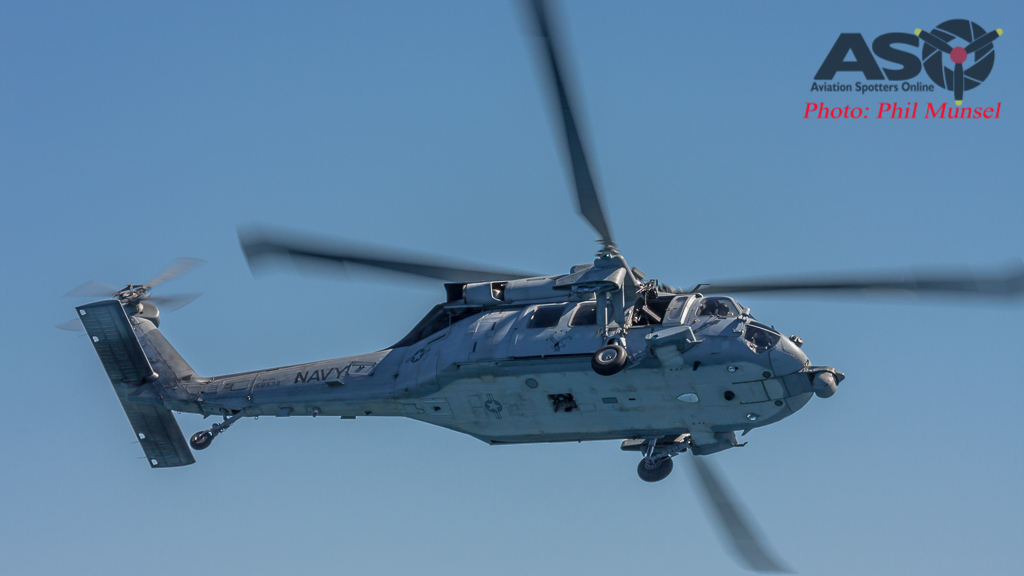


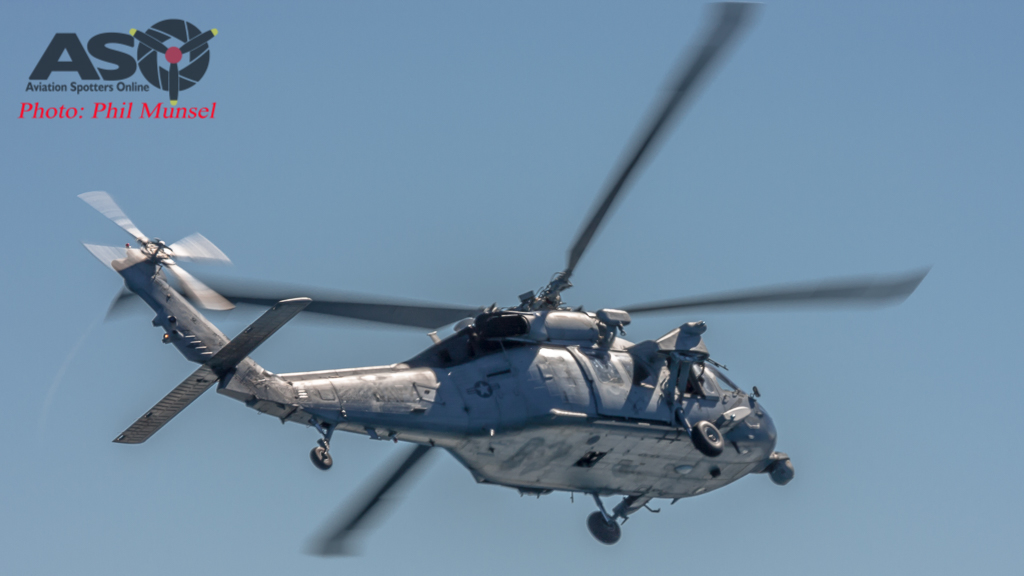






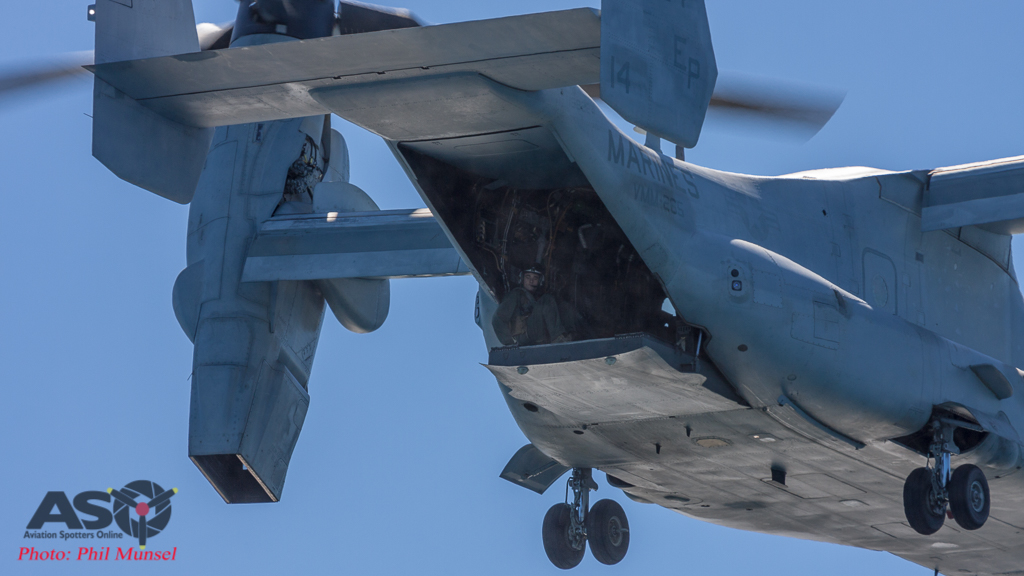
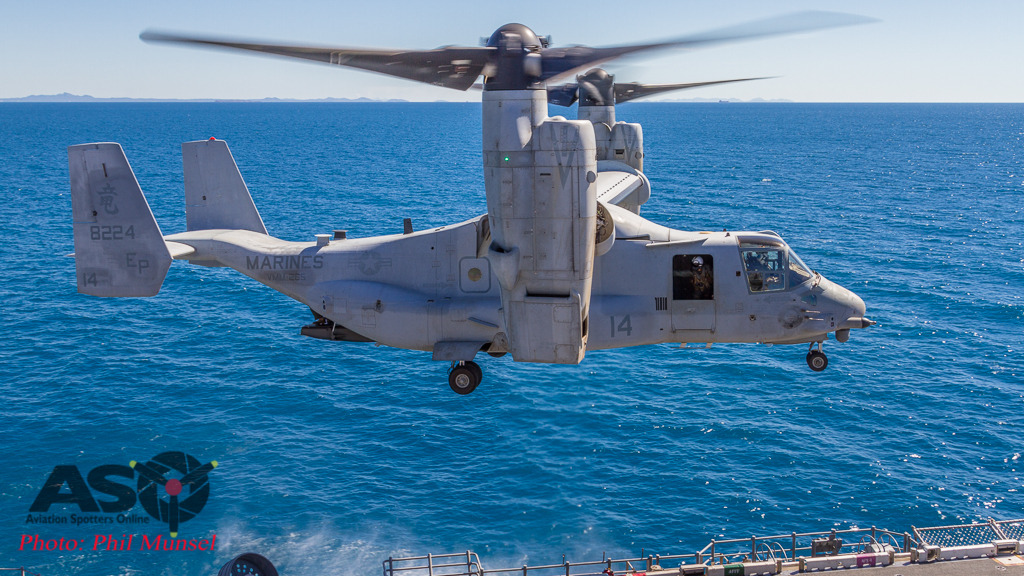



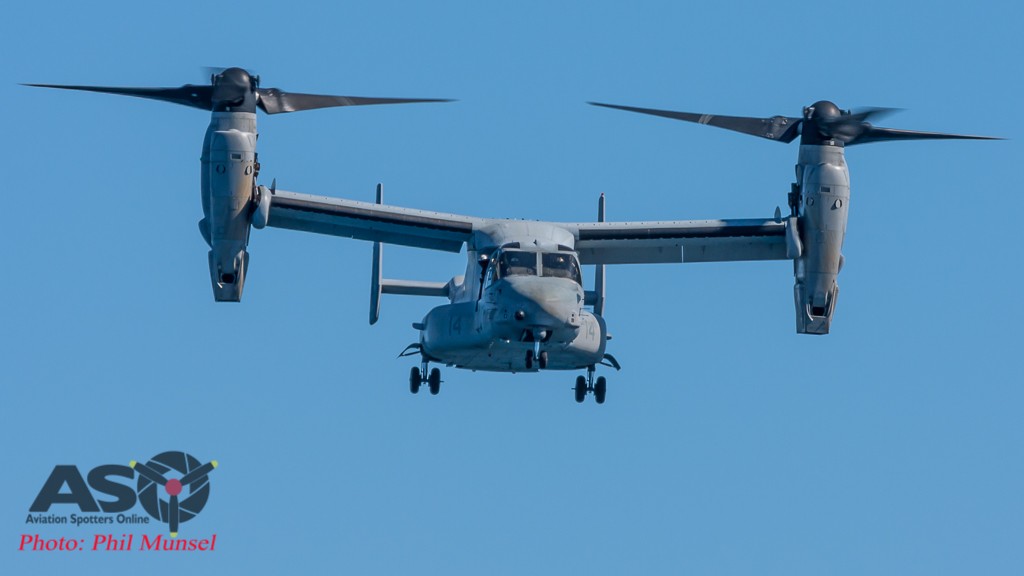


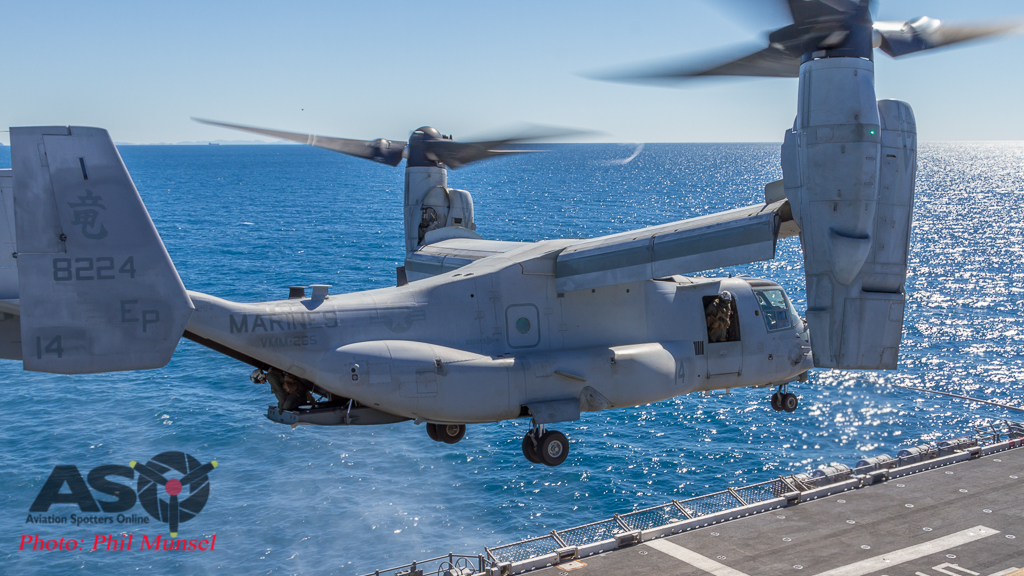



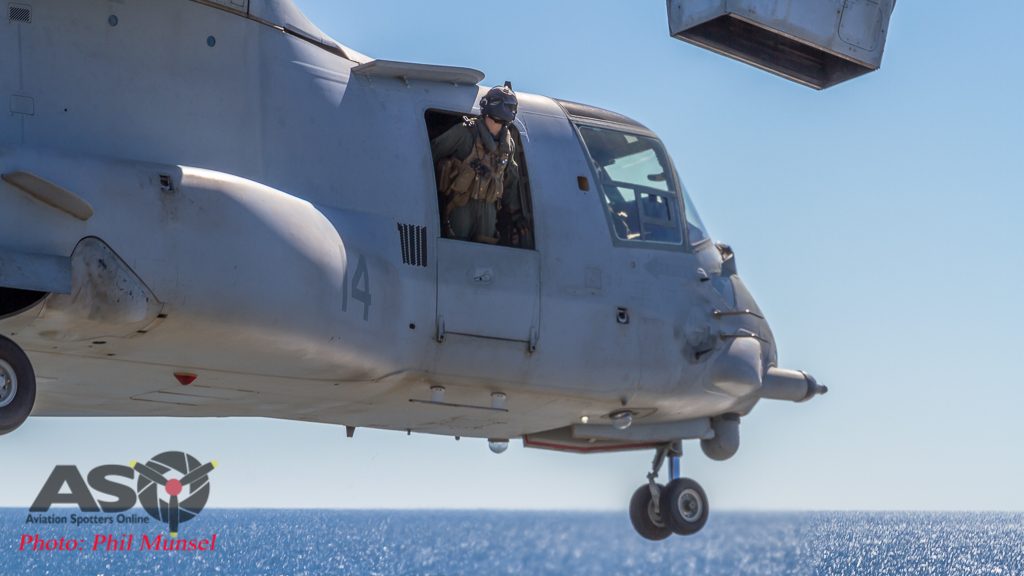
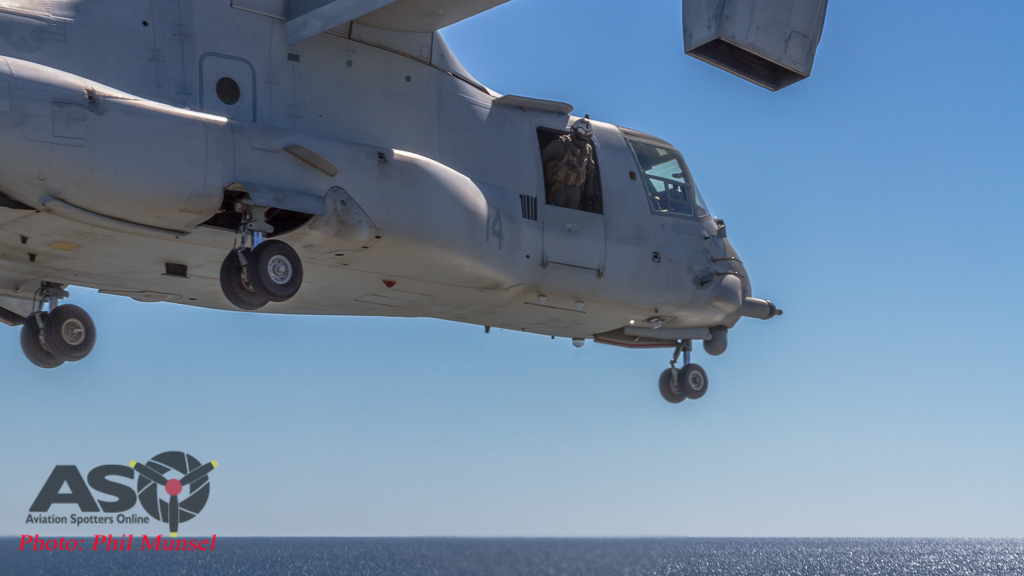
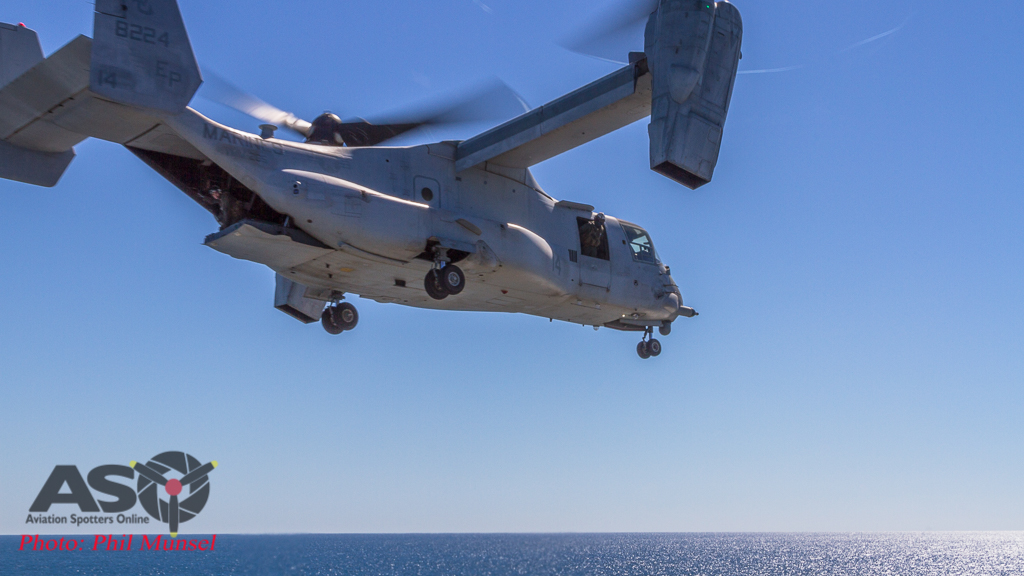


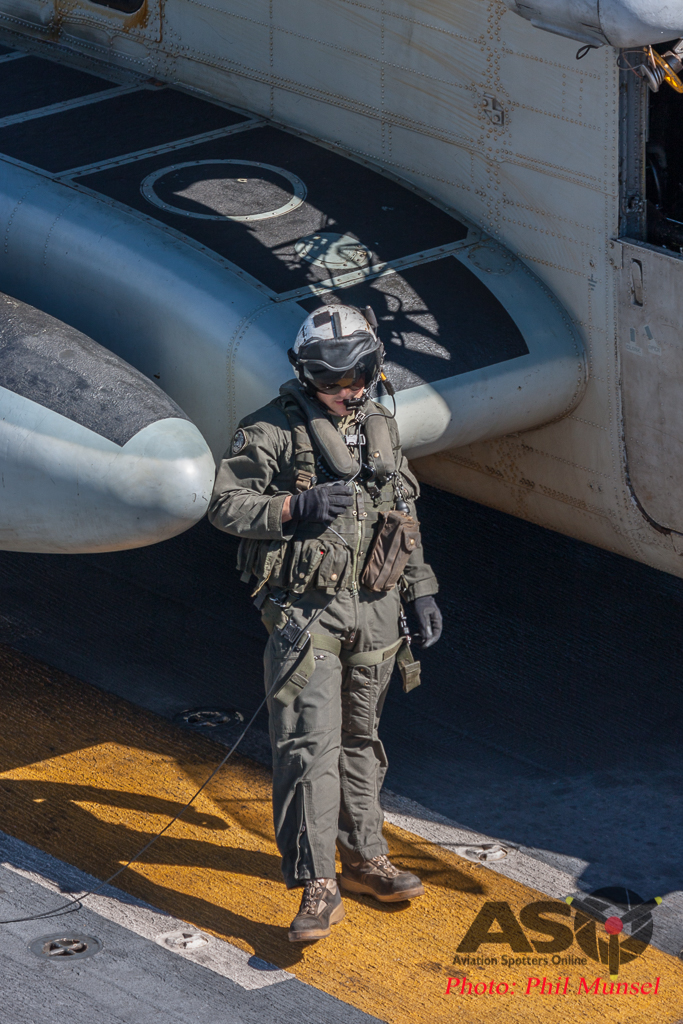


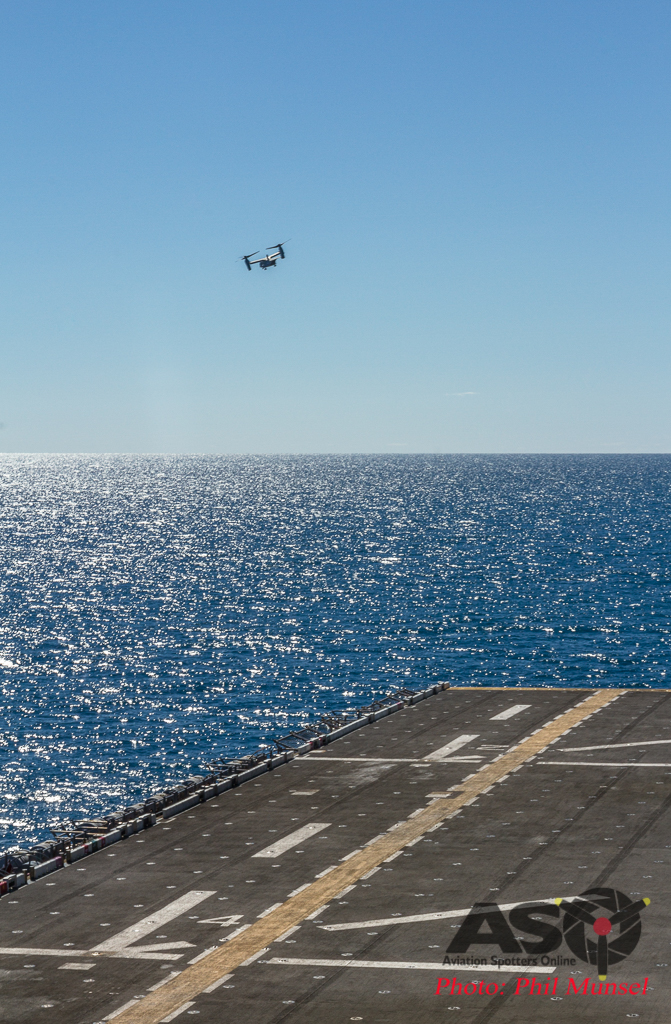


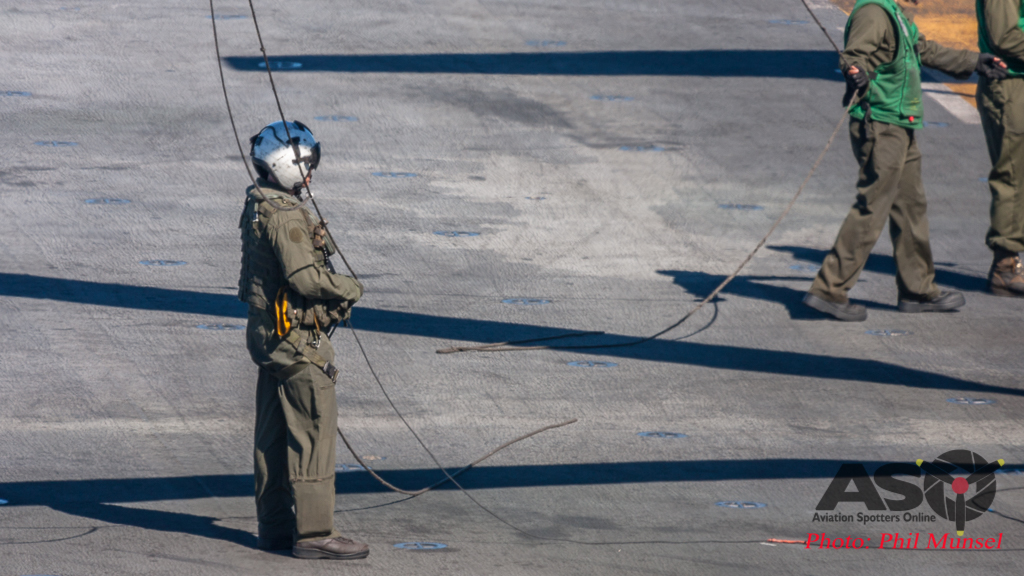


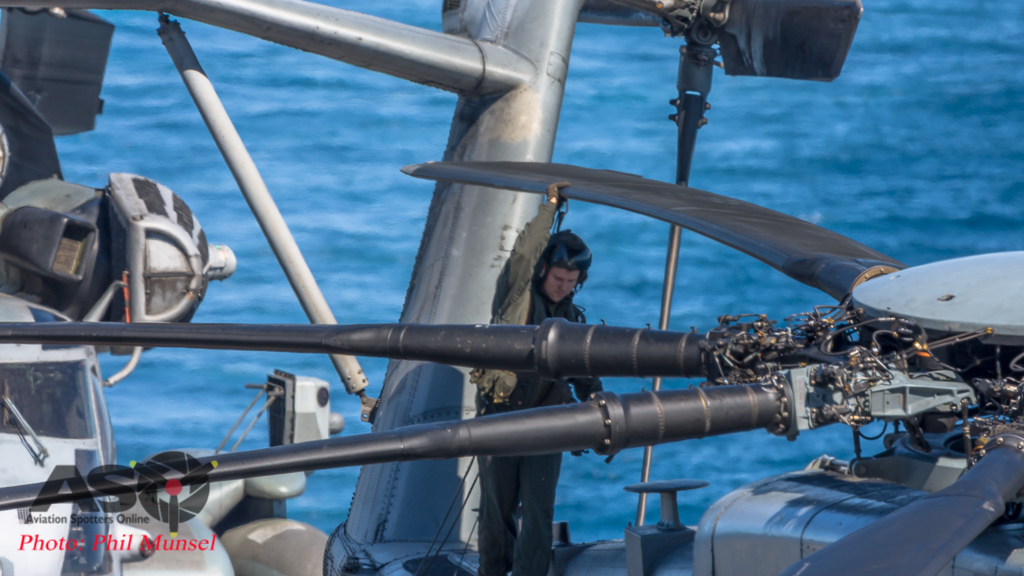
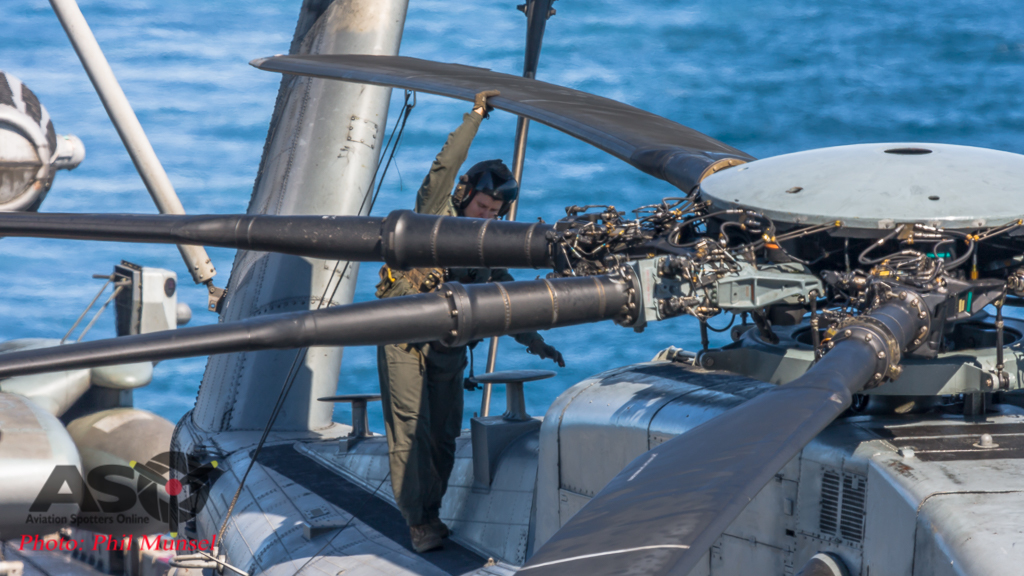

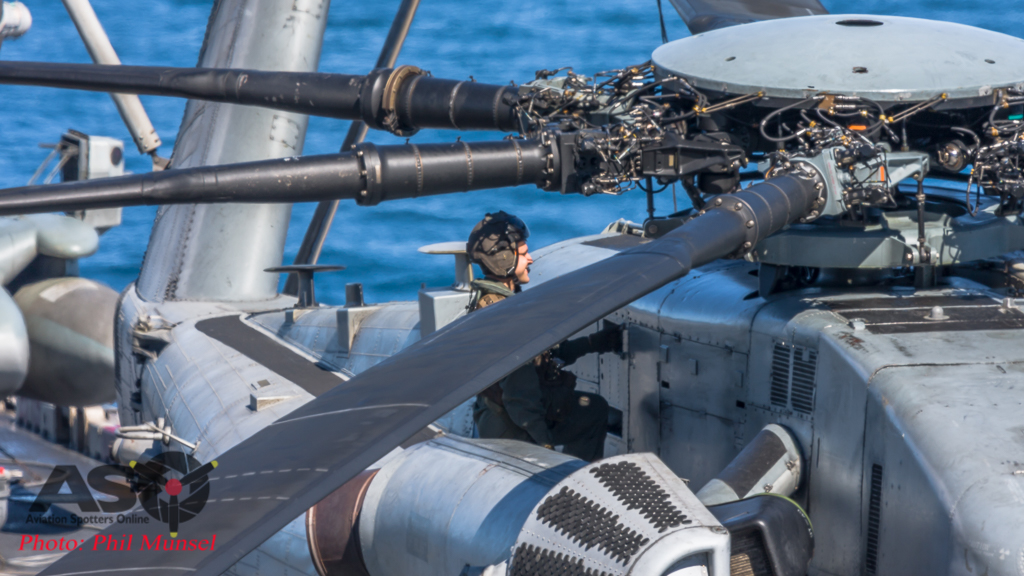
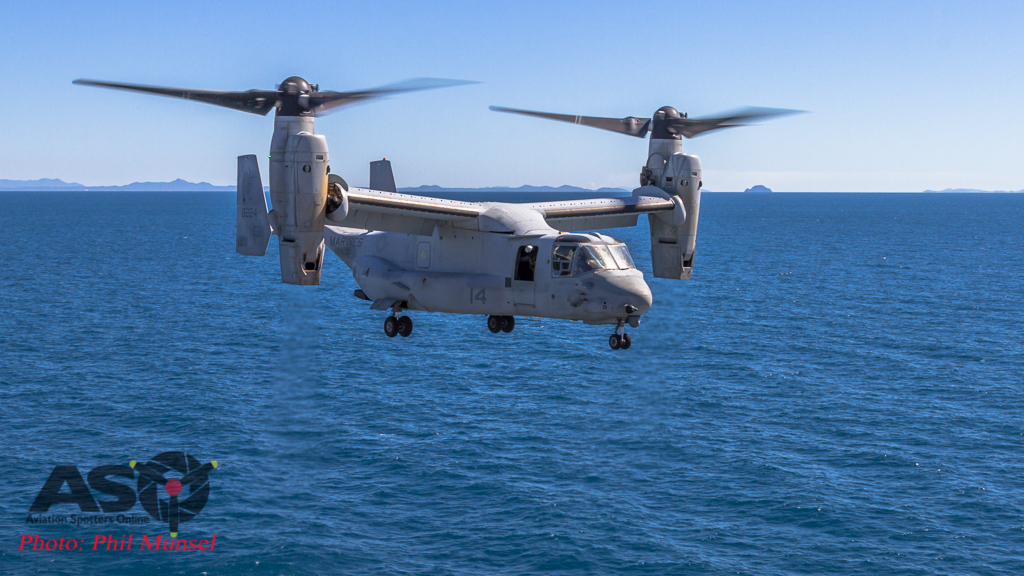
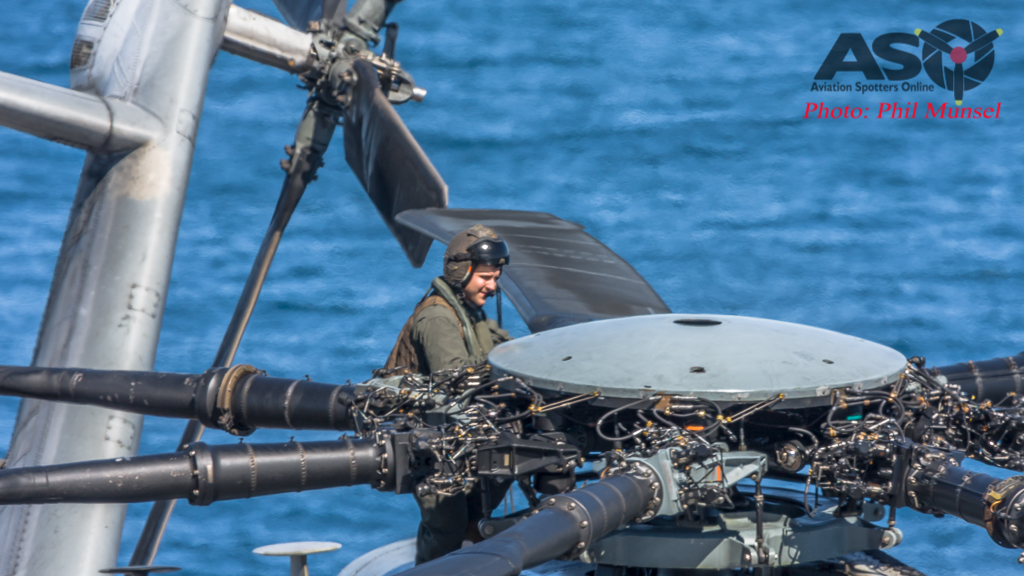


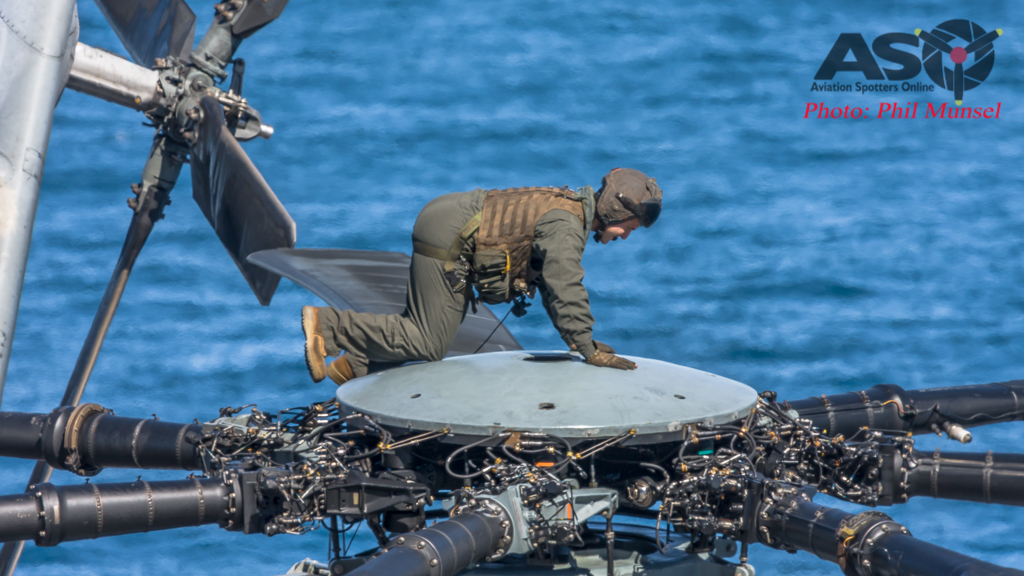


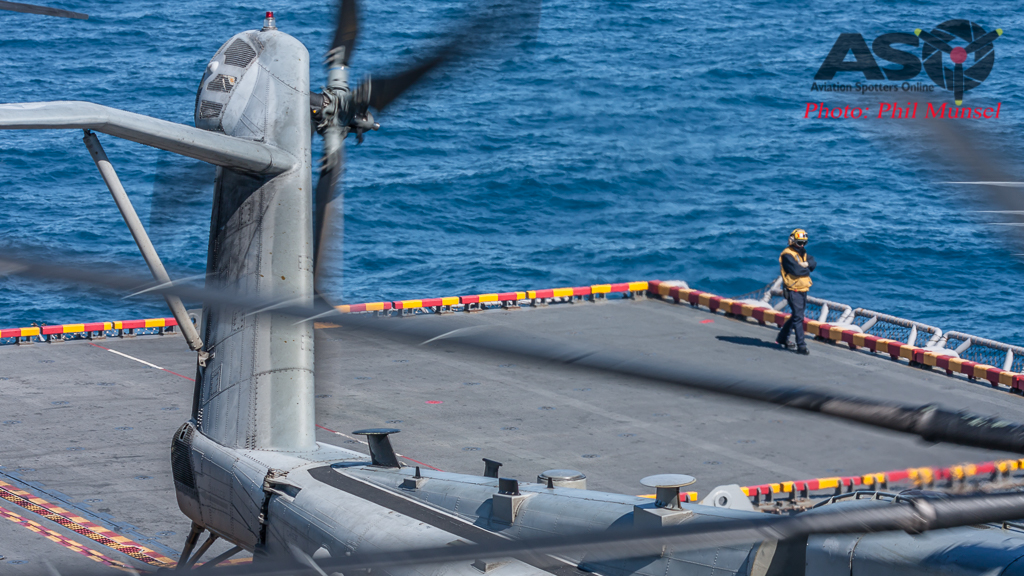


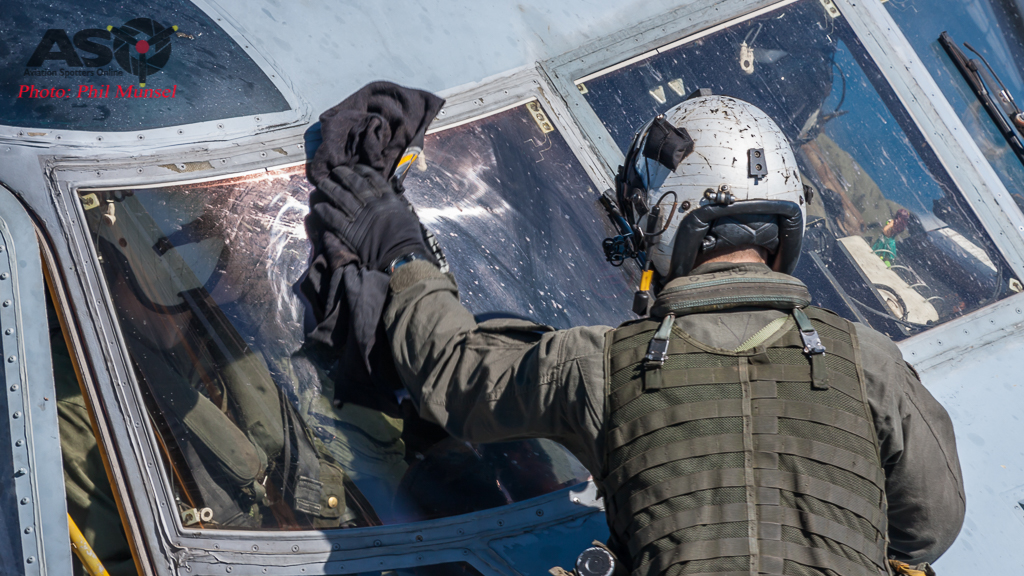

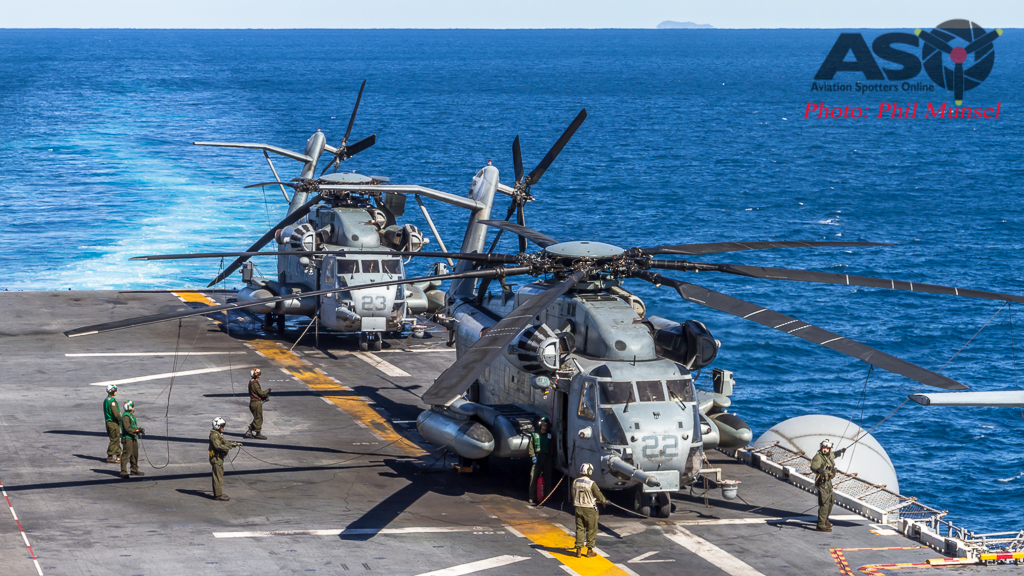
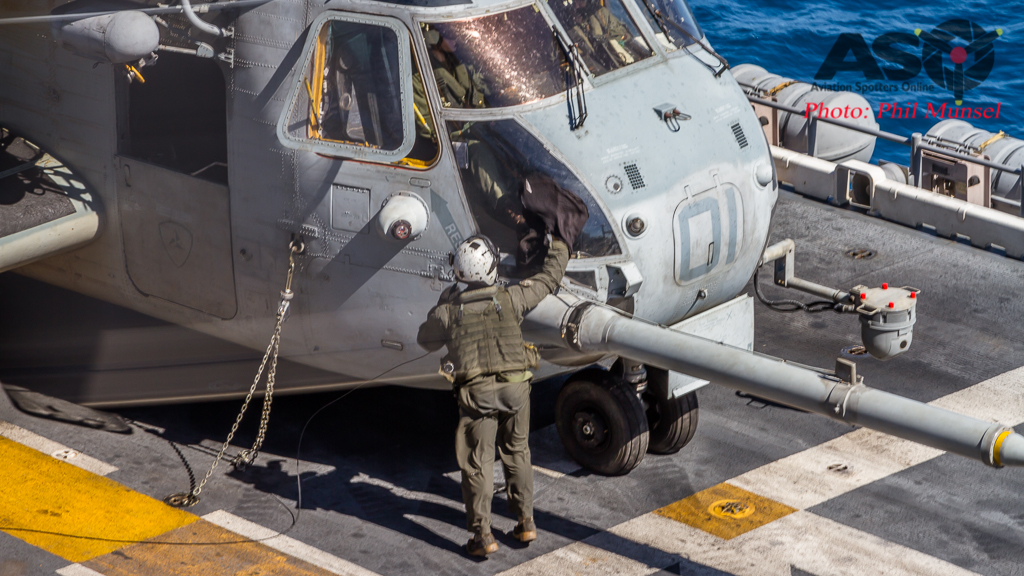









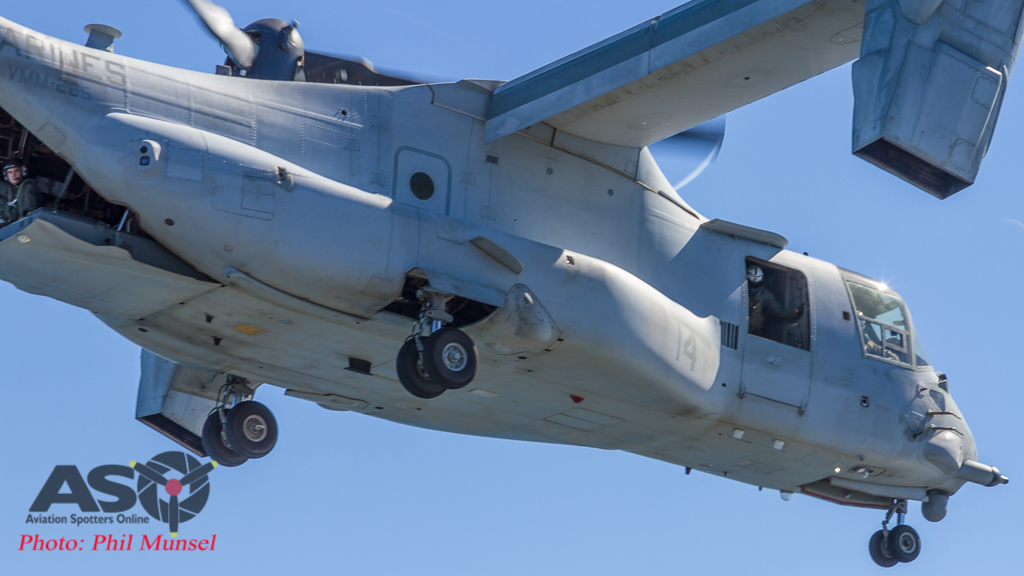


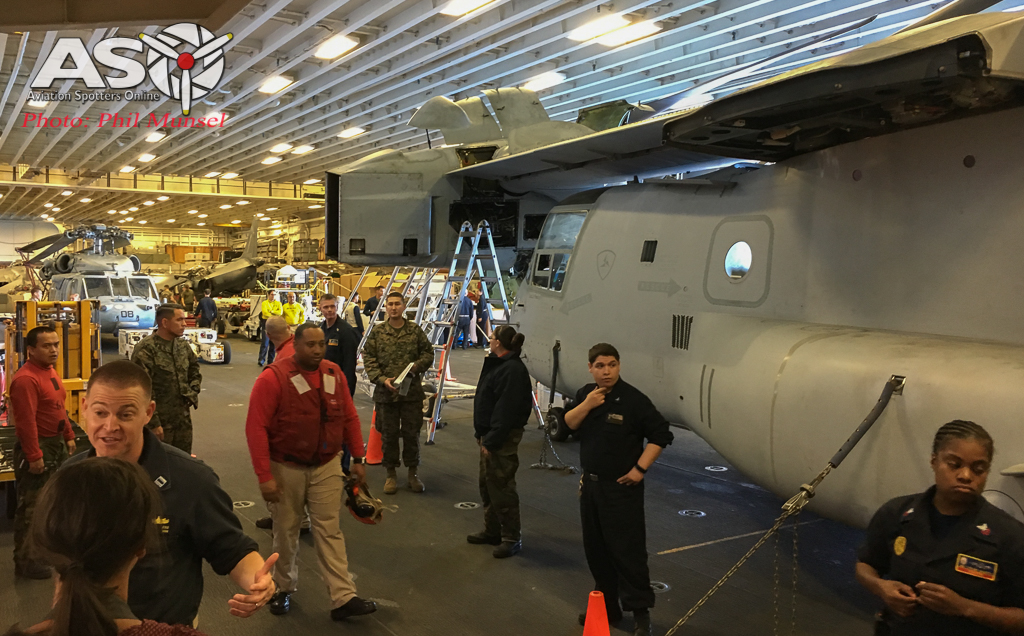


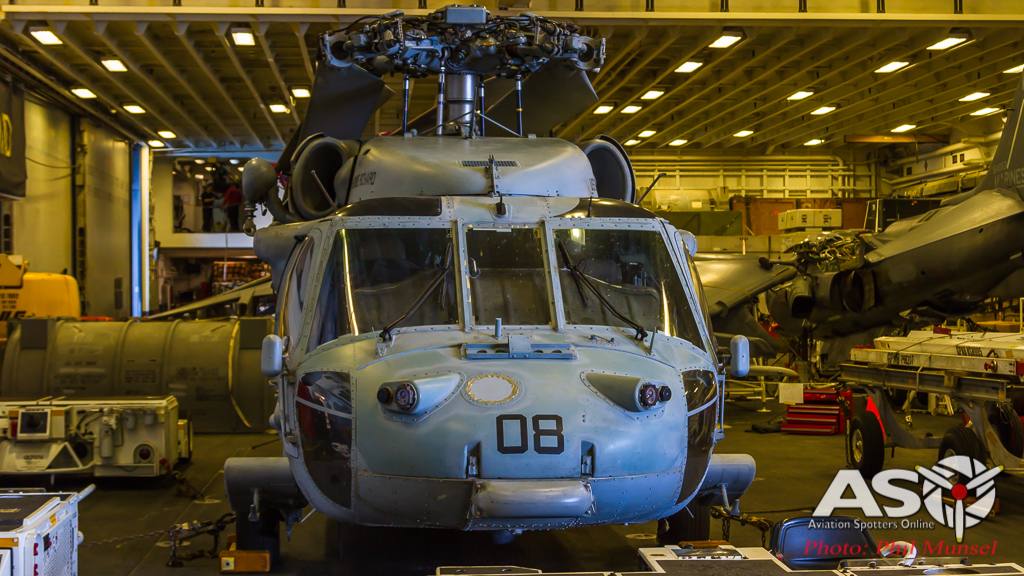









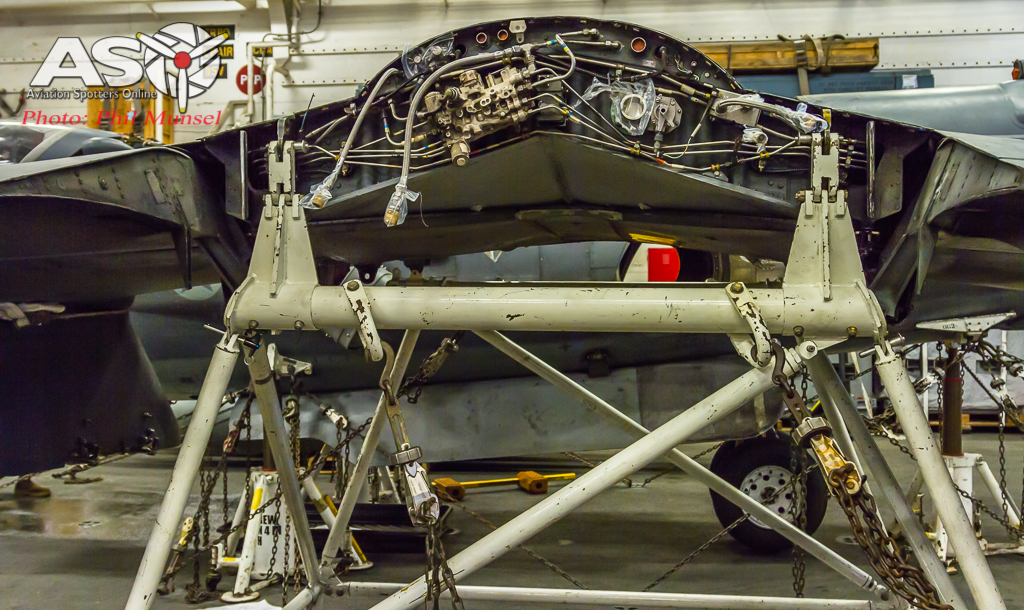

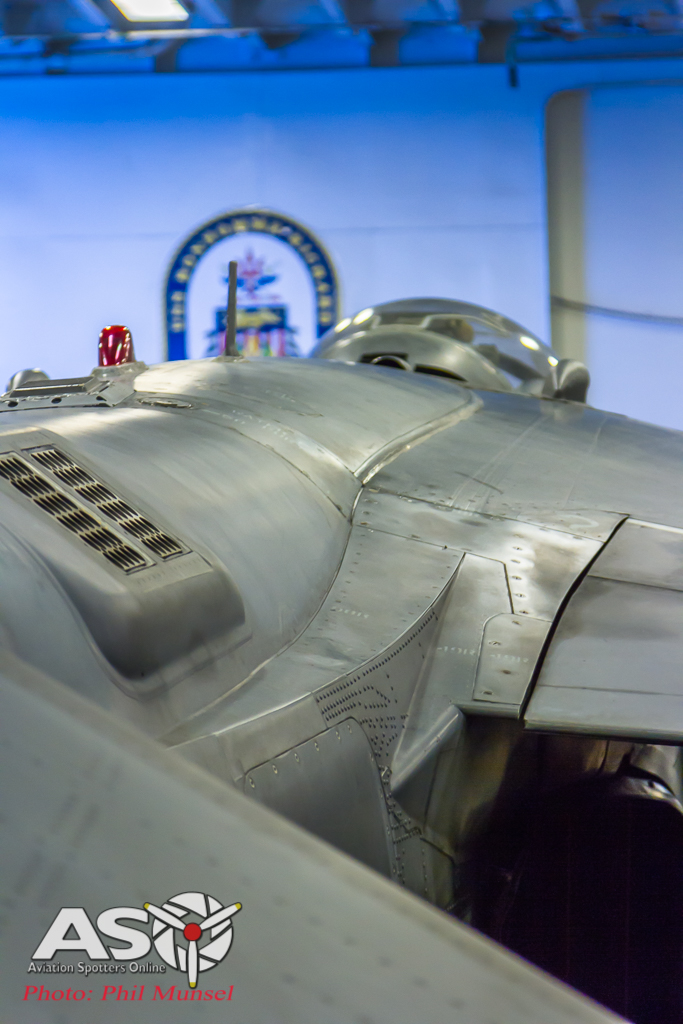




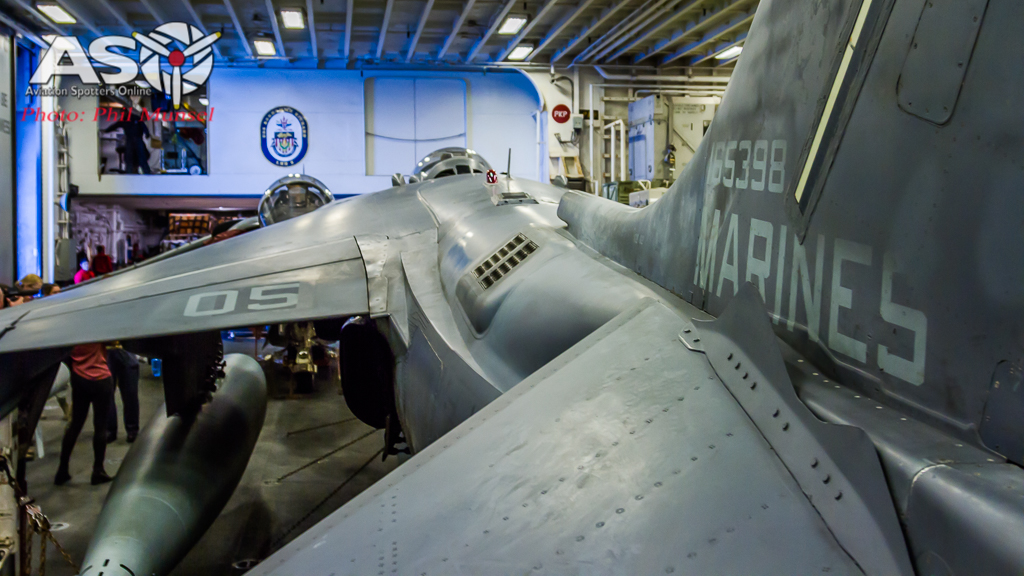
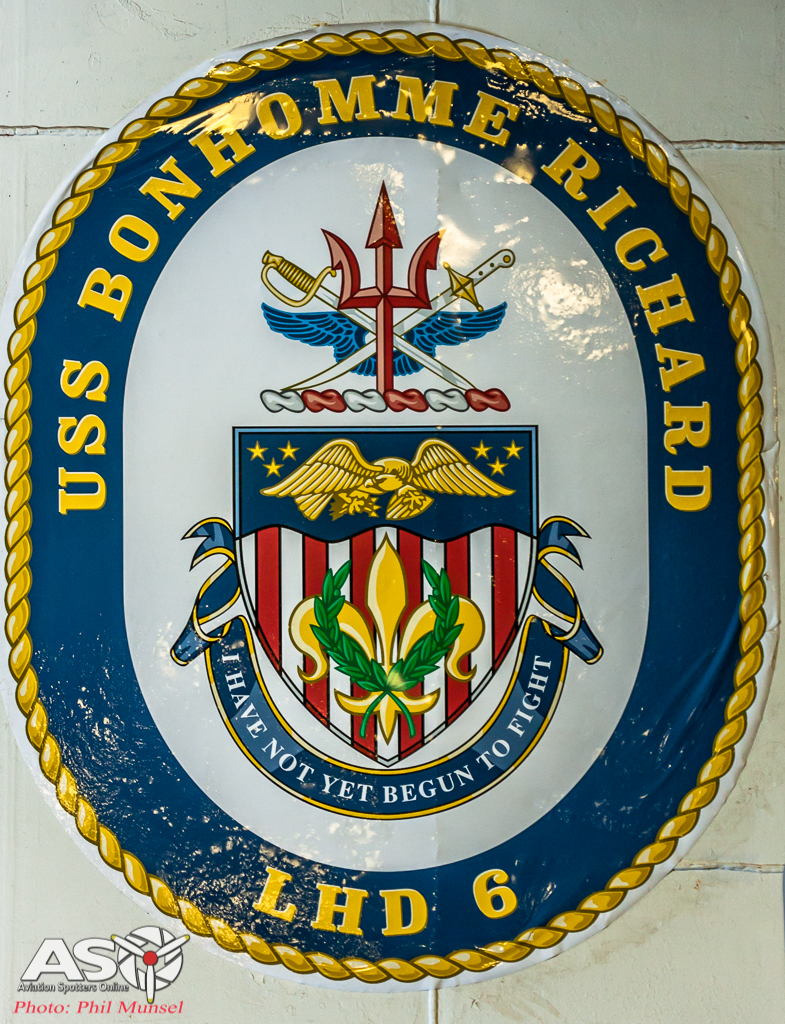
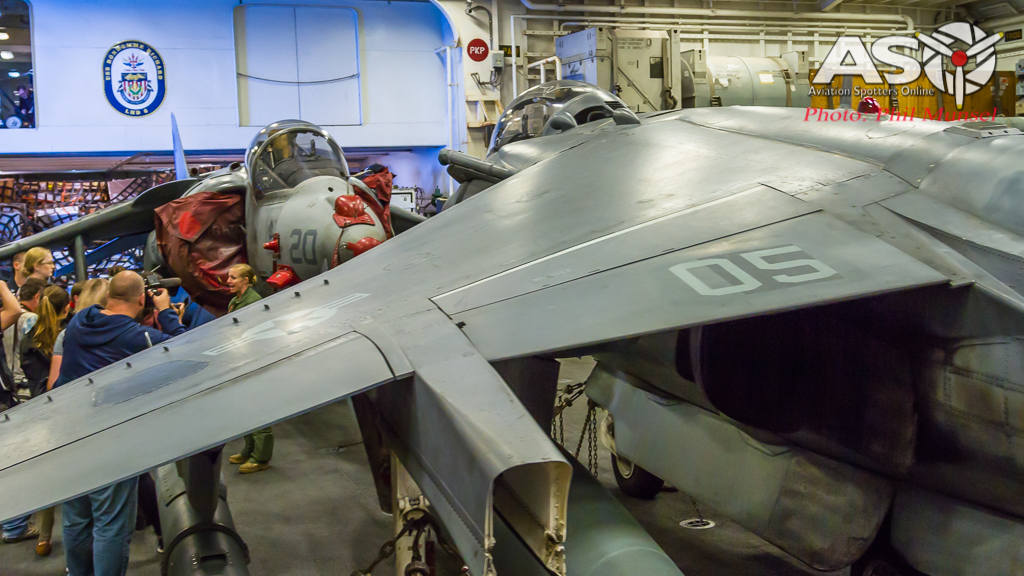





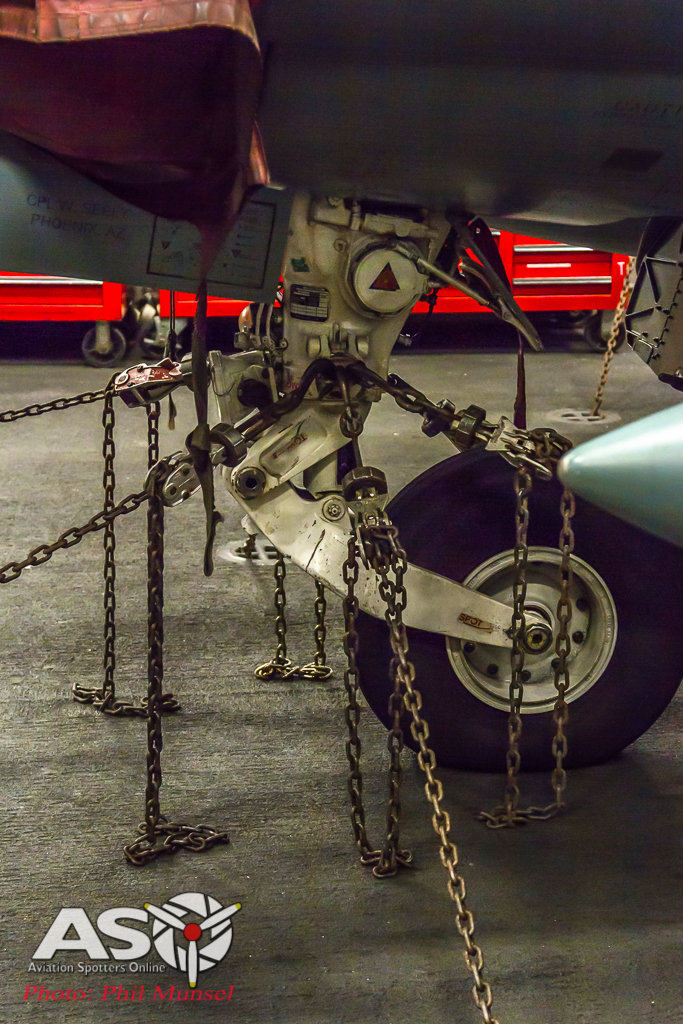




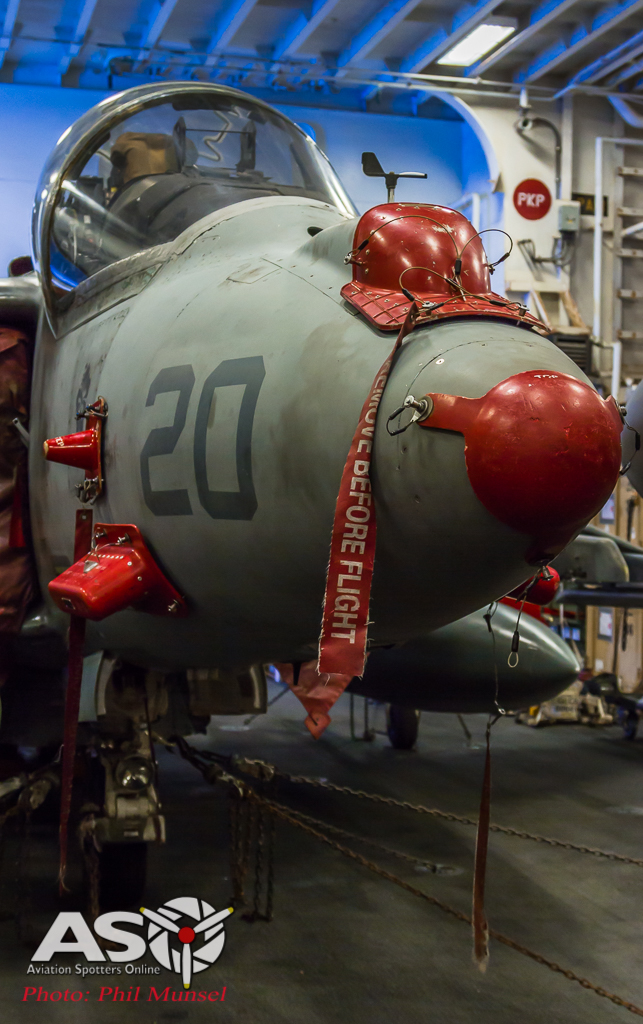
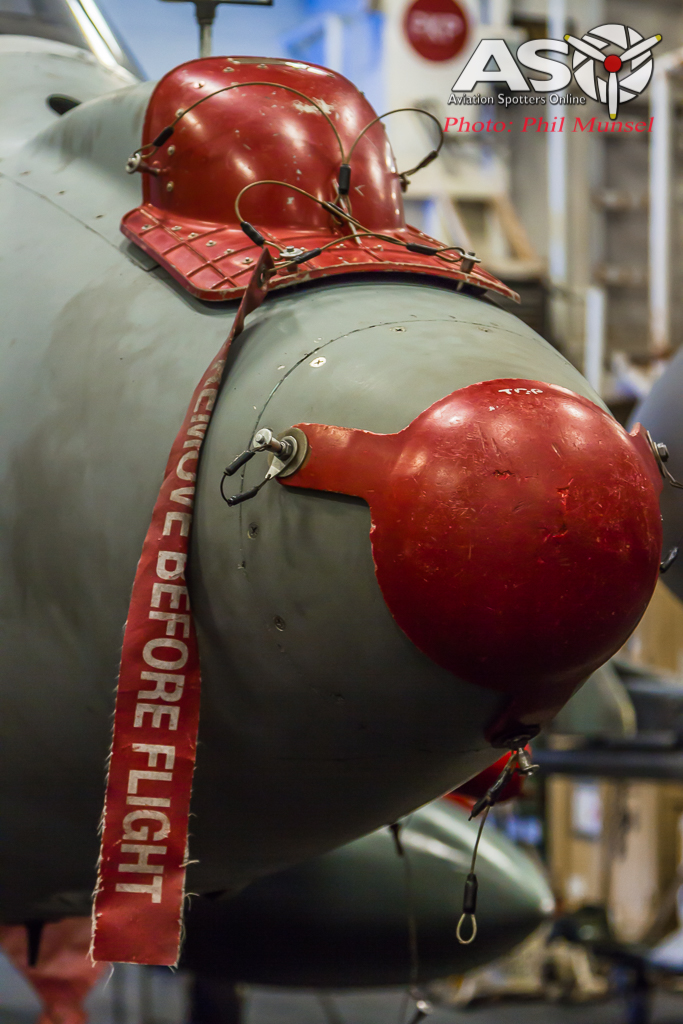








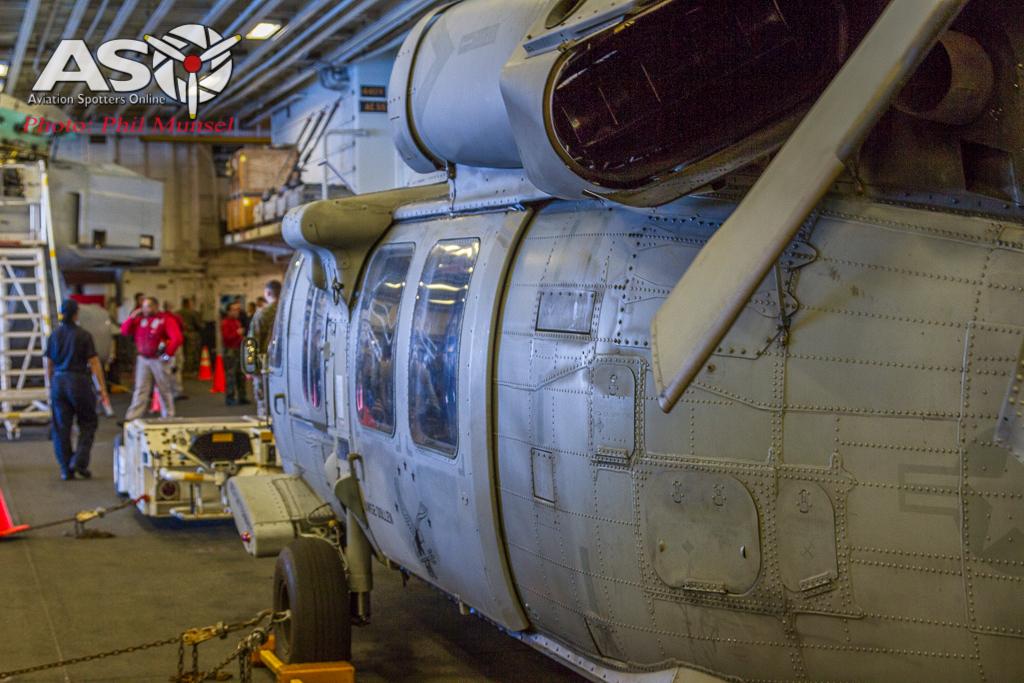
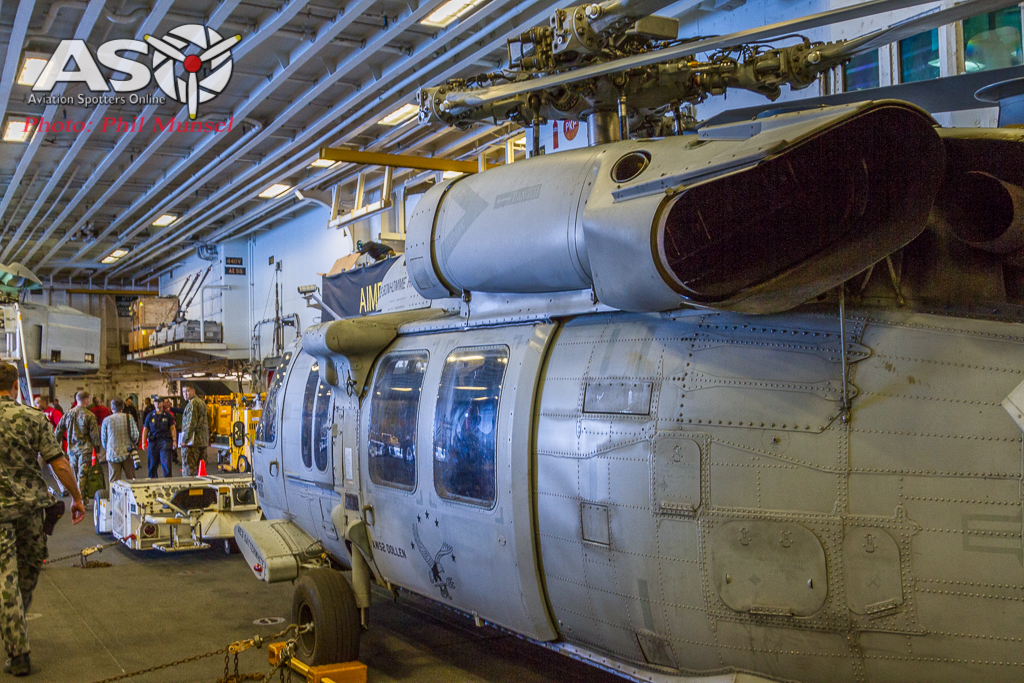


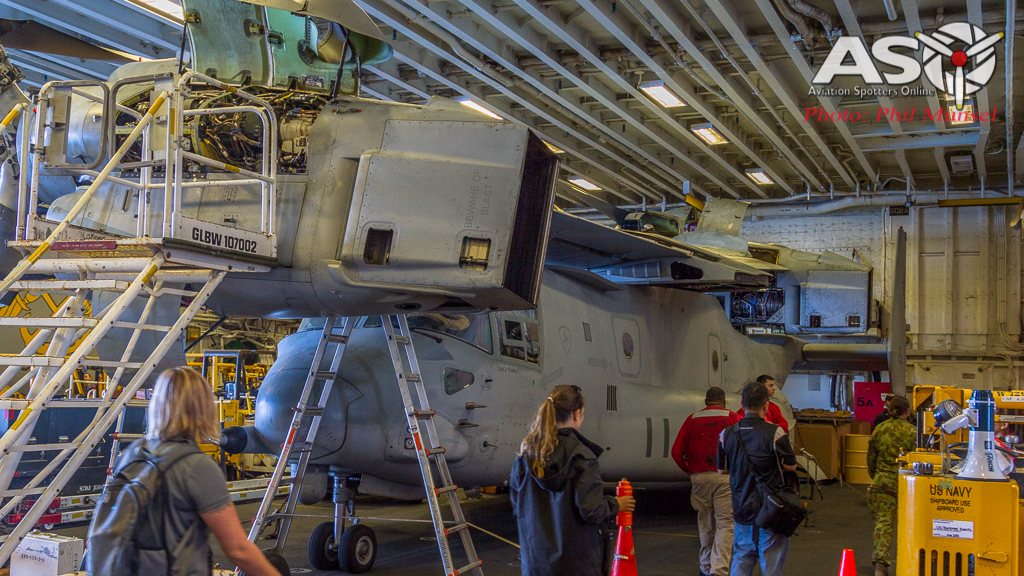
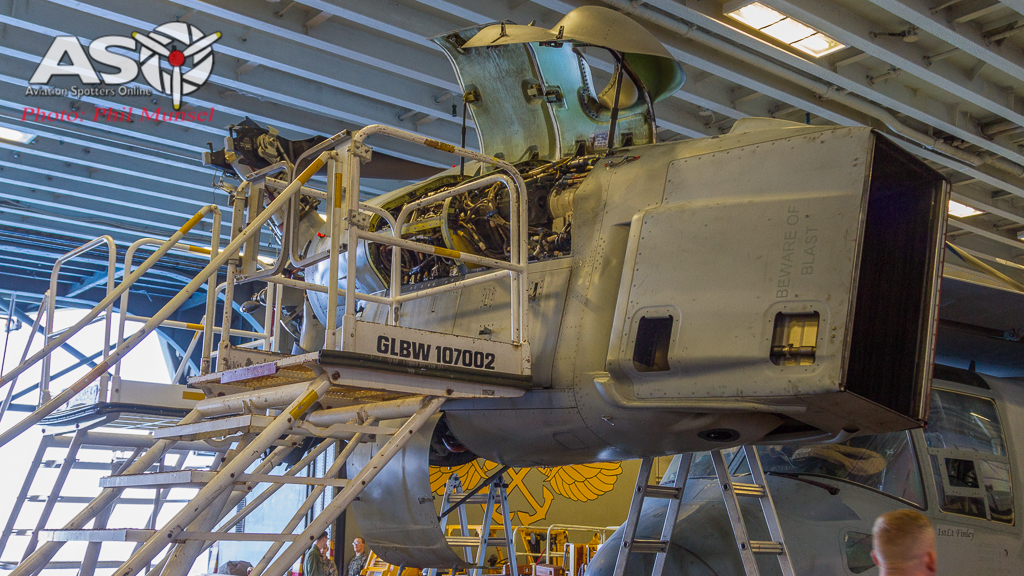
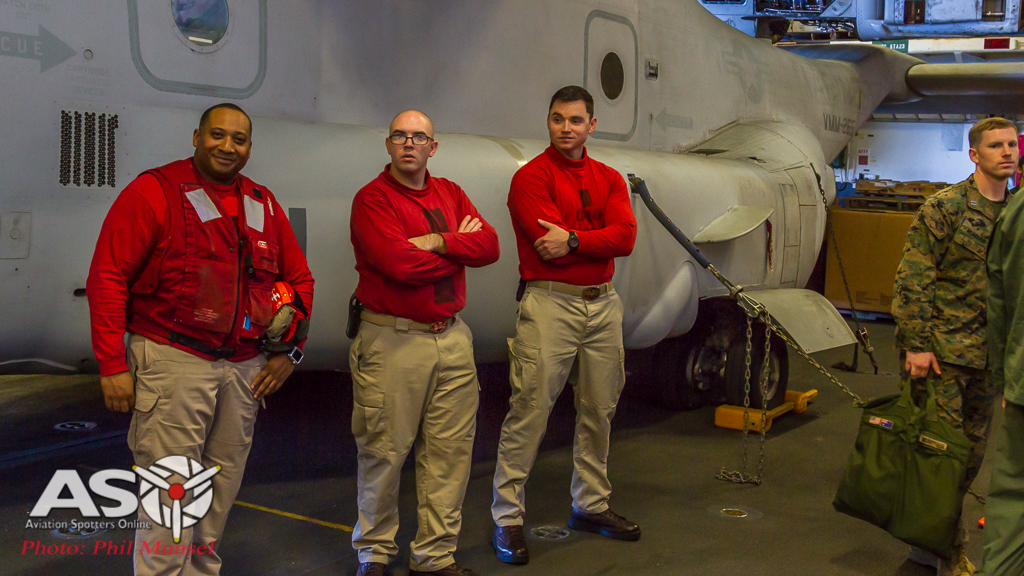
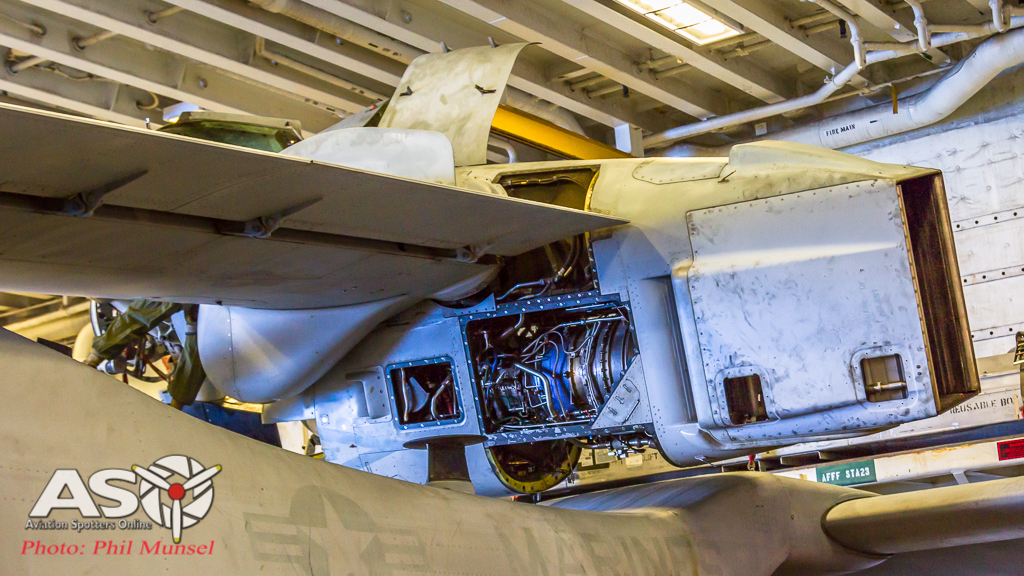

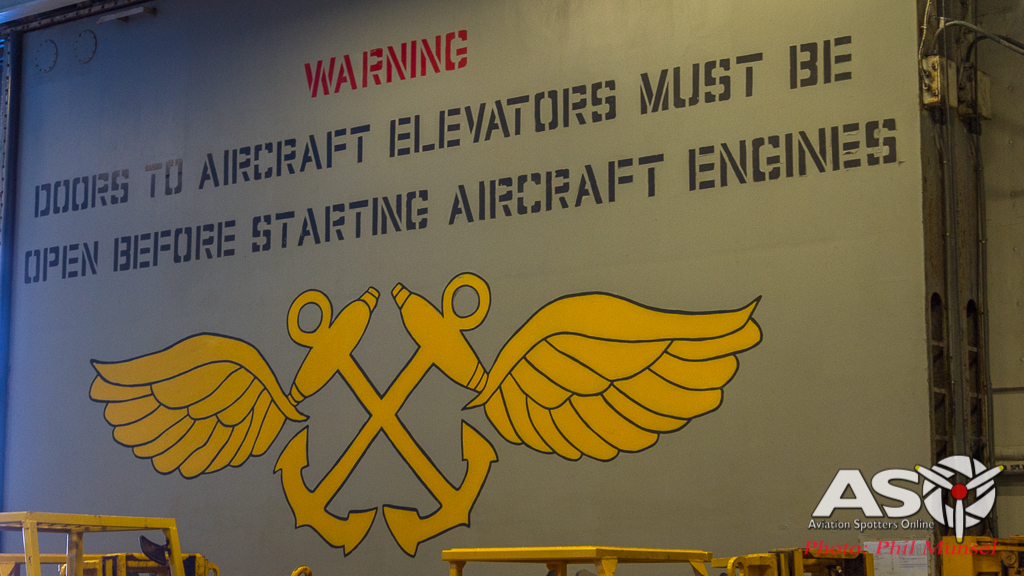
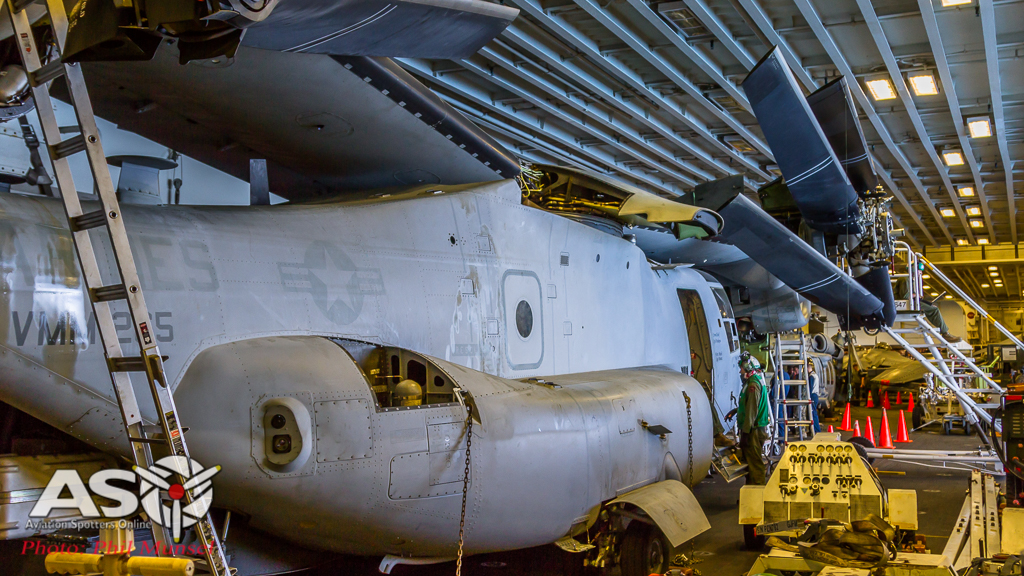









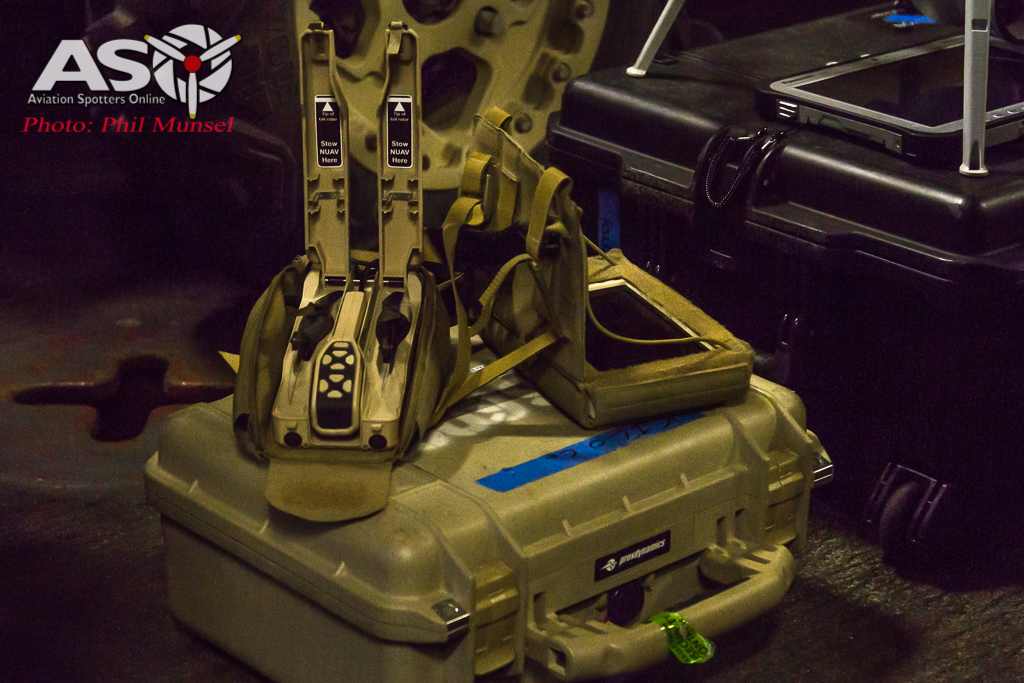
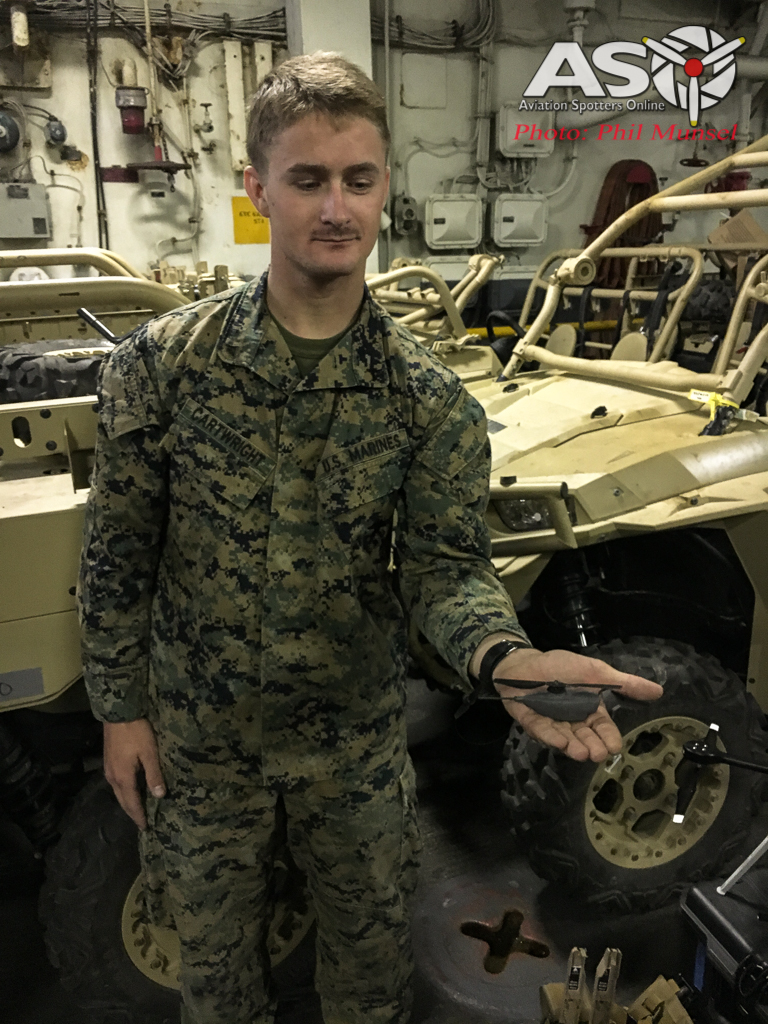
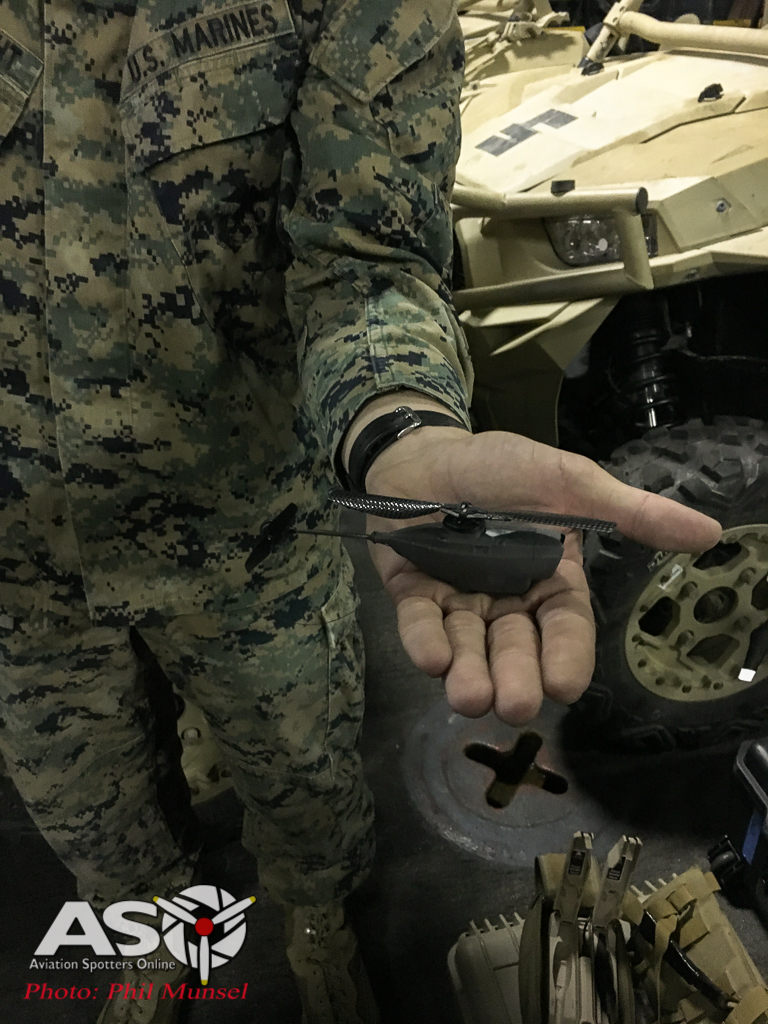



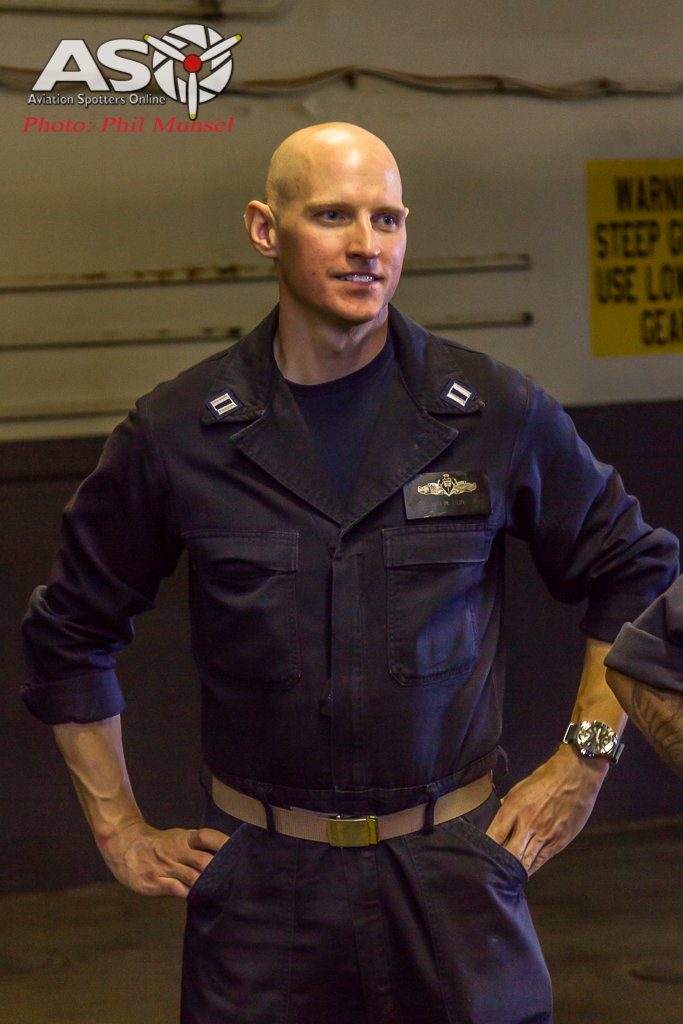



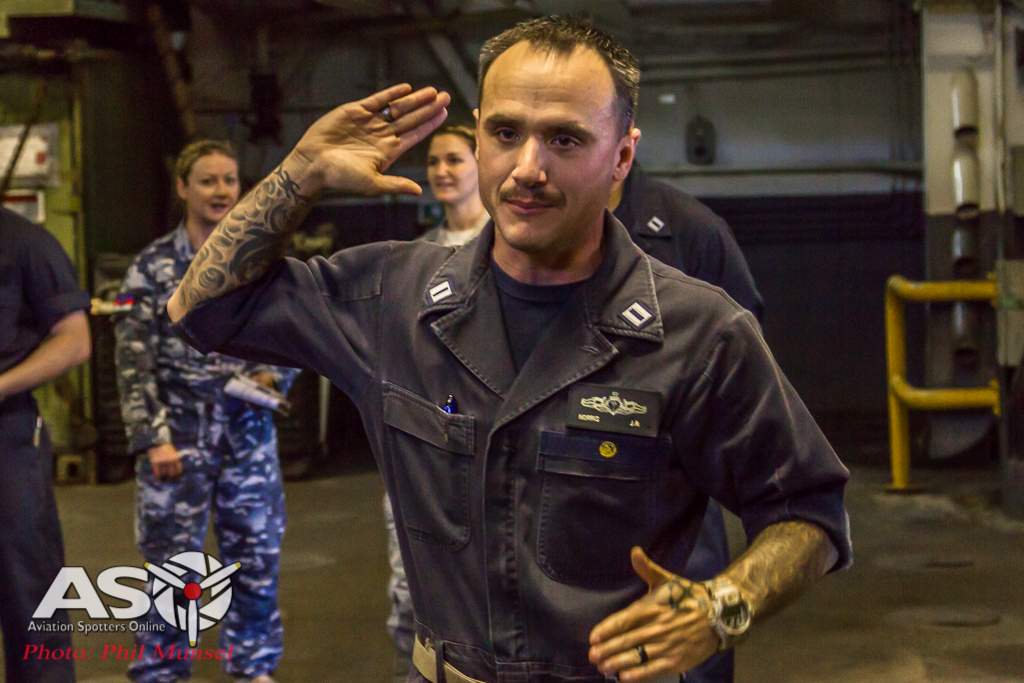


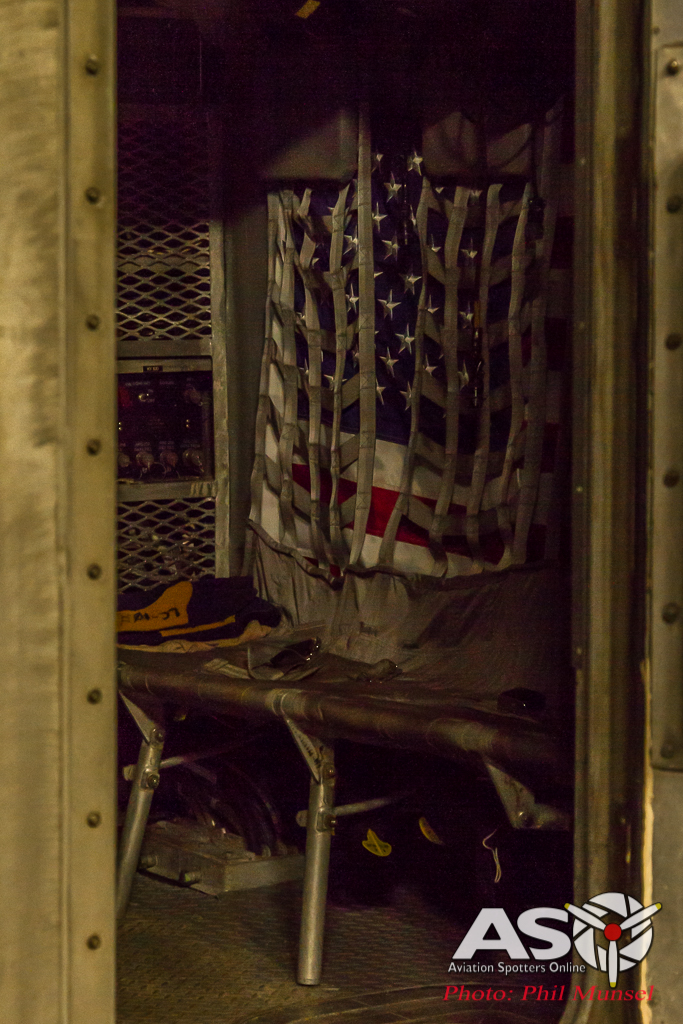
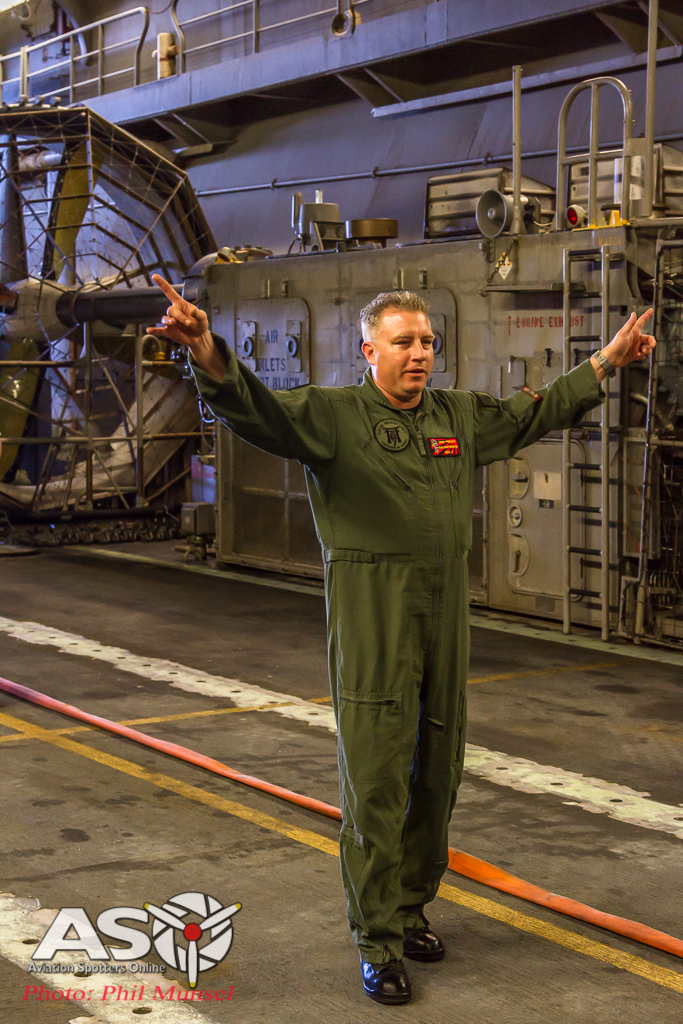

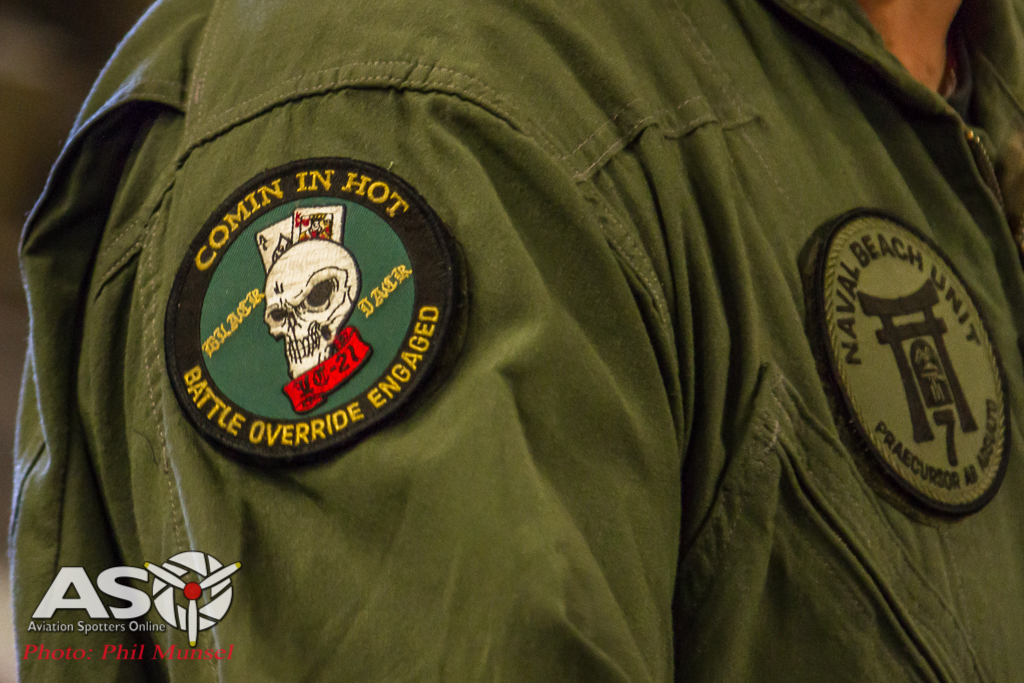


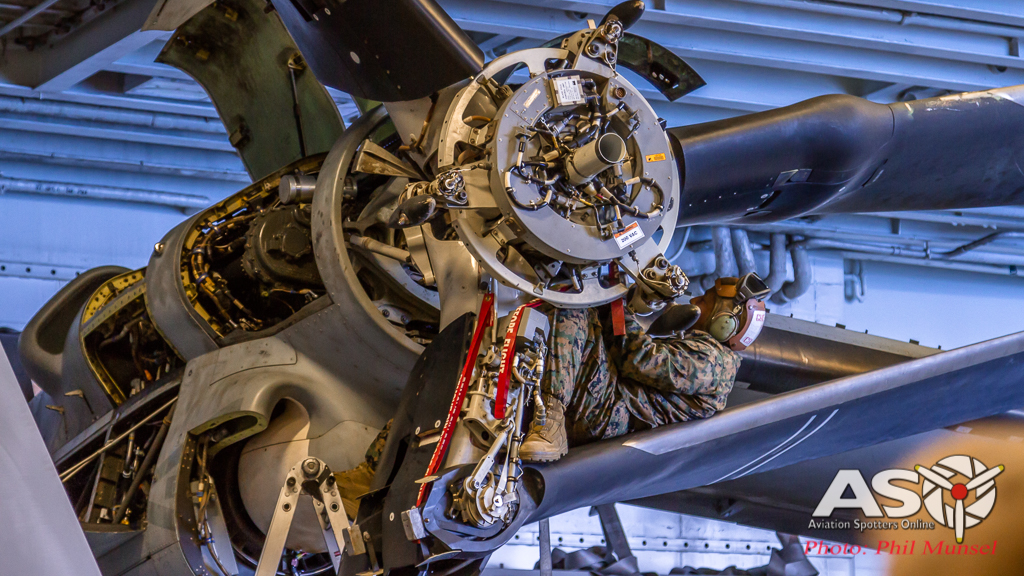

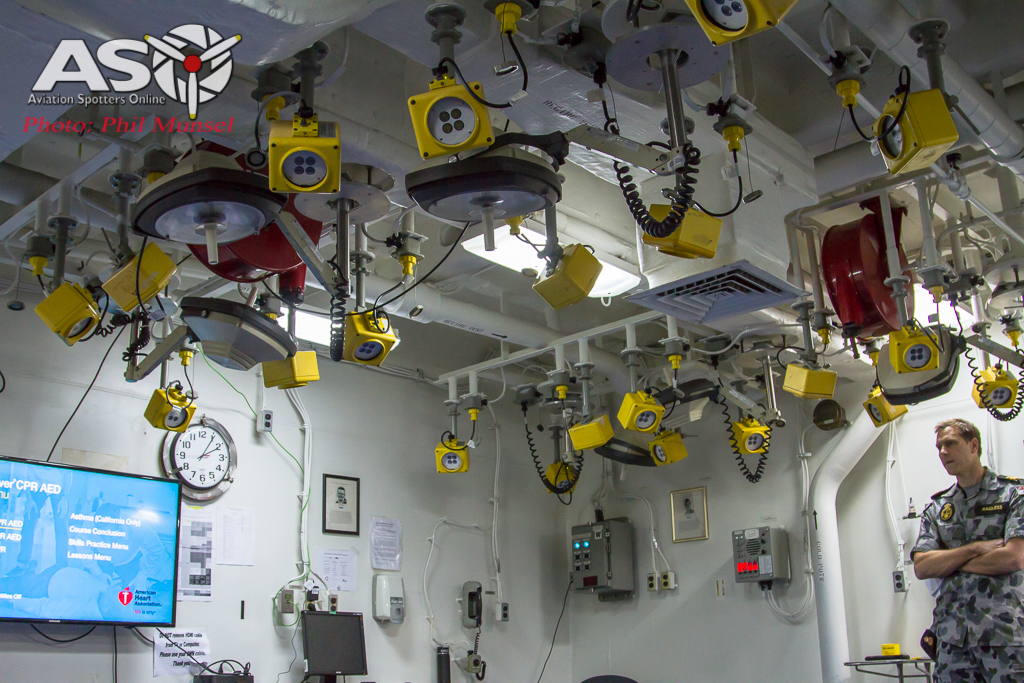



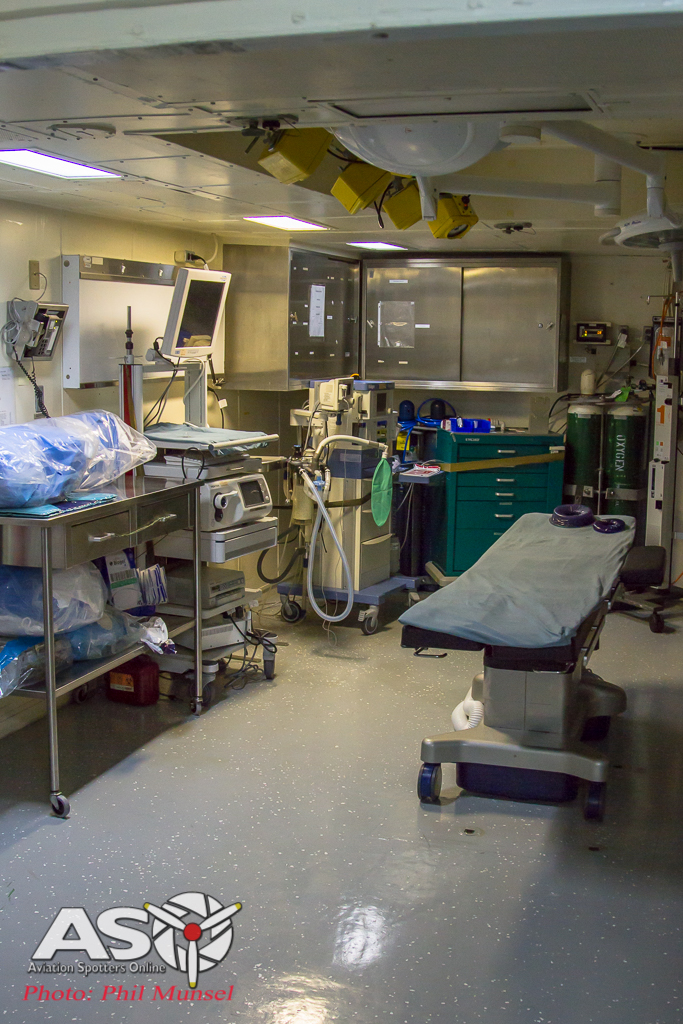
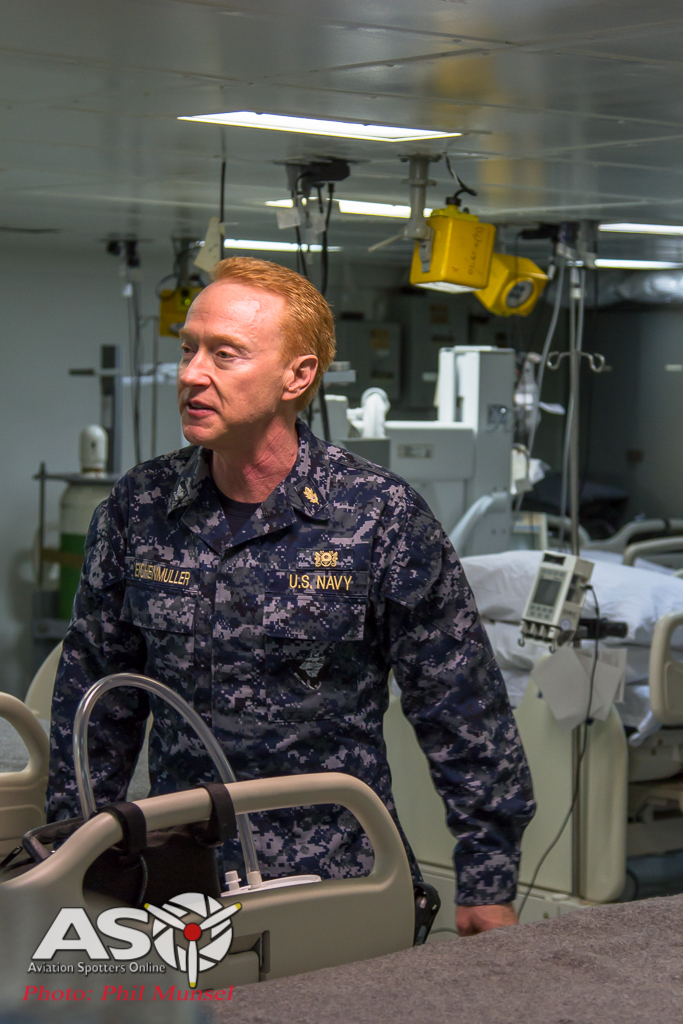
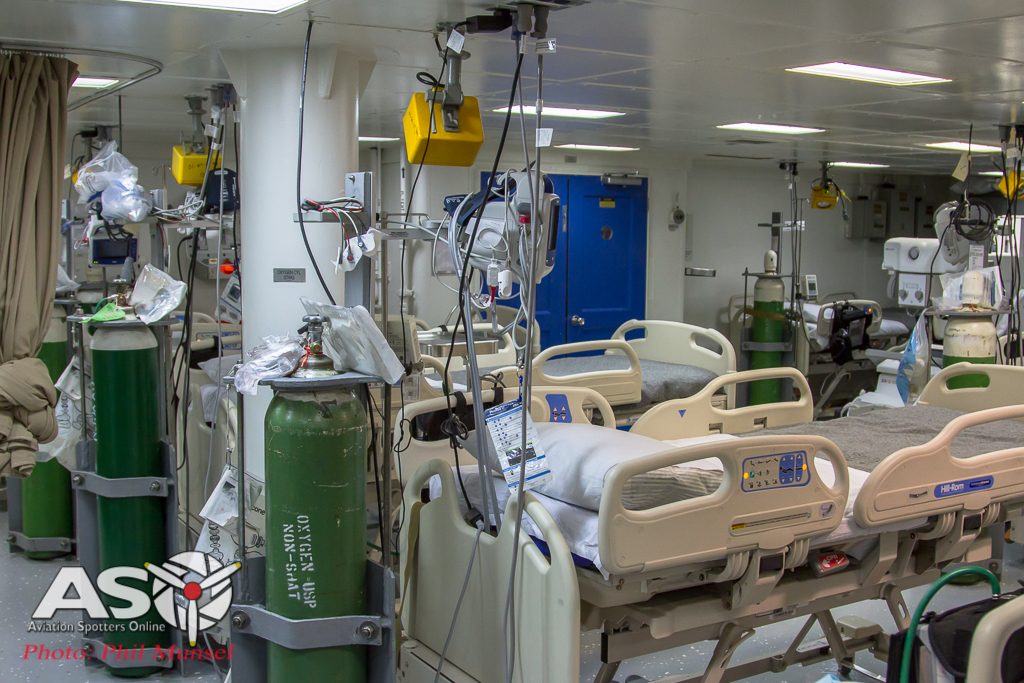
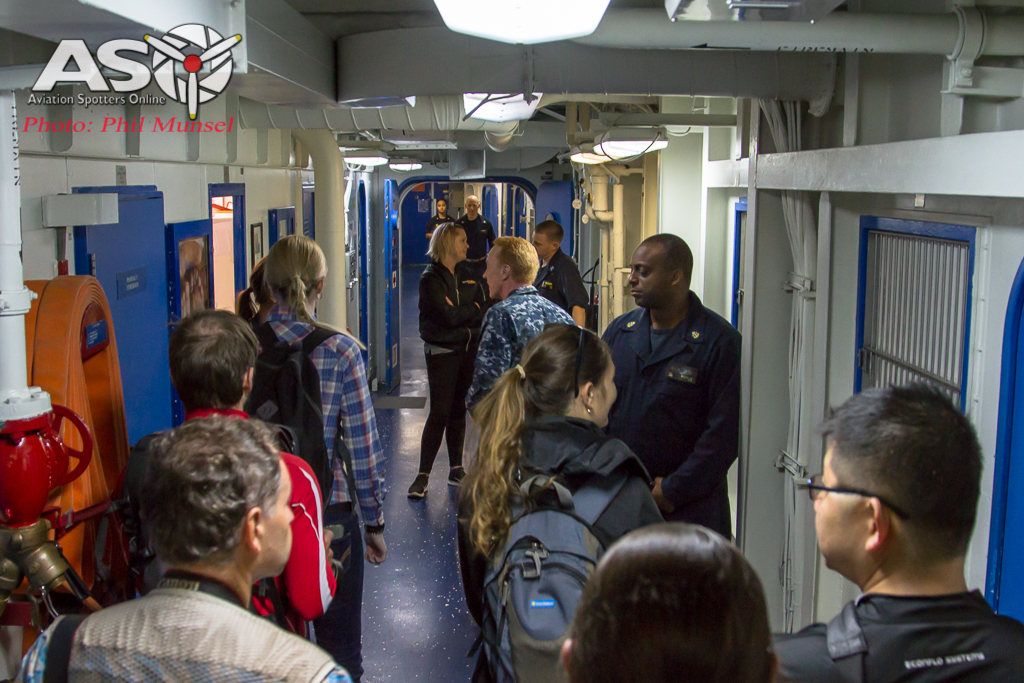





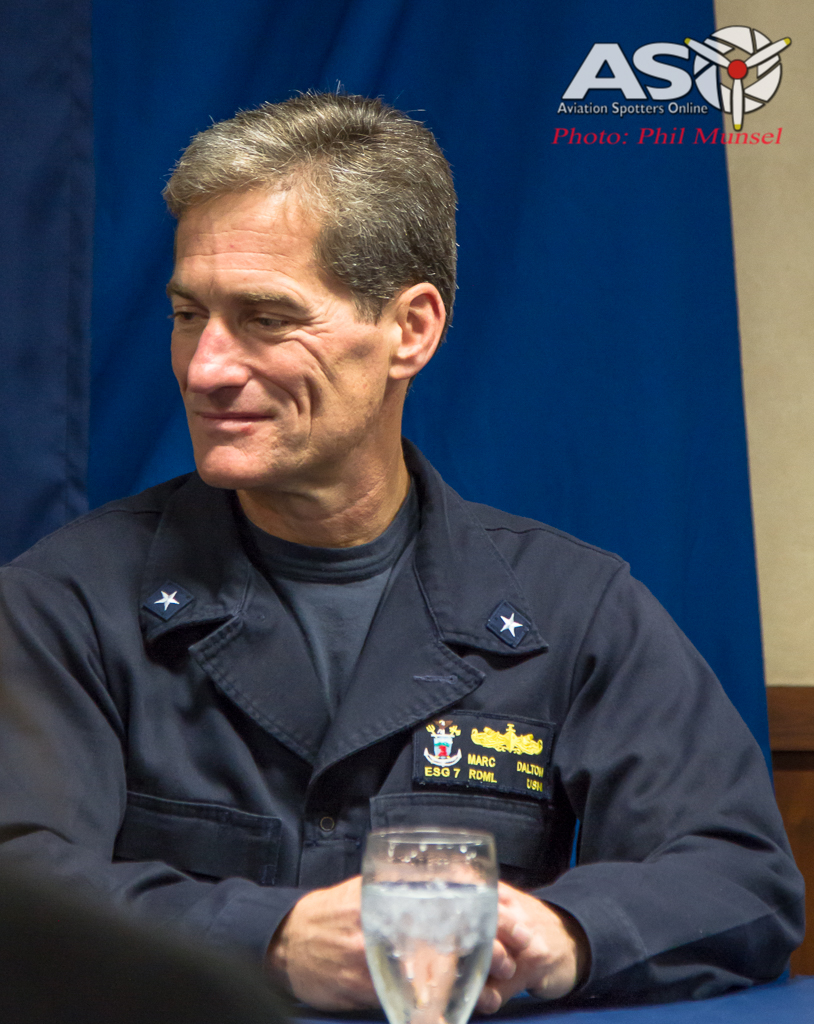
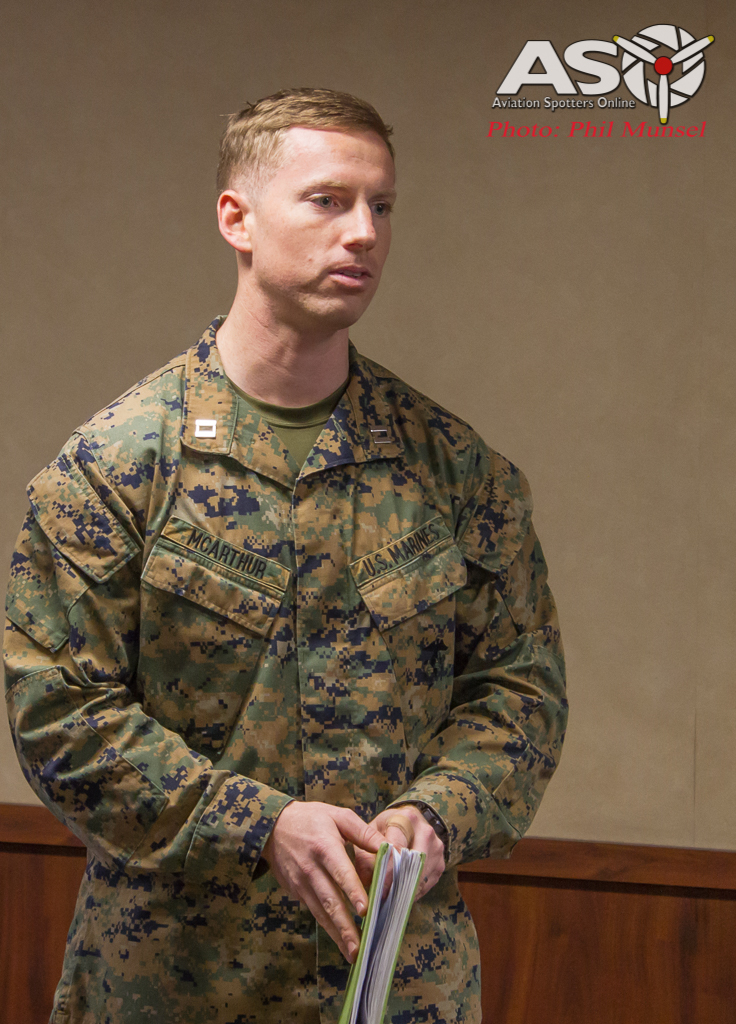

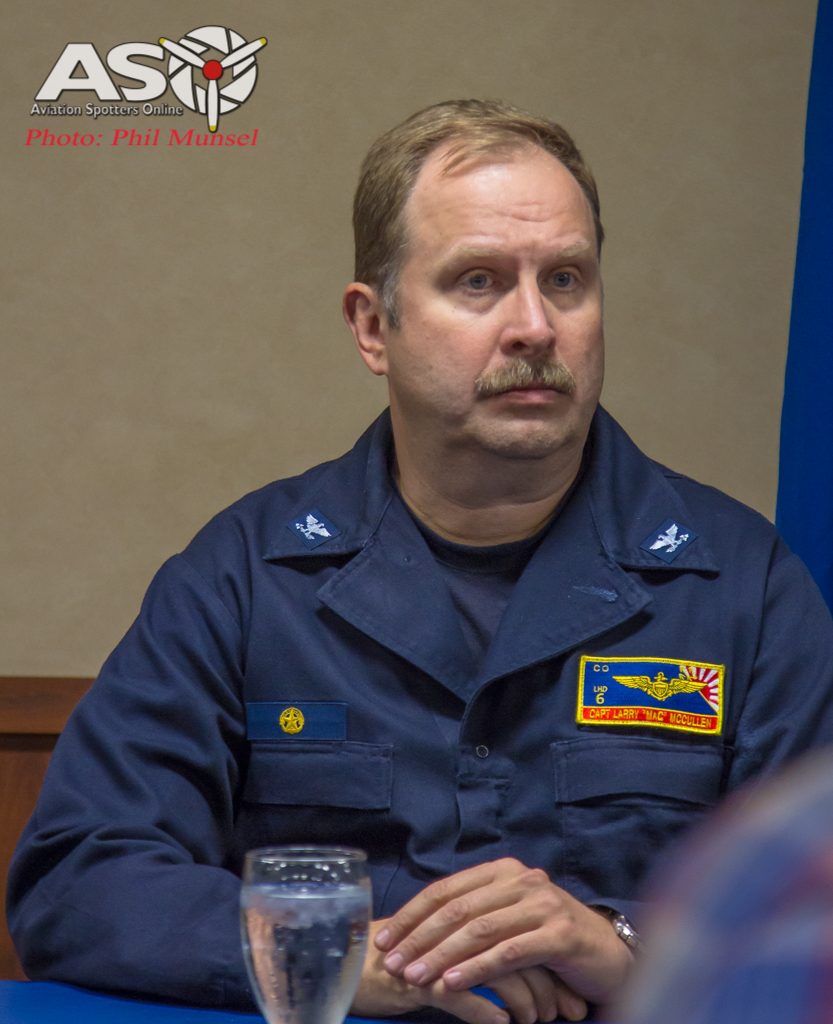
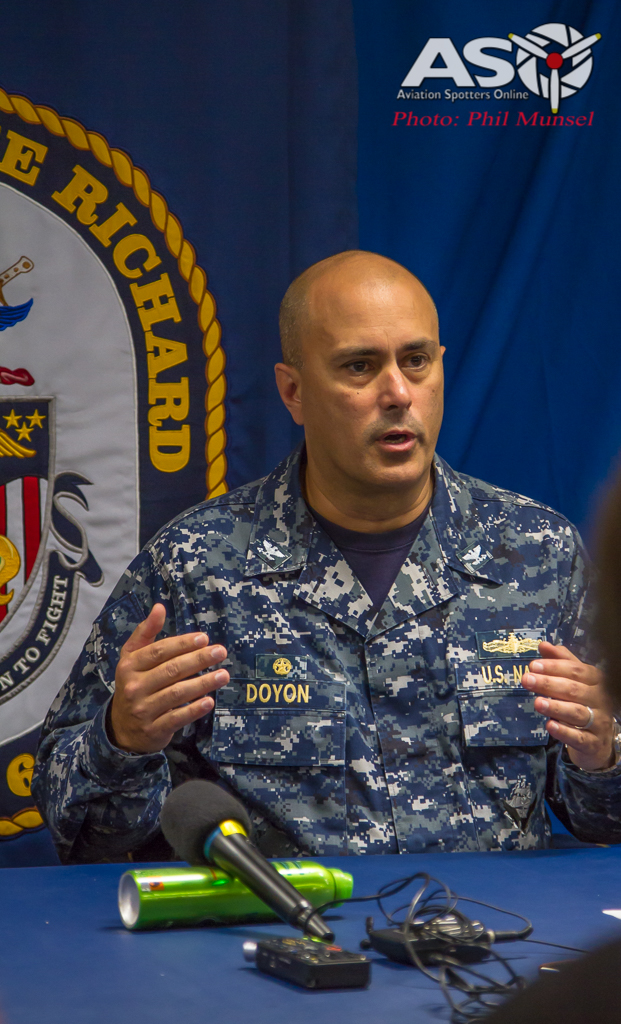






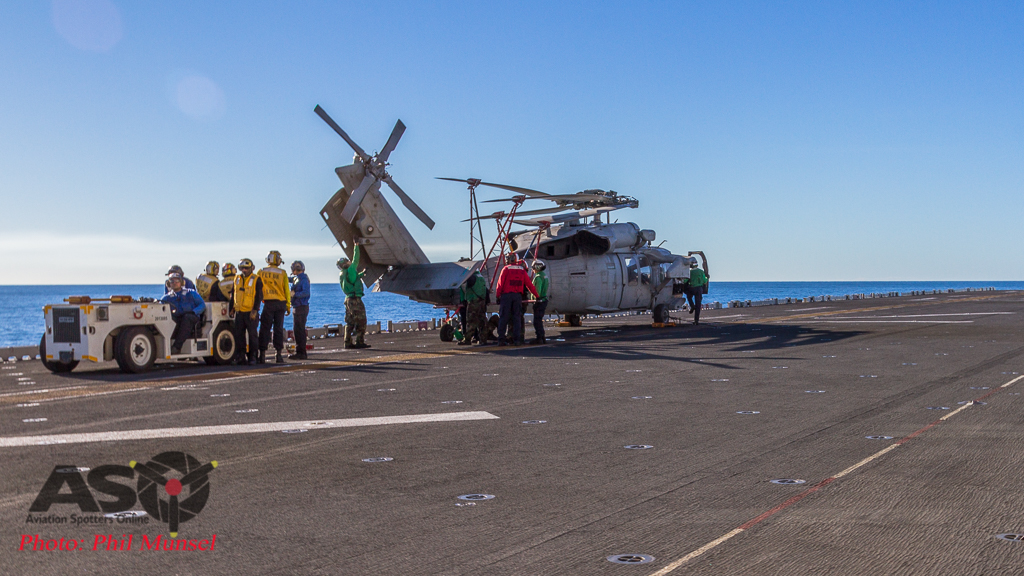

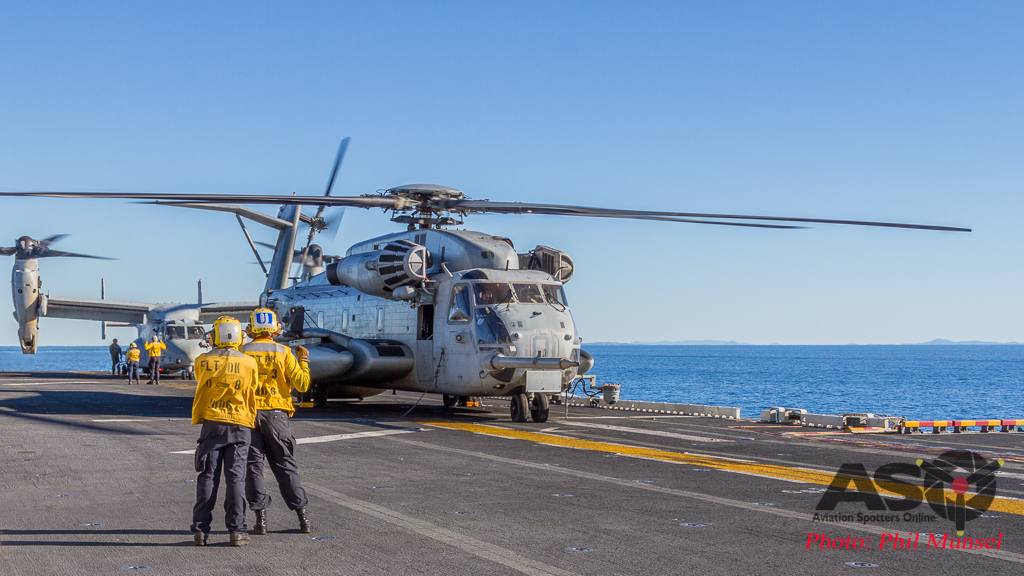


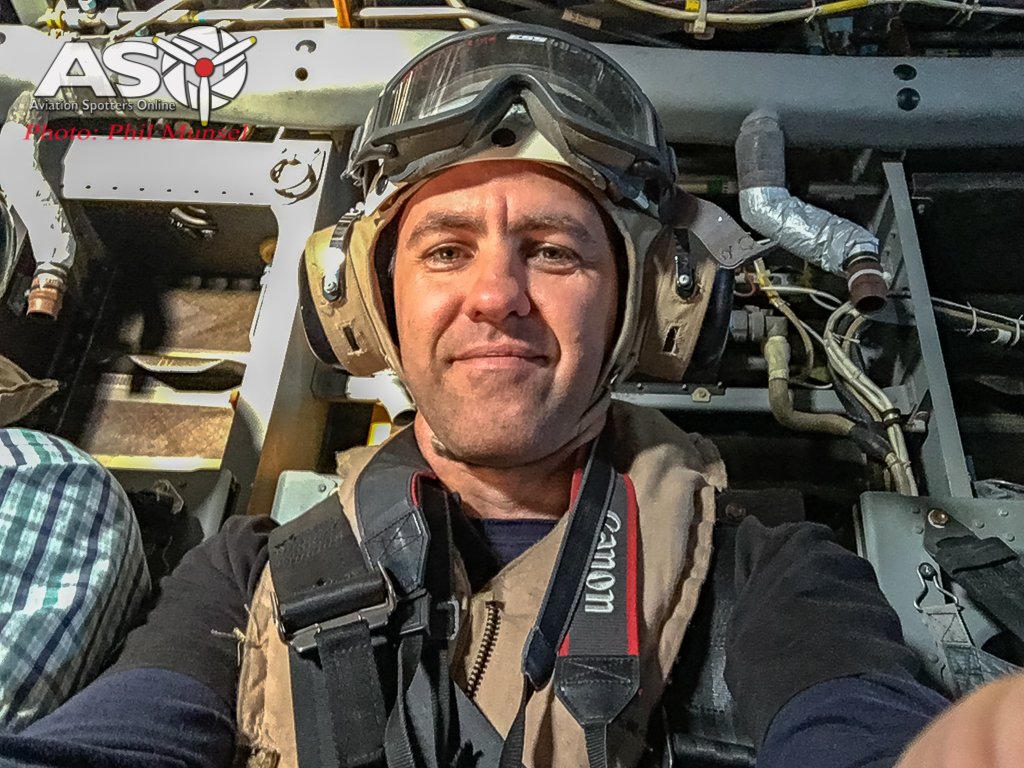
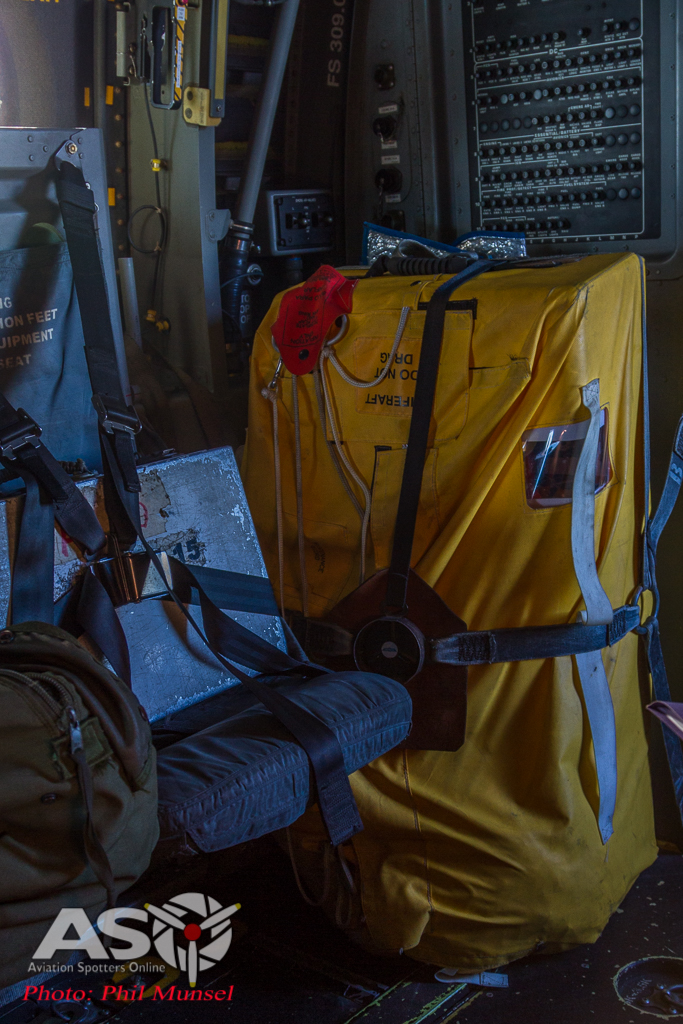


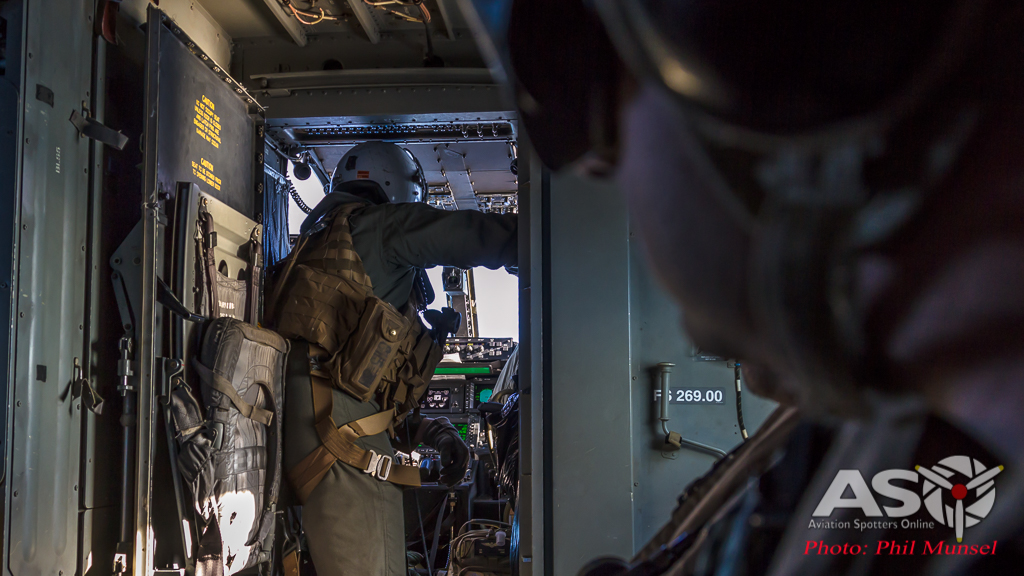
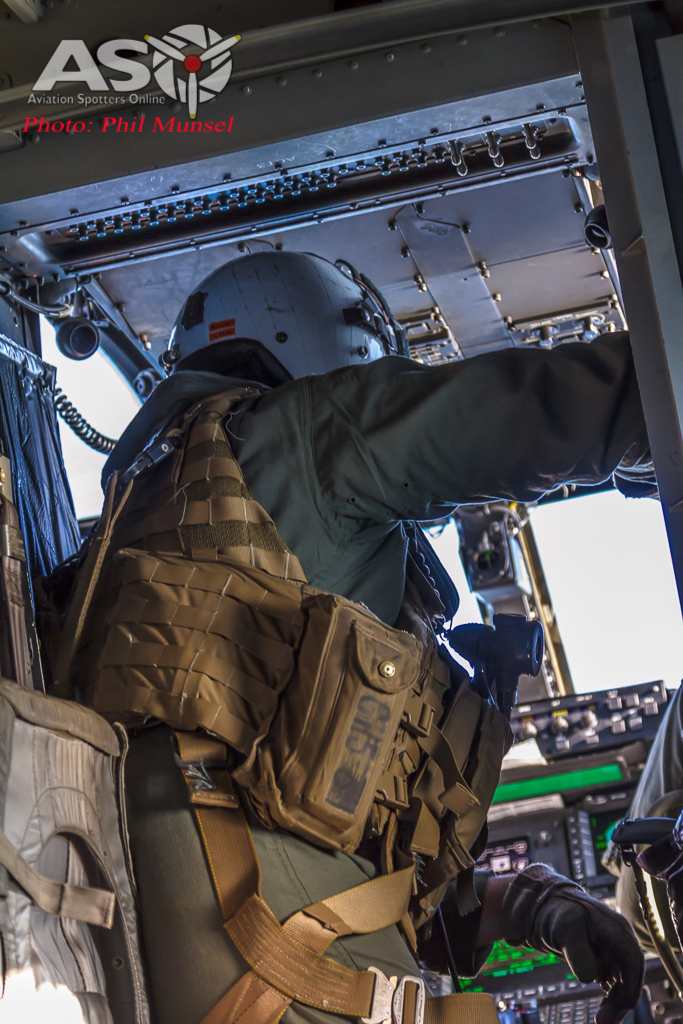


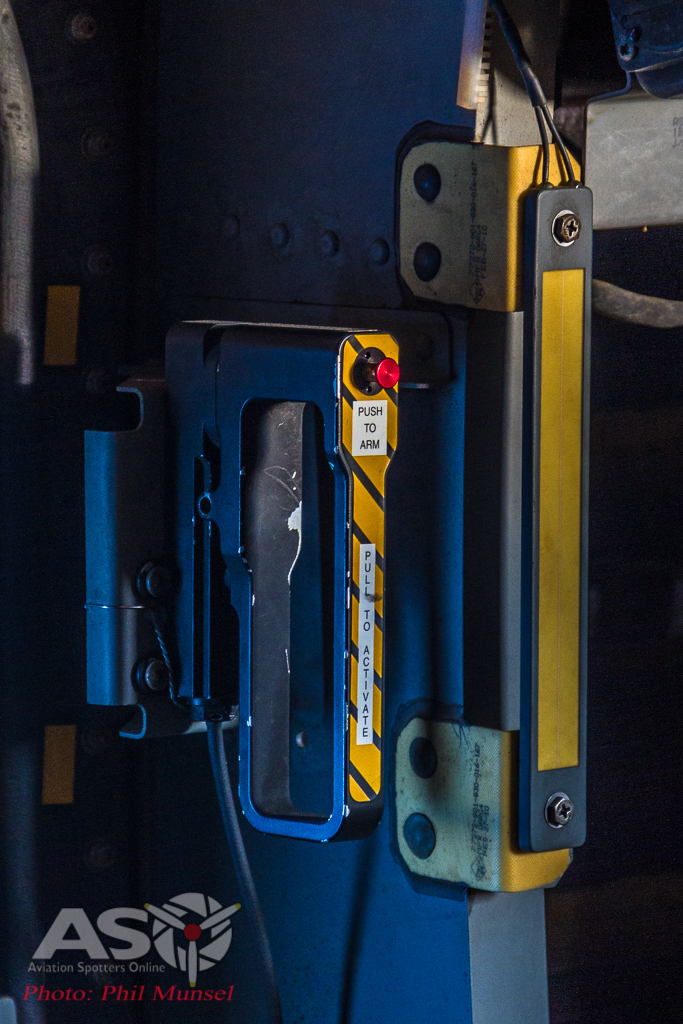

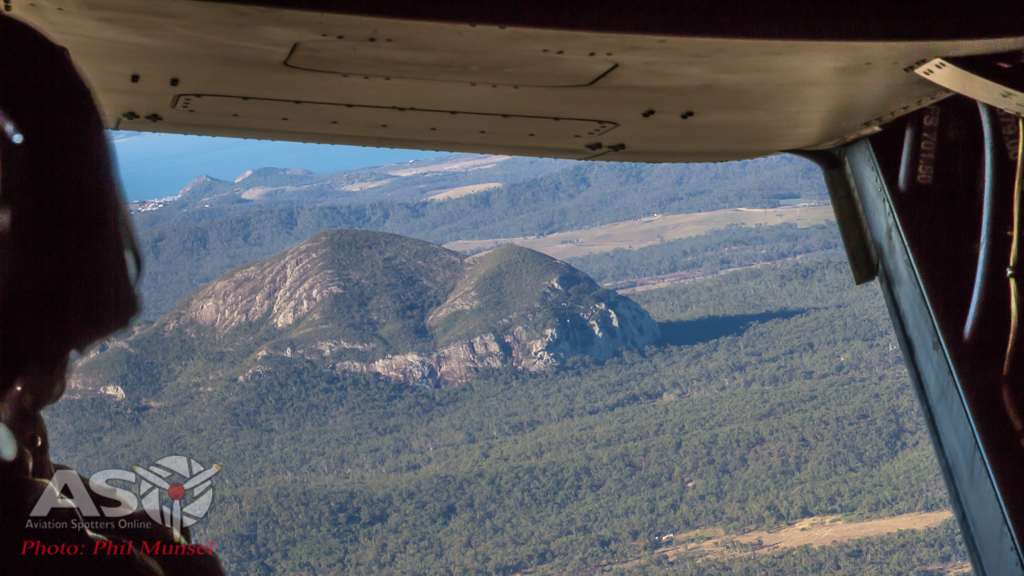
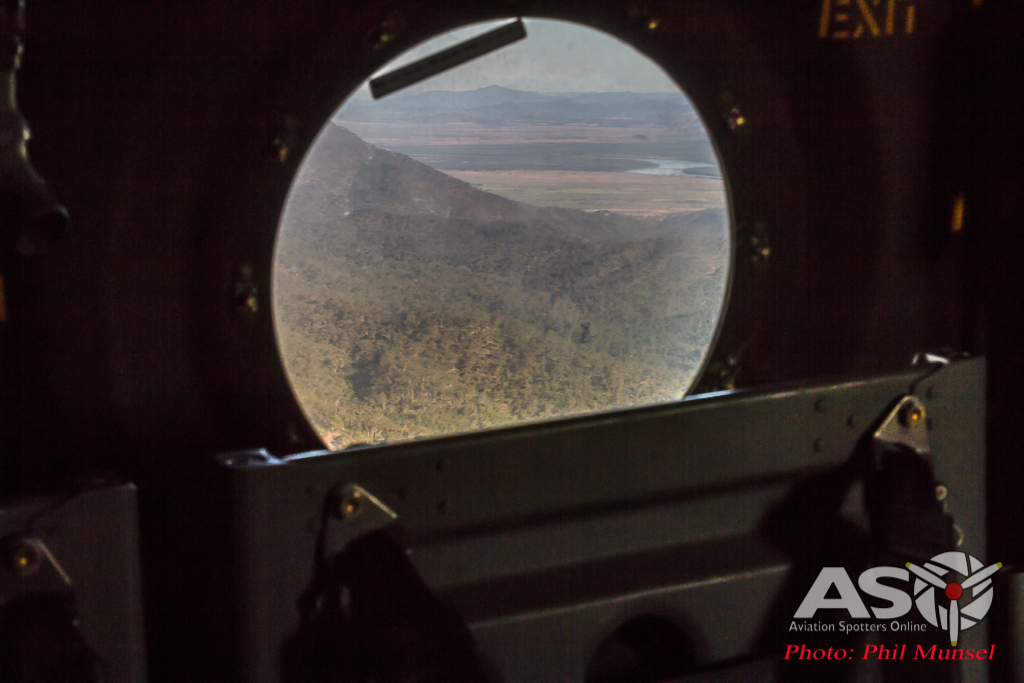
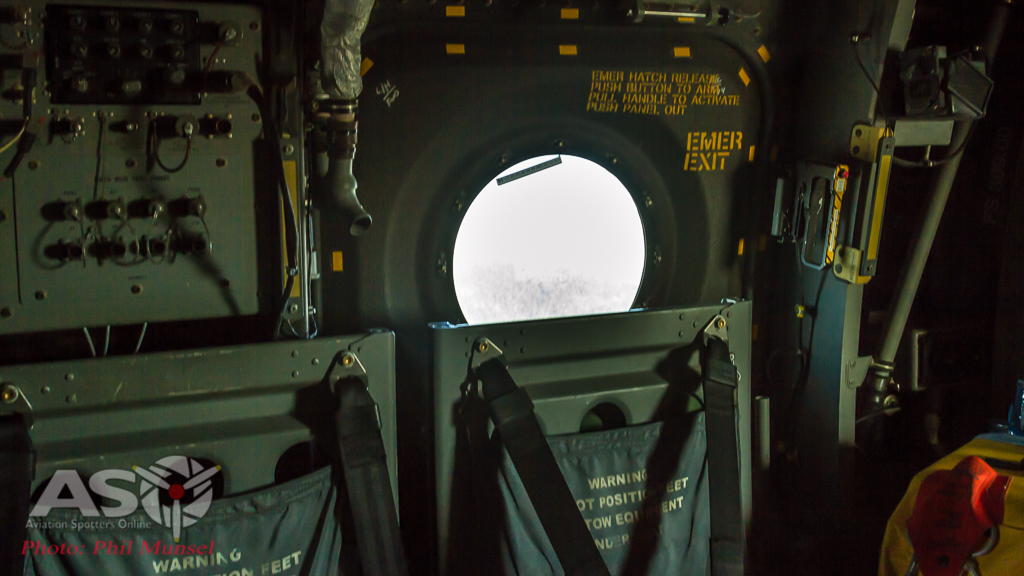
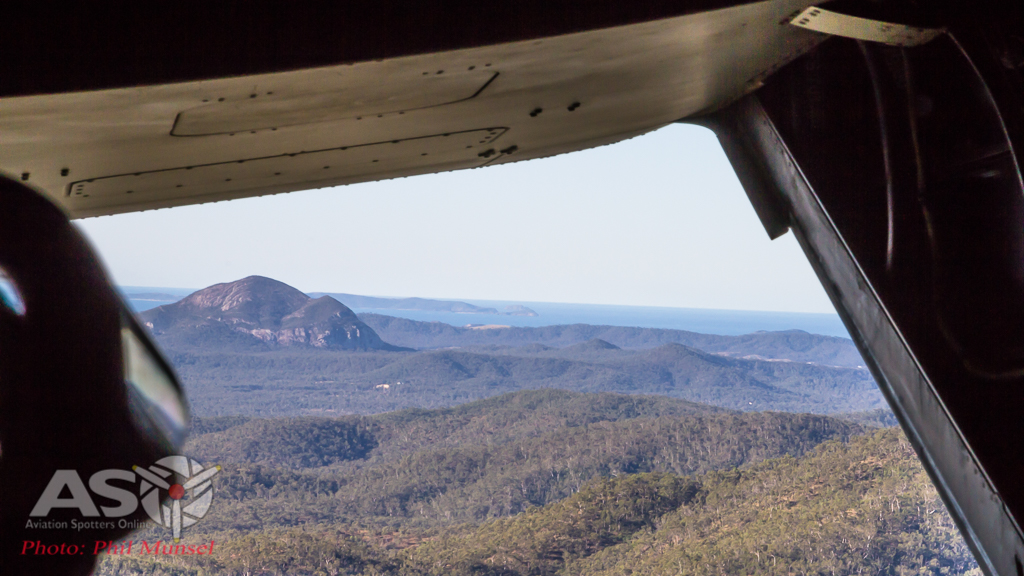



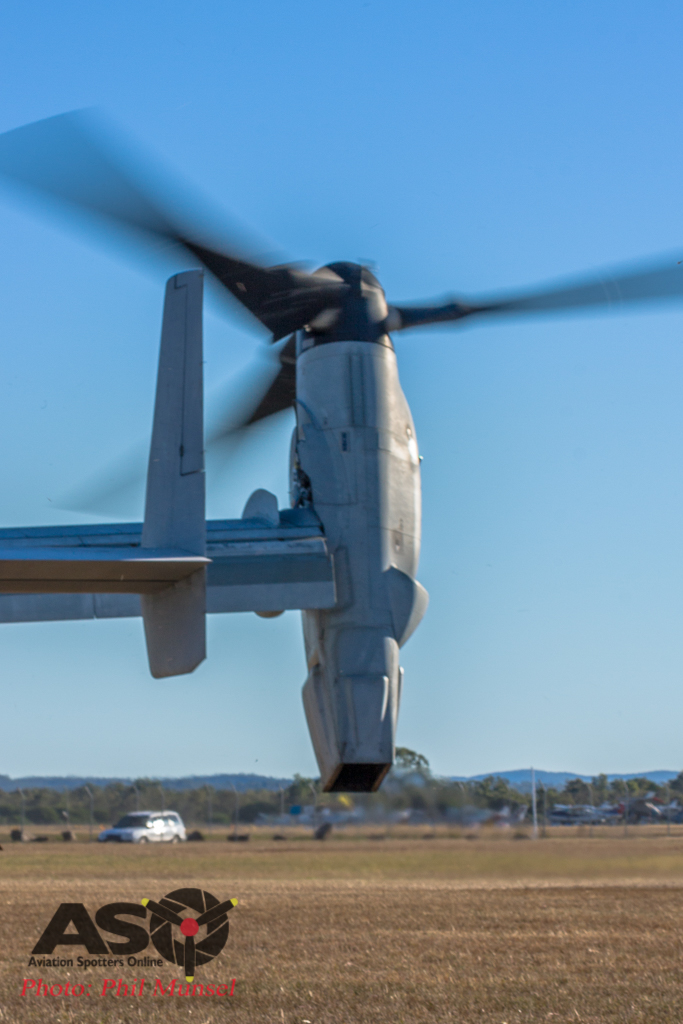
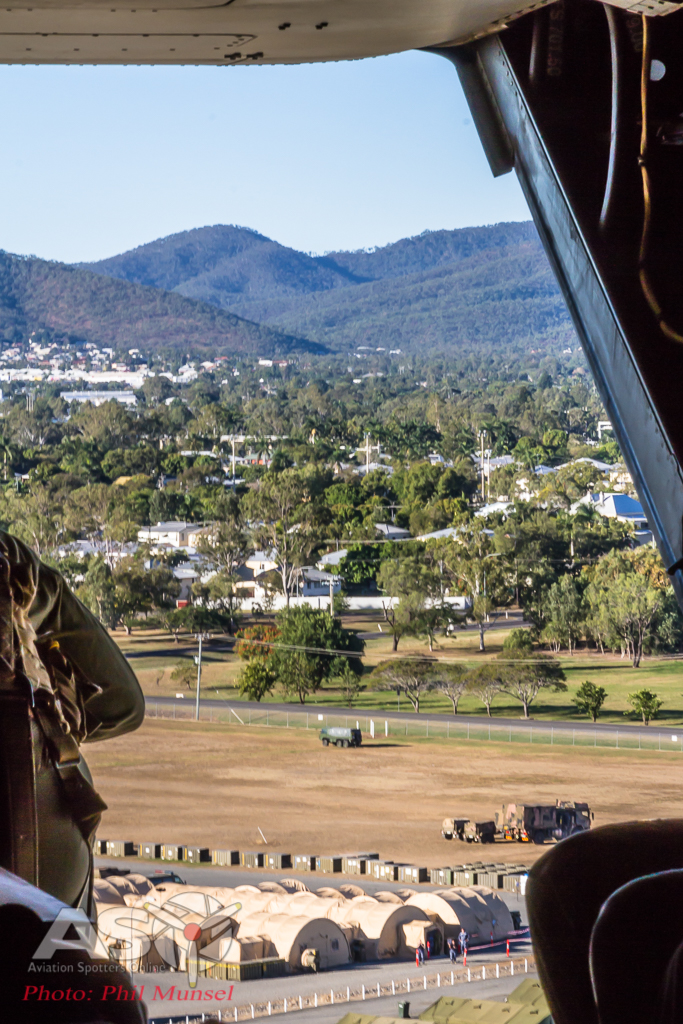


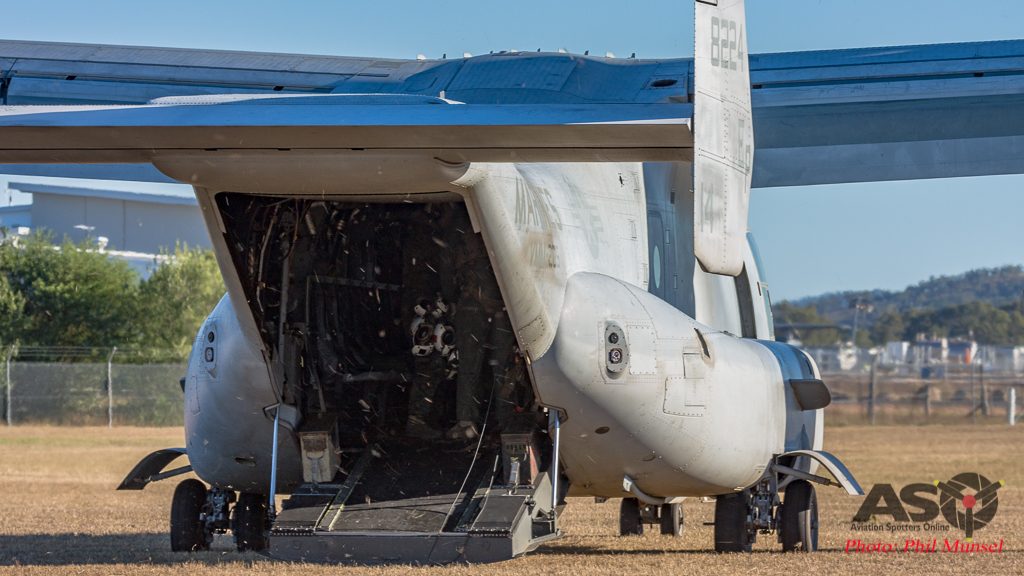



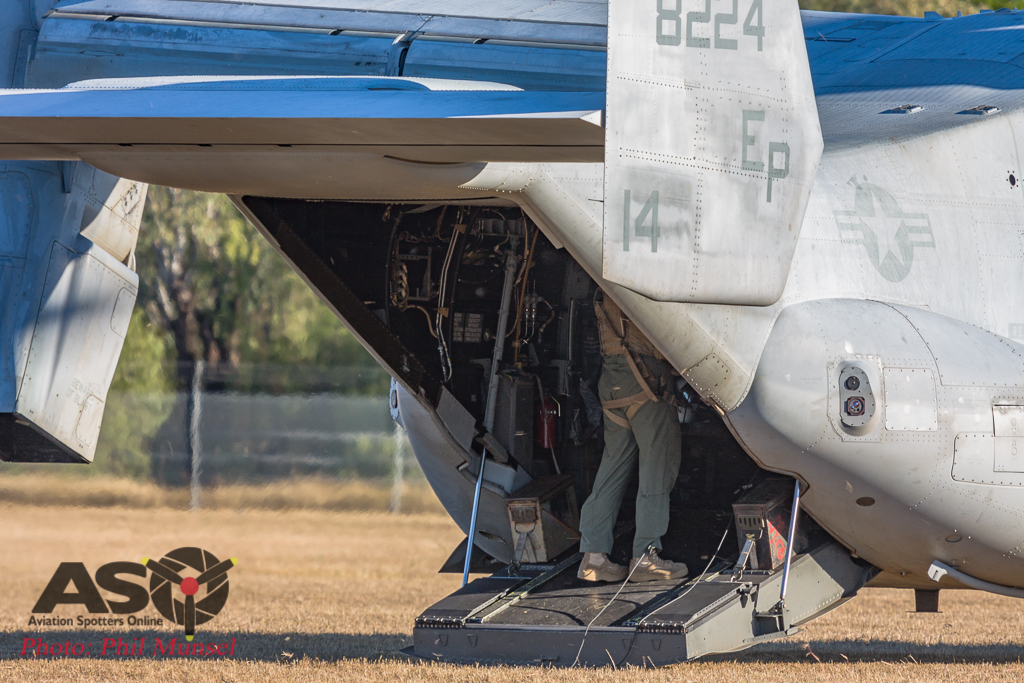

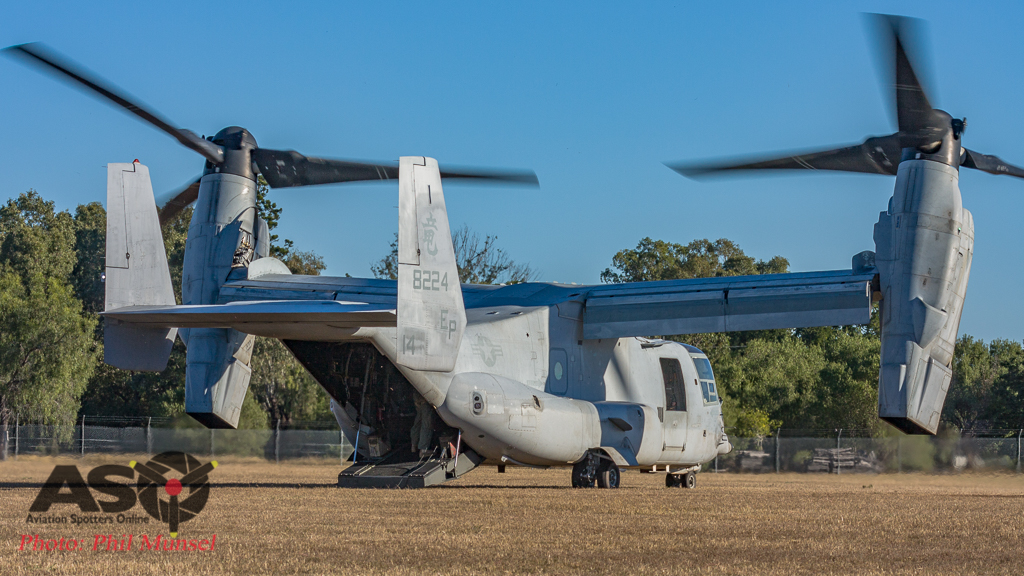




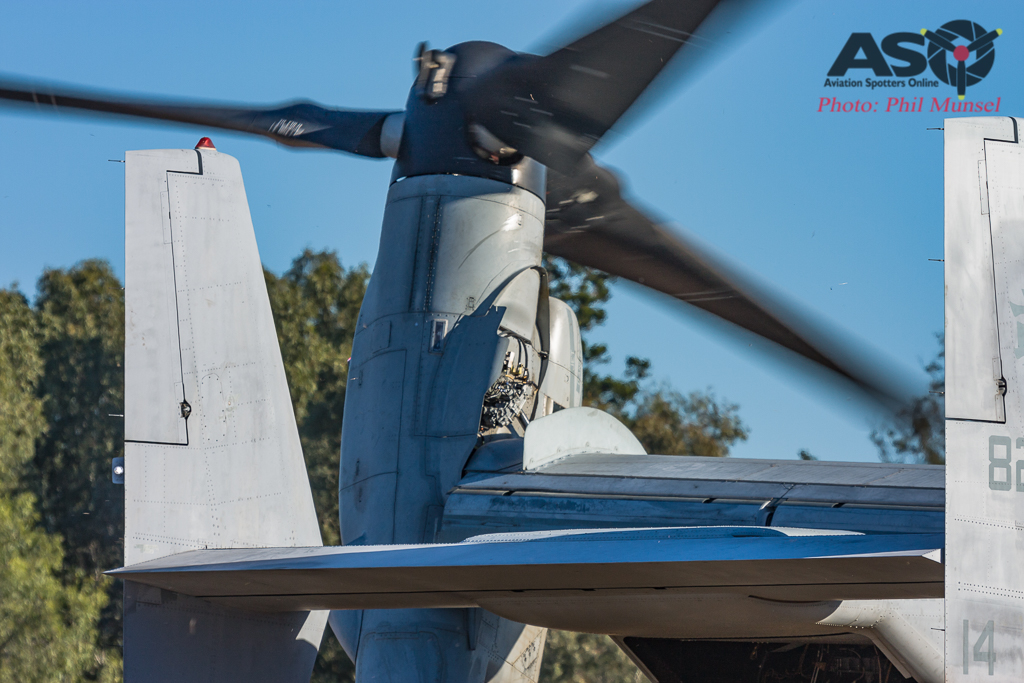
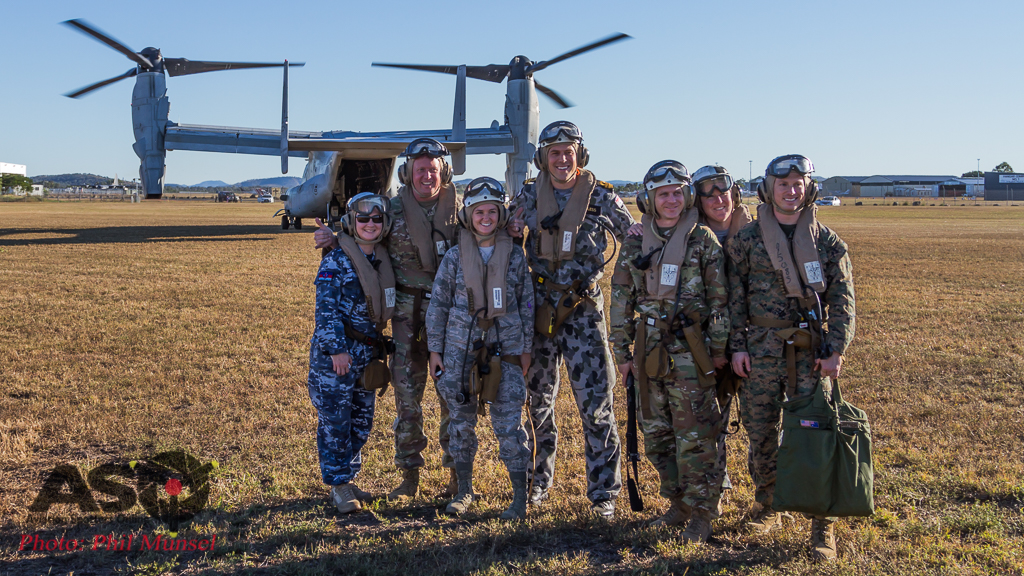




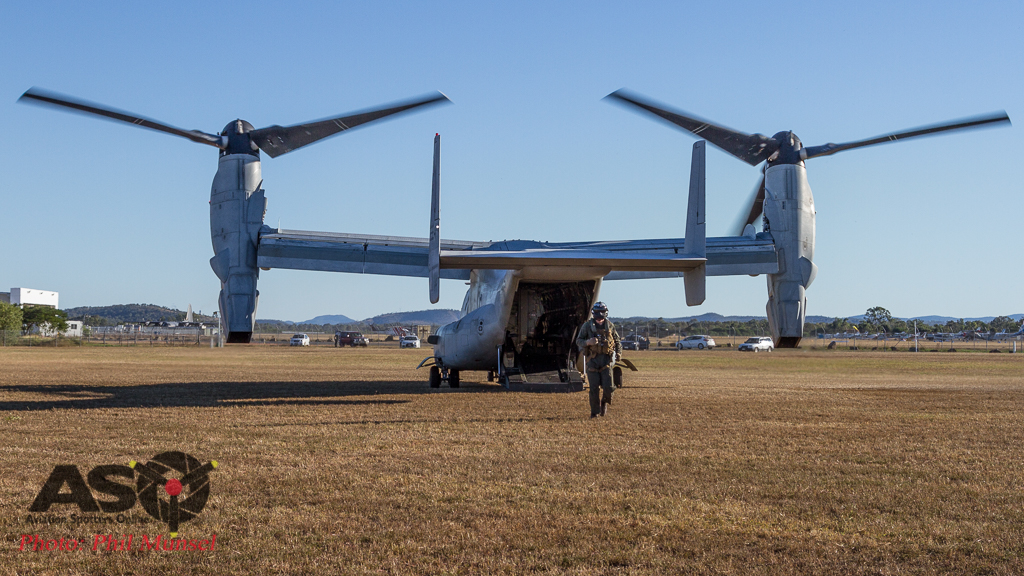
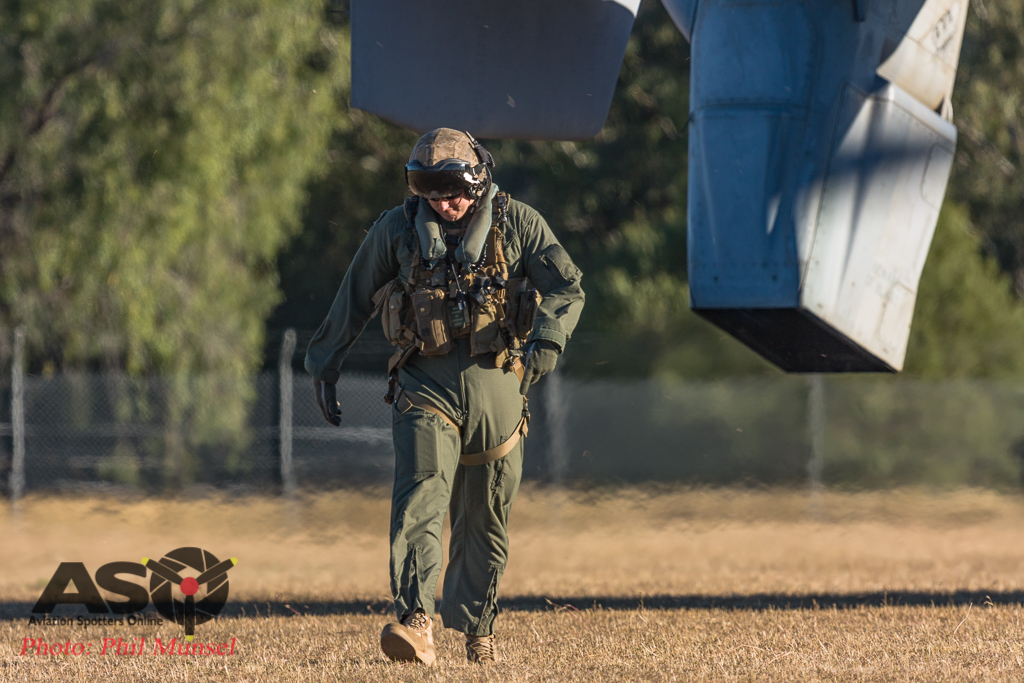

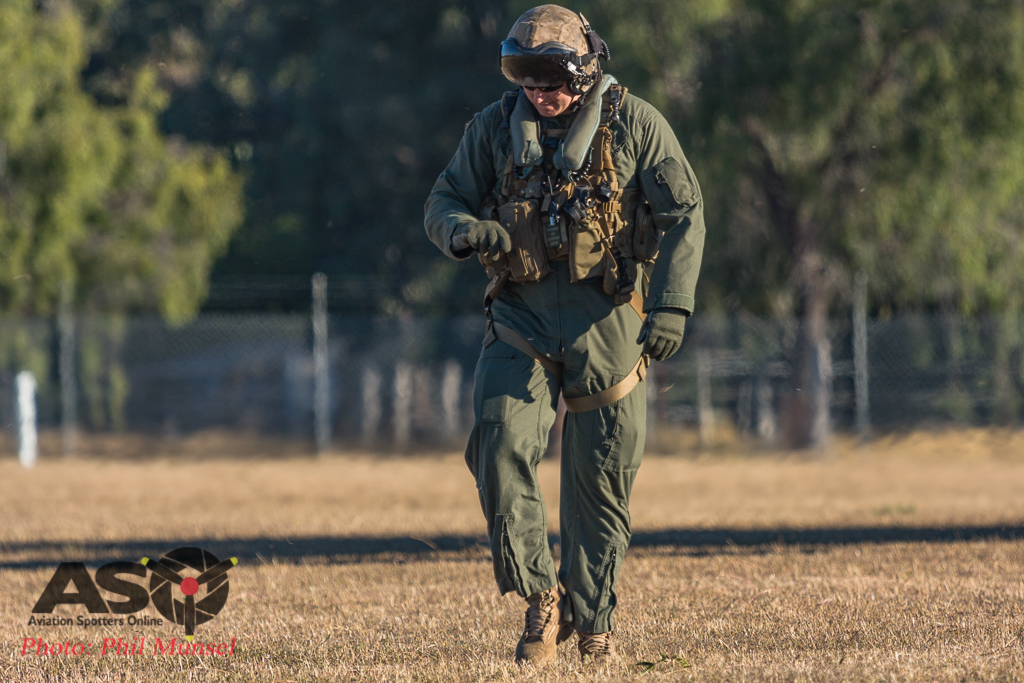
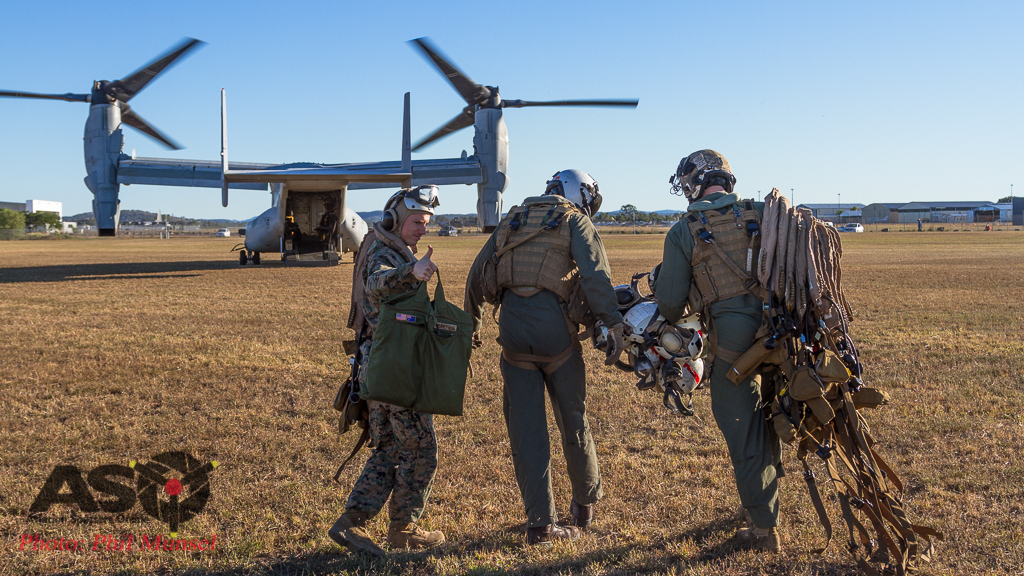

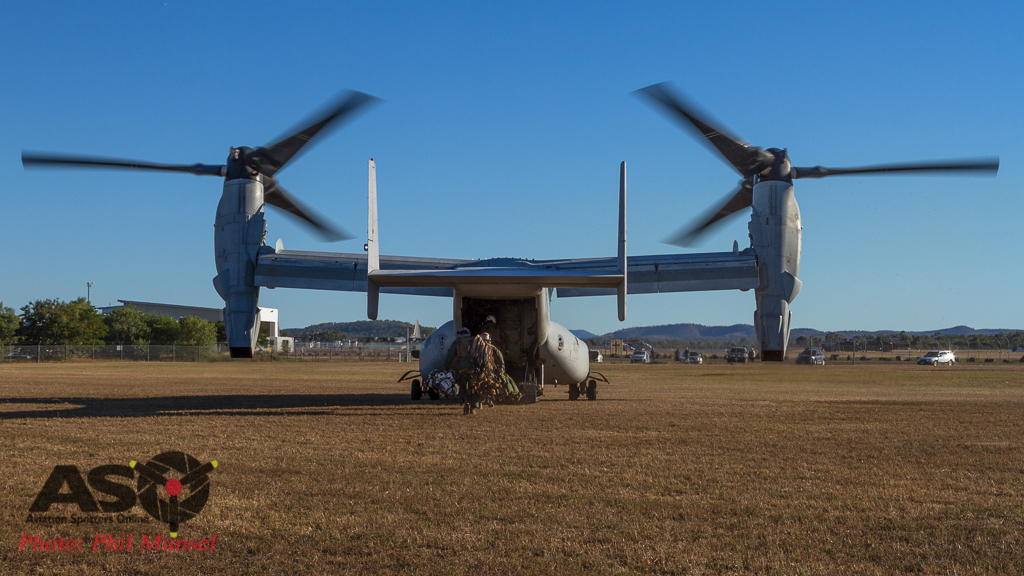




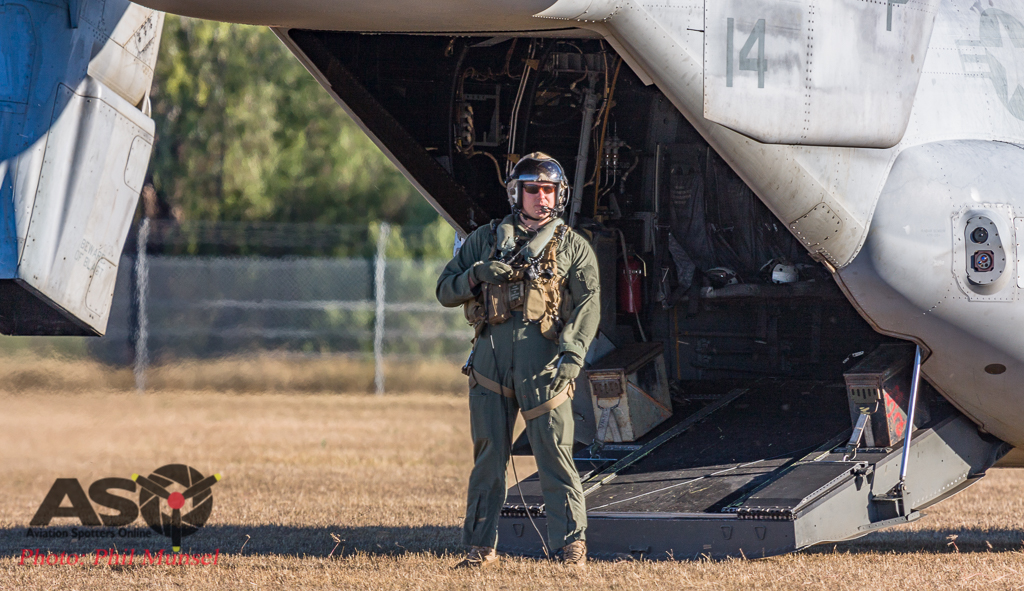
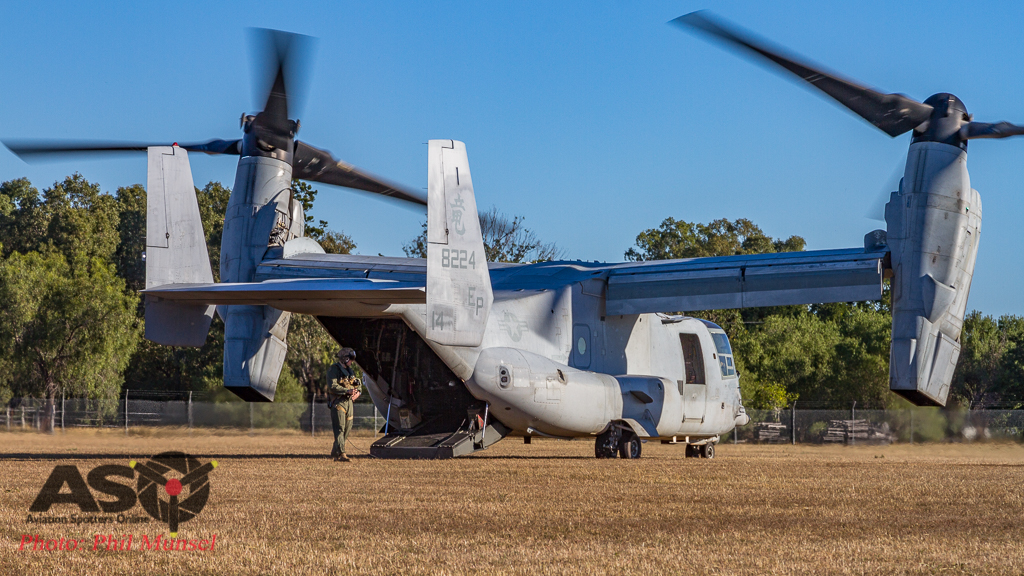
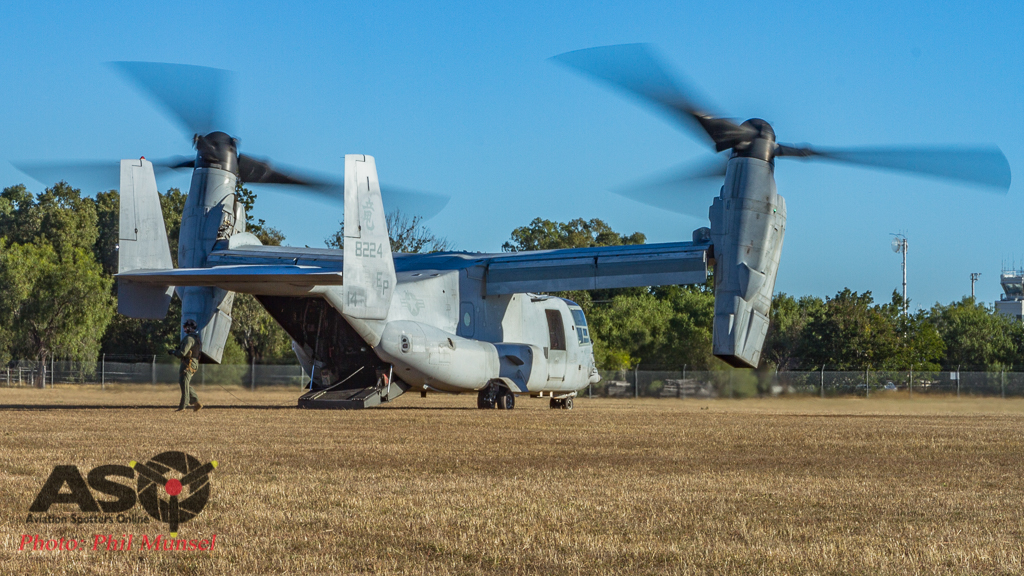


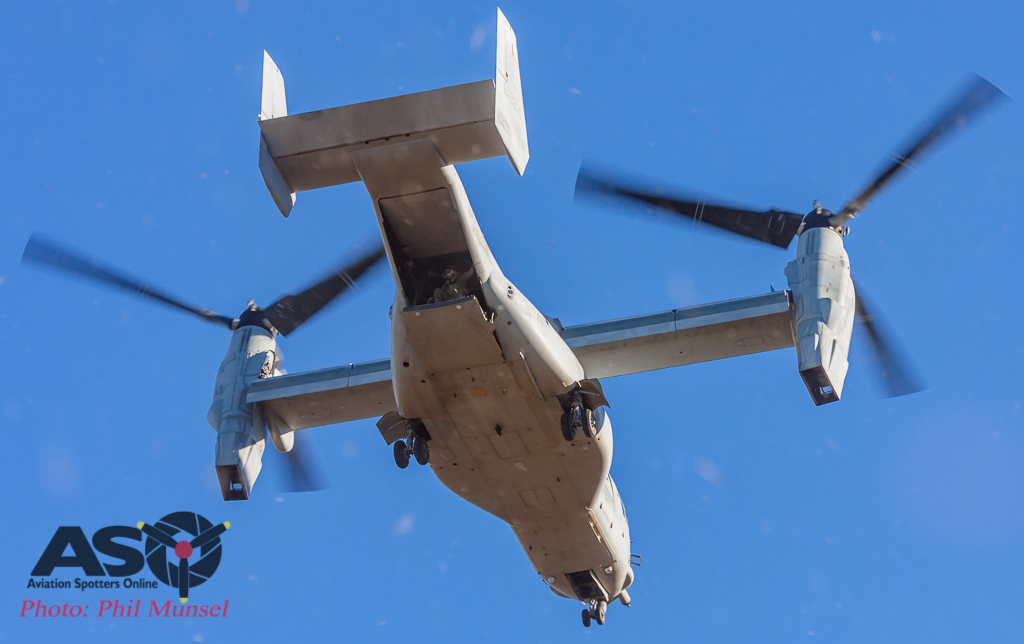
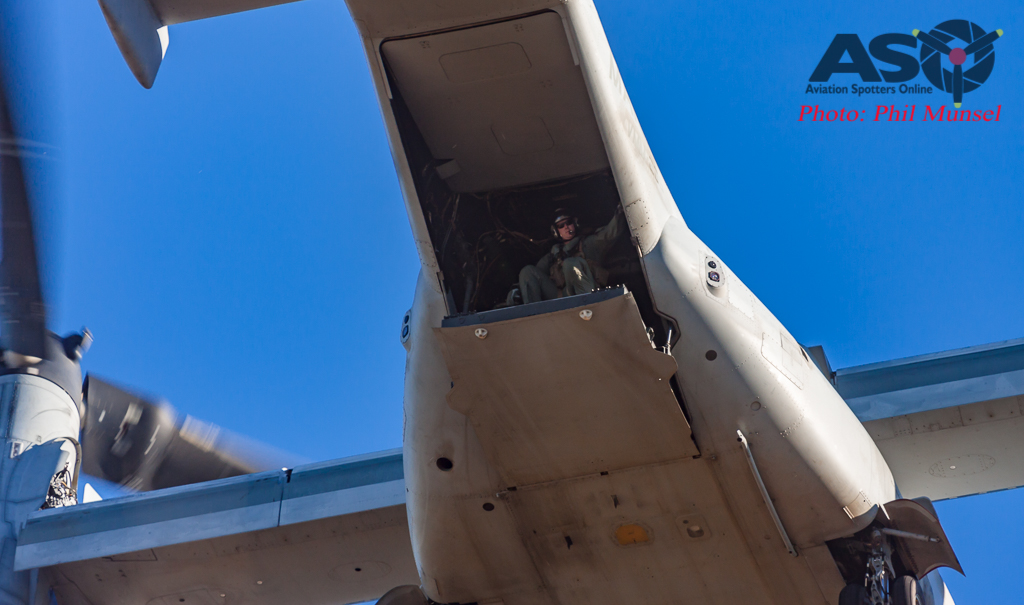
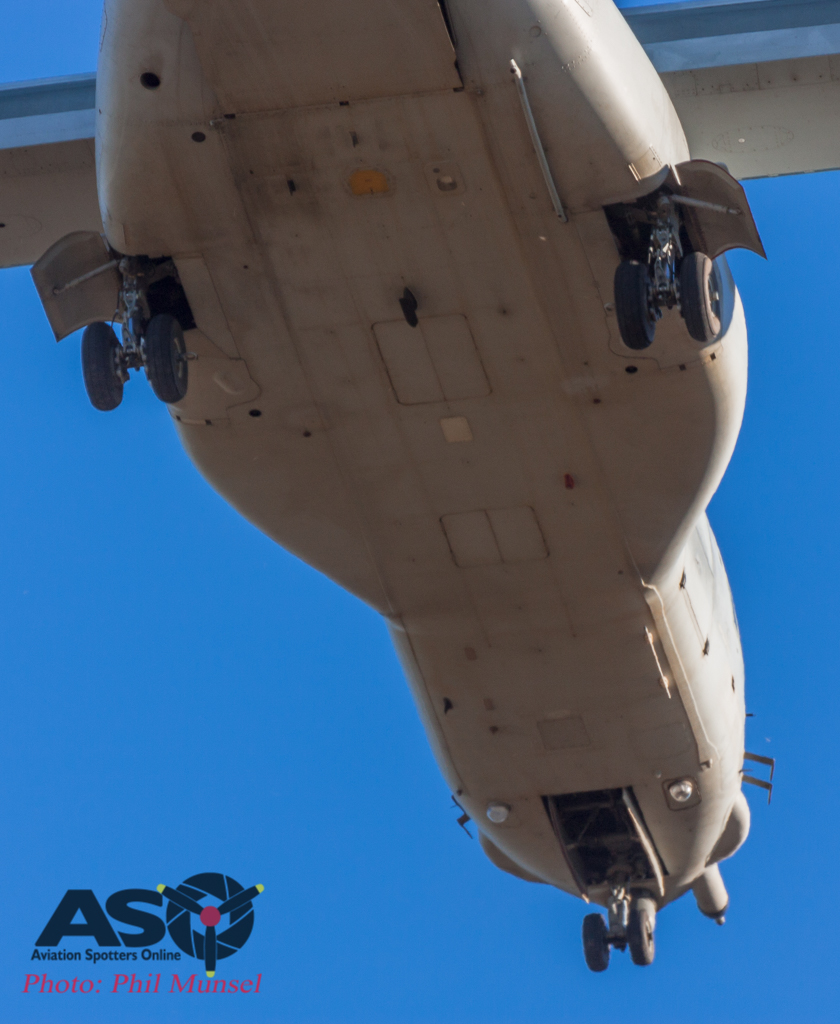

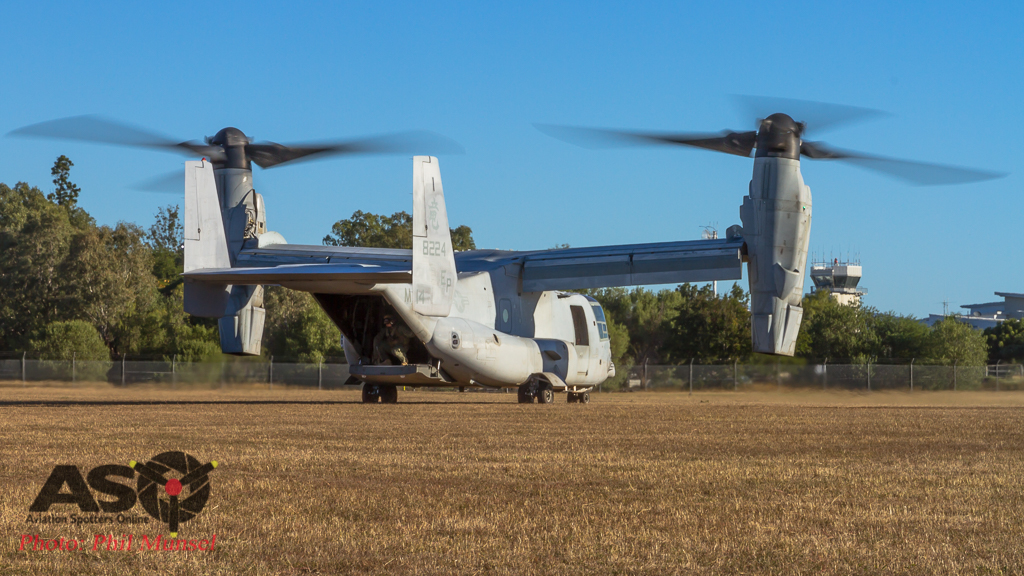


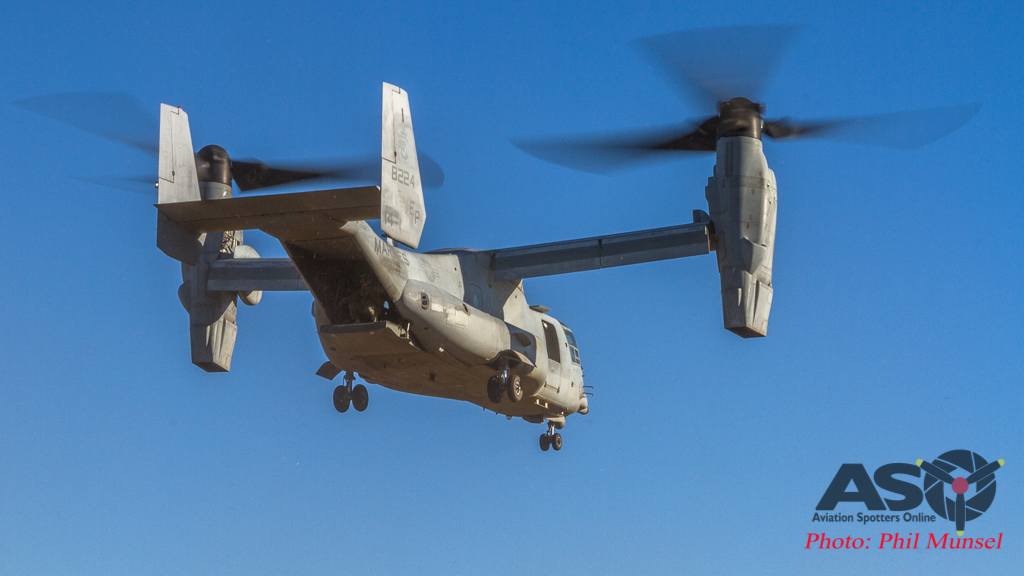






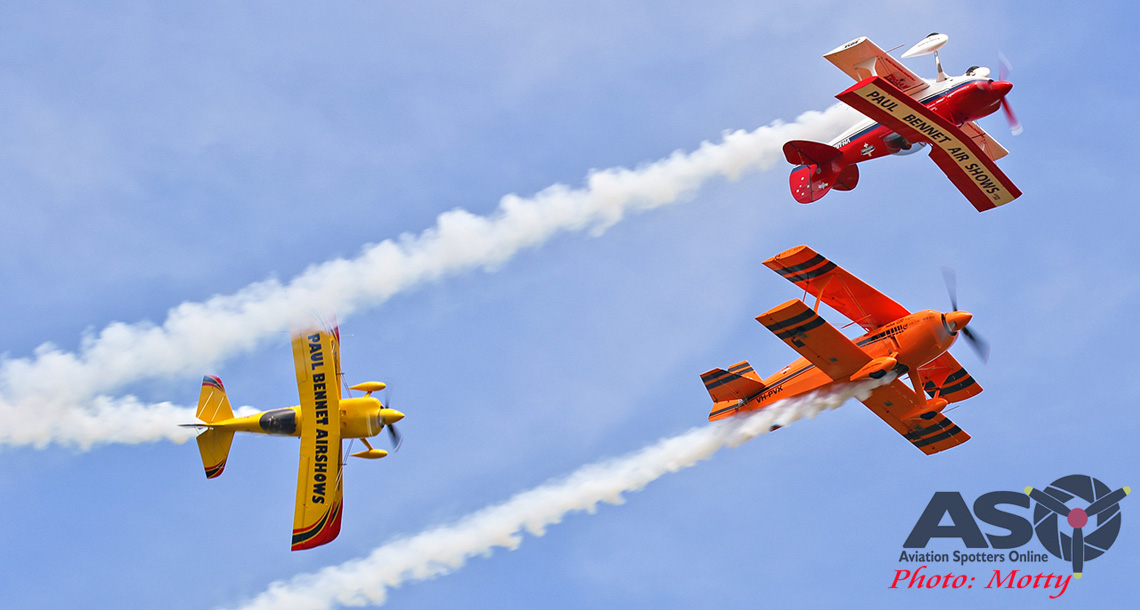







What an awsome & in depth story. Thank you.
Thanks Les, I’d tried to give the feeling that the person reading, is there in the moment!
Phil, your experience and photographs make up for the fact that we cannot replicate such a ride.
Thank you for your ability and availability to take on that task with such a professional style. And thanks to the USMC that allowed such a visit to take place.
Bevan thank you for your kind words. I’m glad you taken something out of this, I felt this experience needed to be shared in away for others to feel the same. Not everyone gets the chance to see these sought of operations.